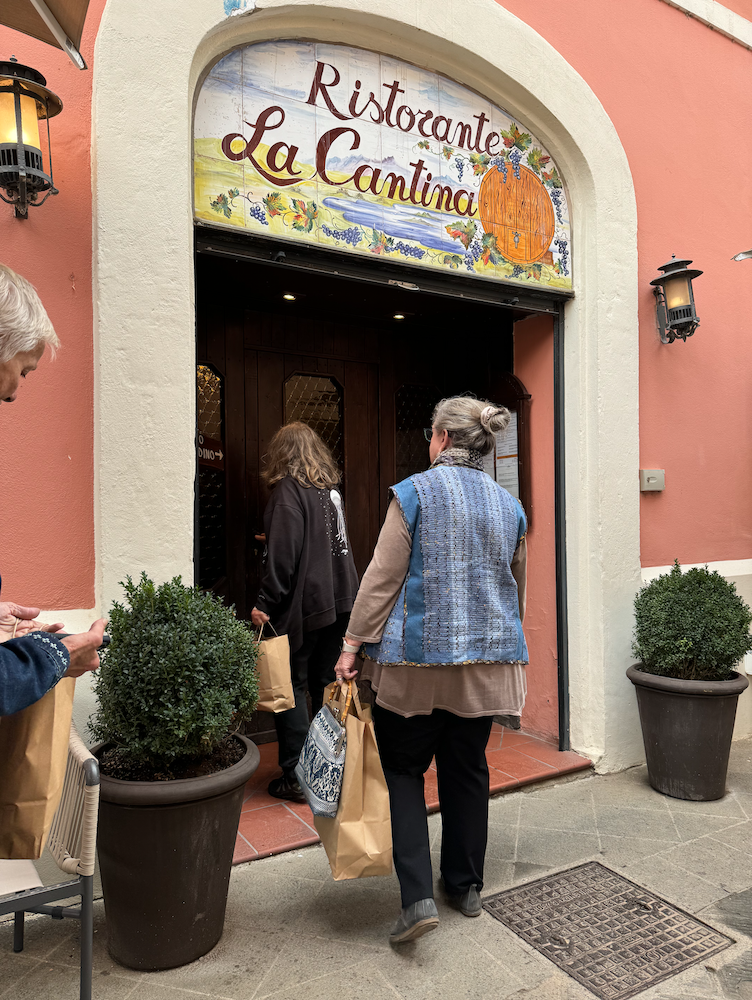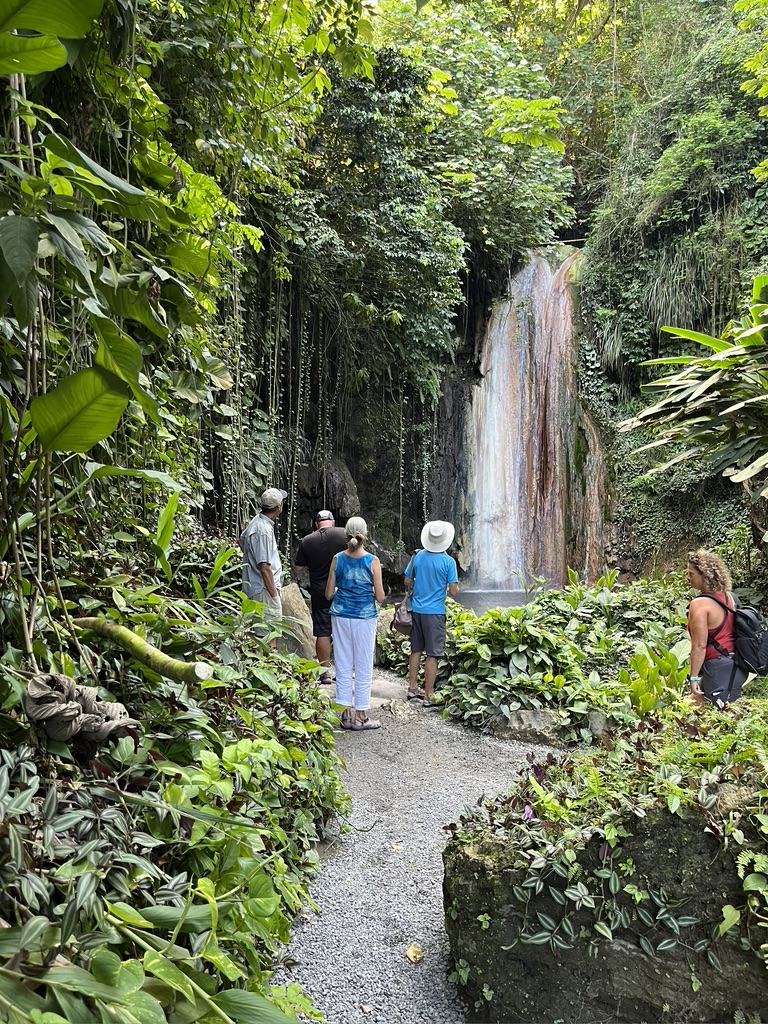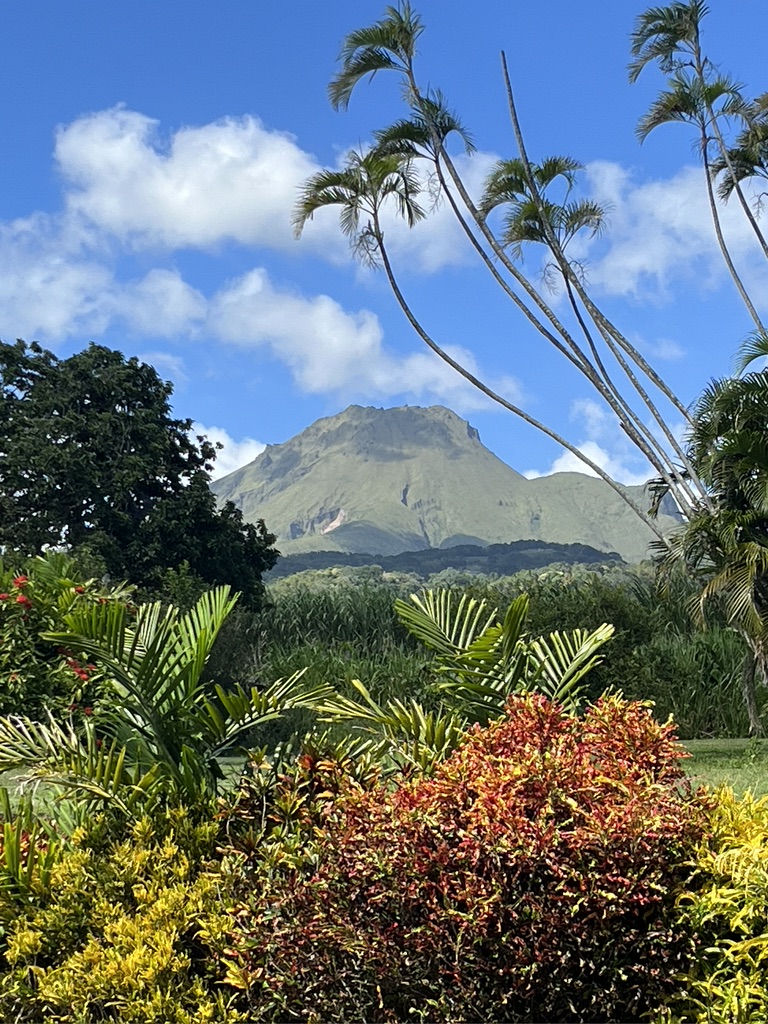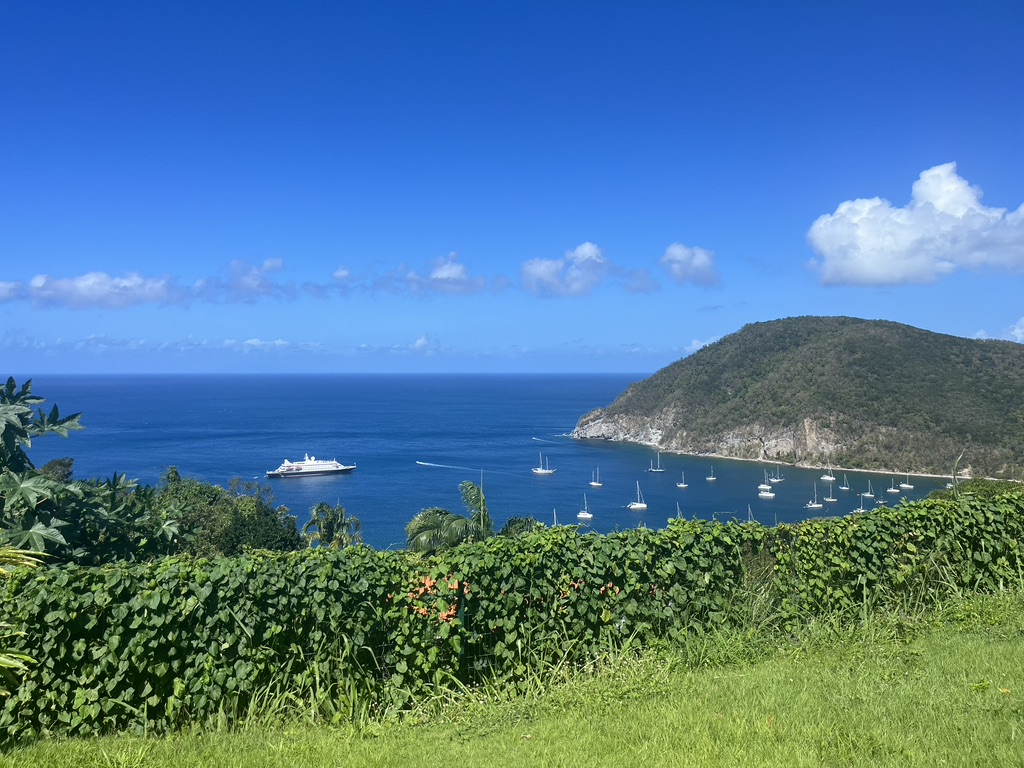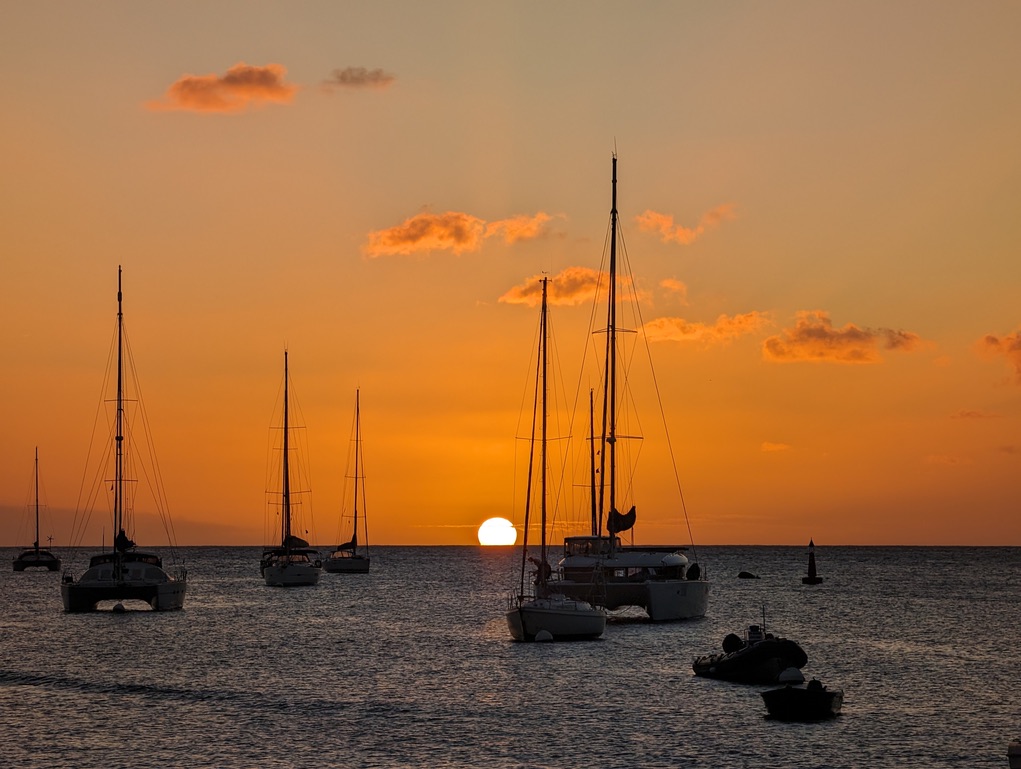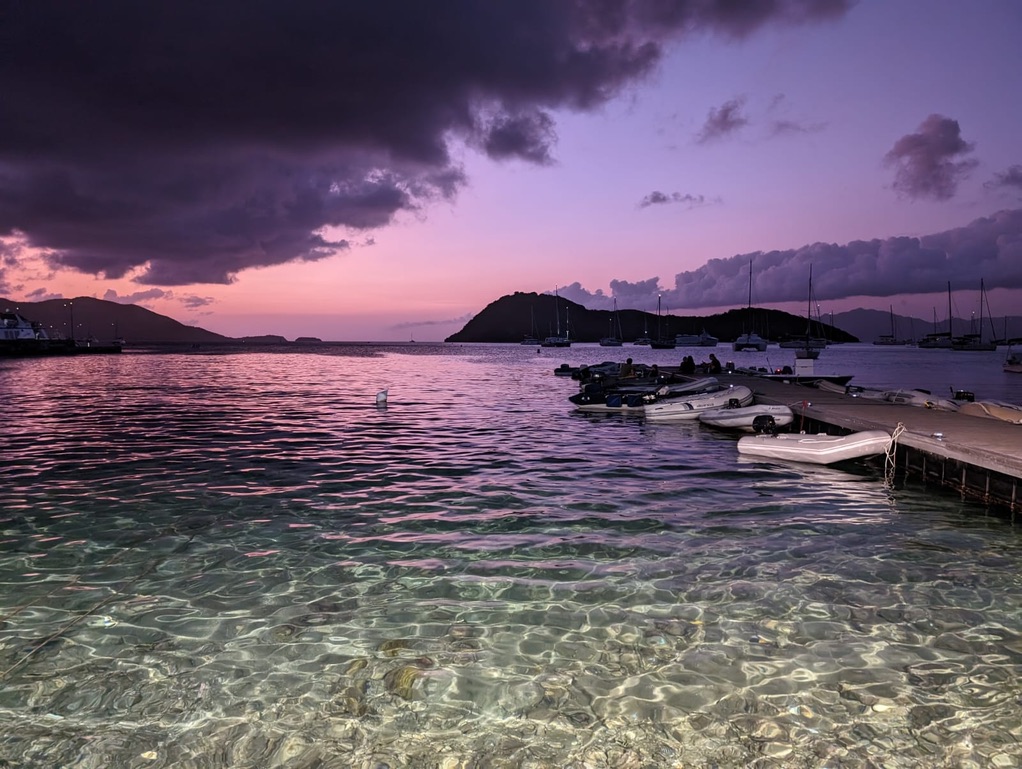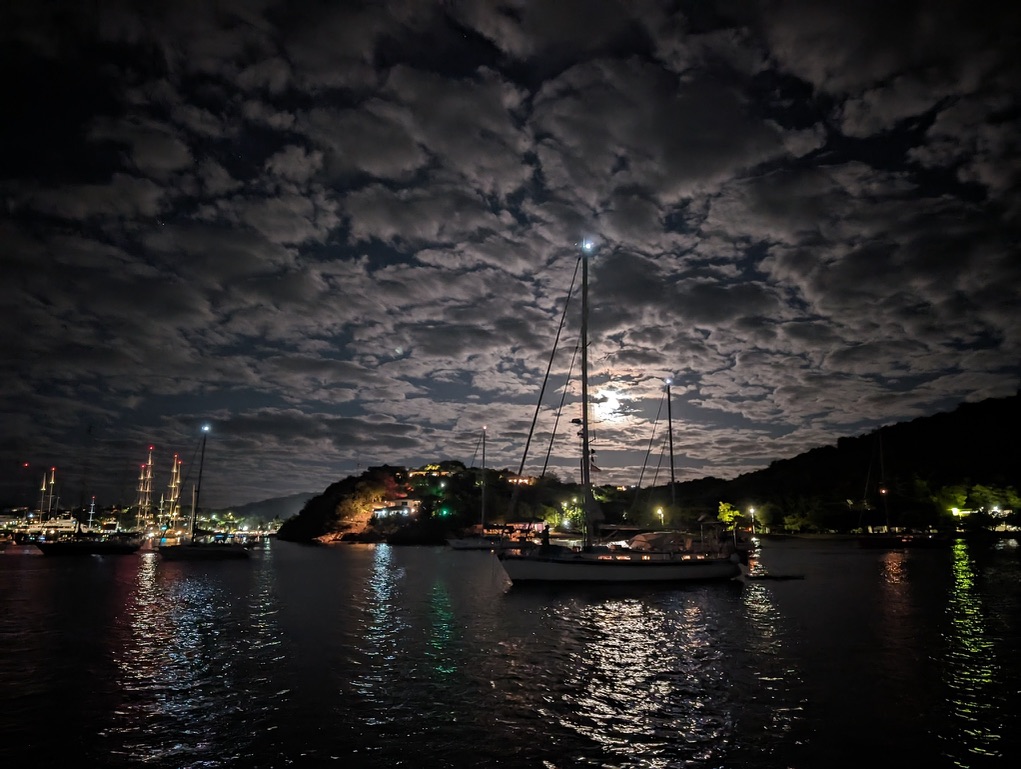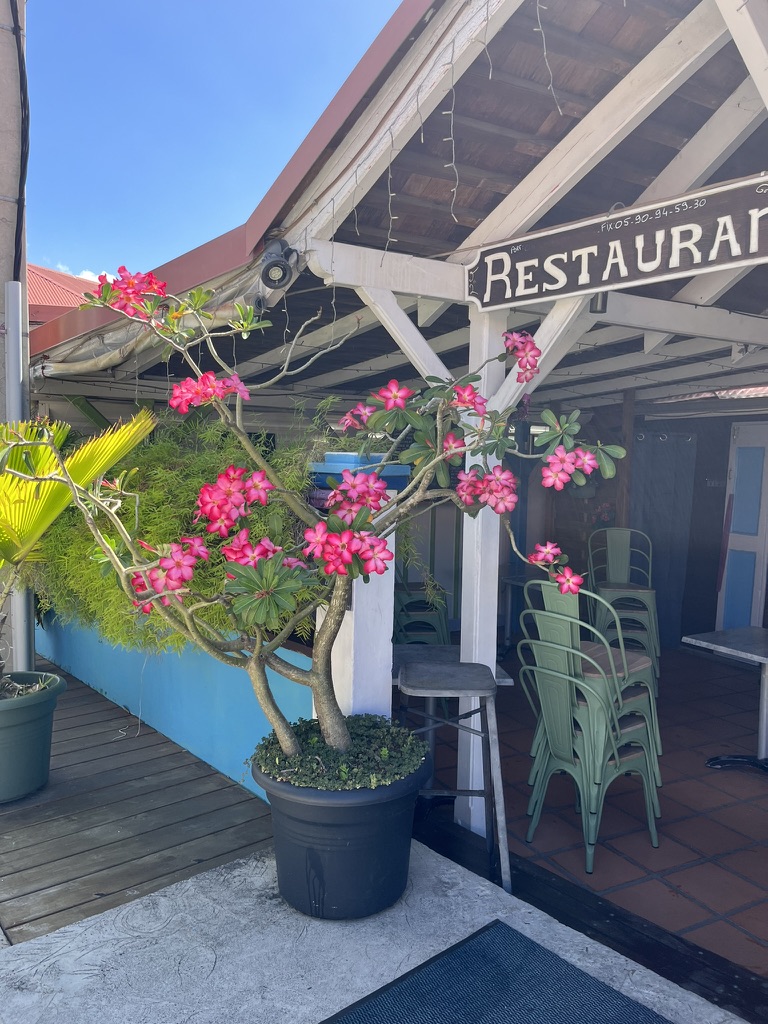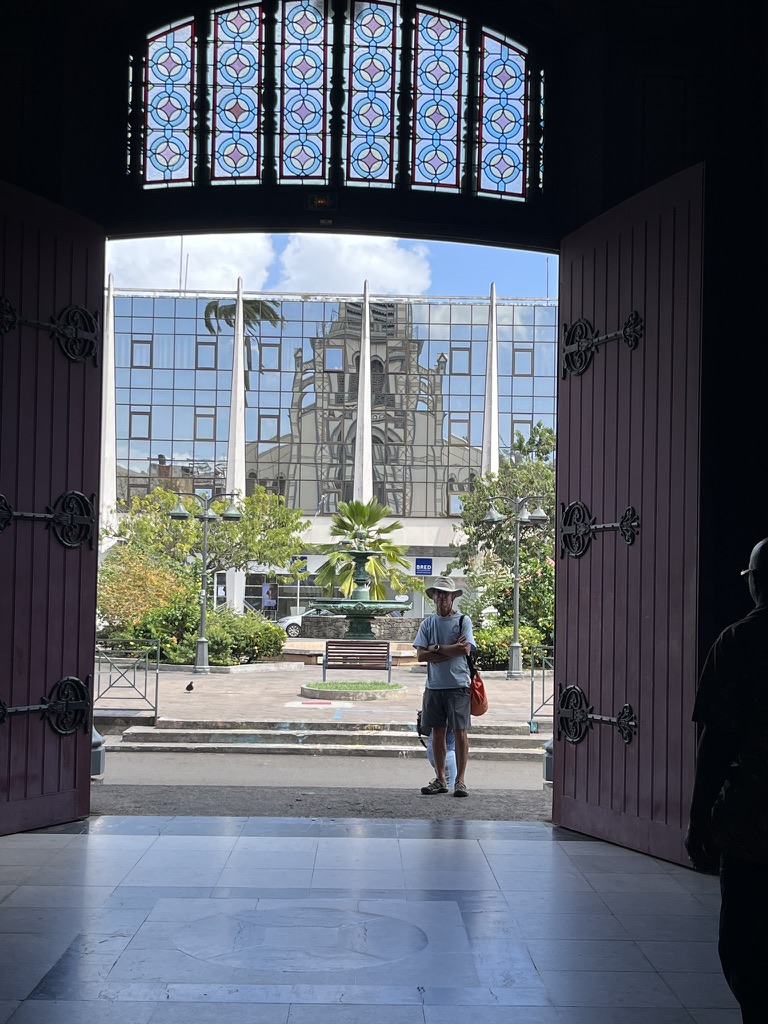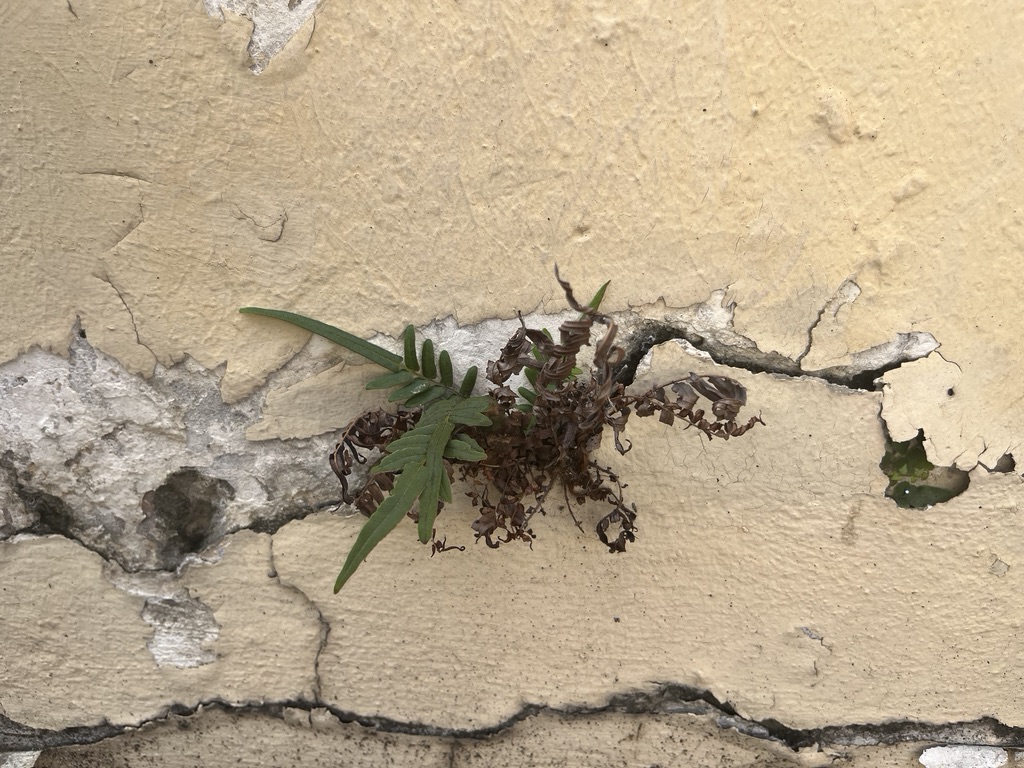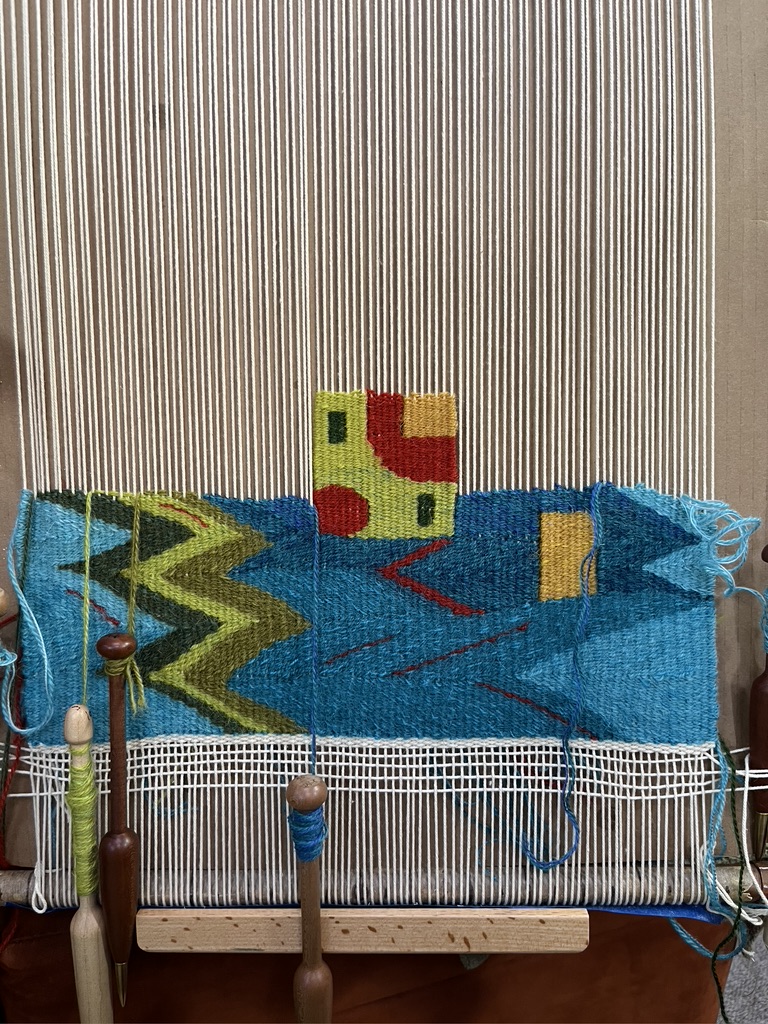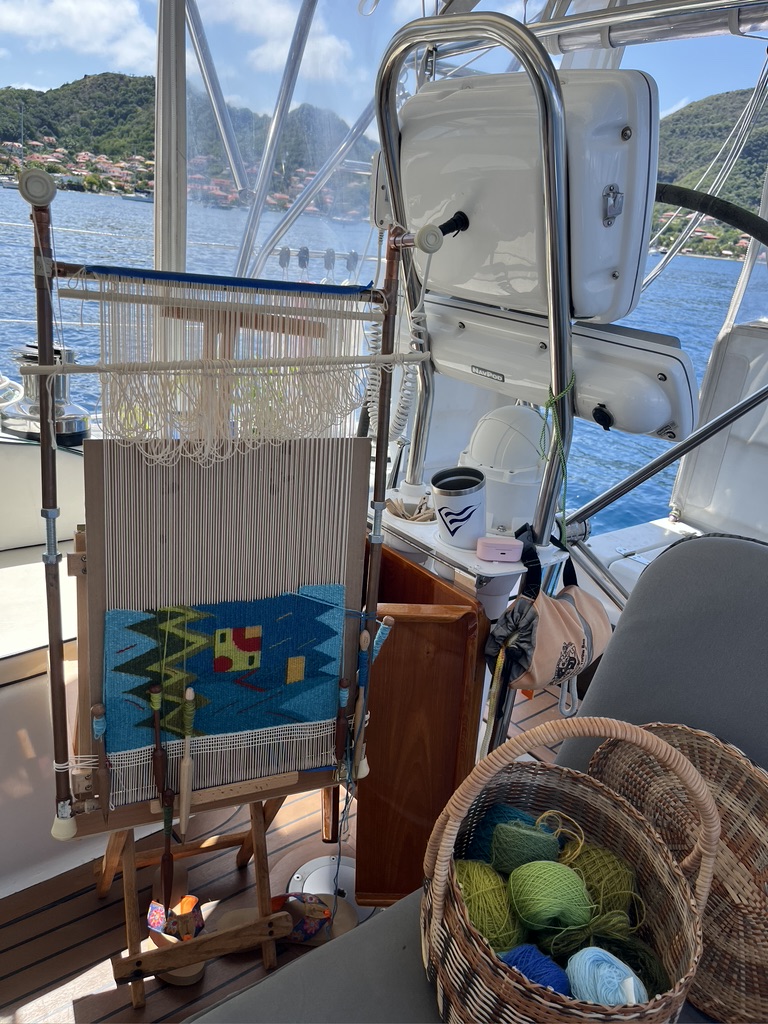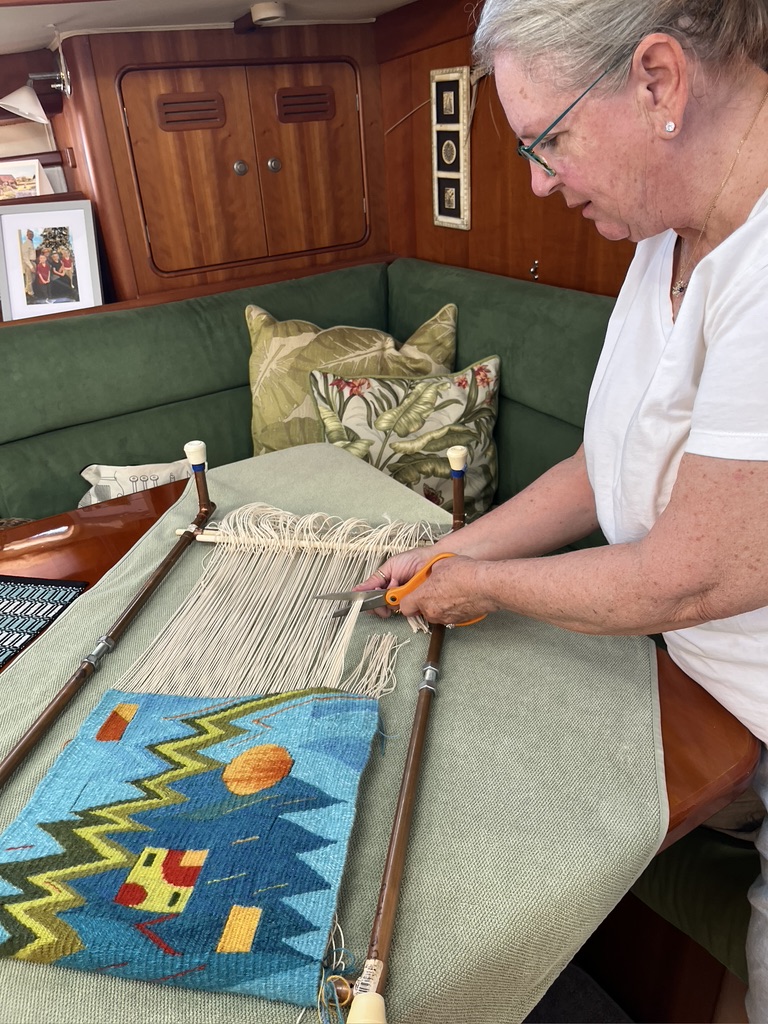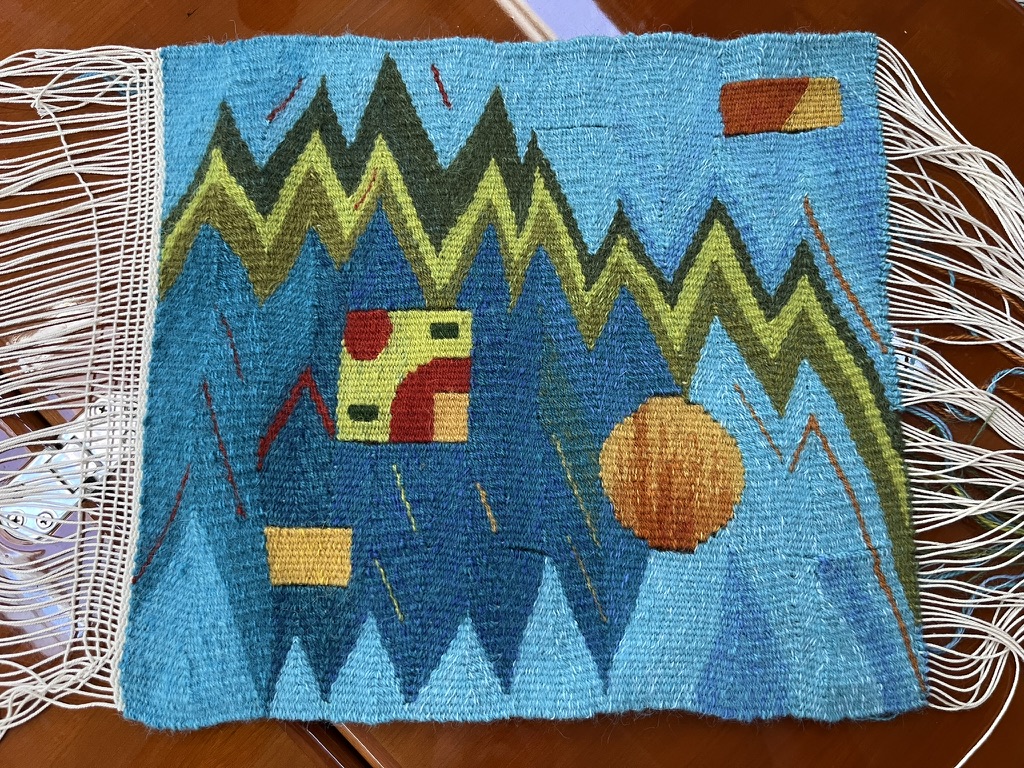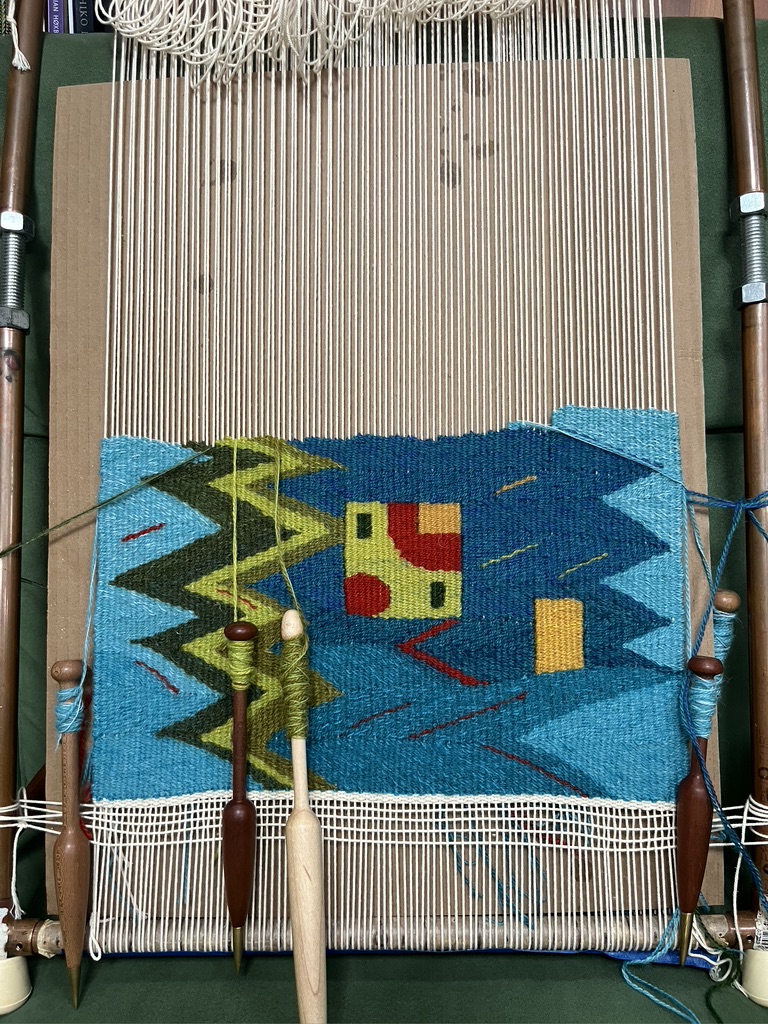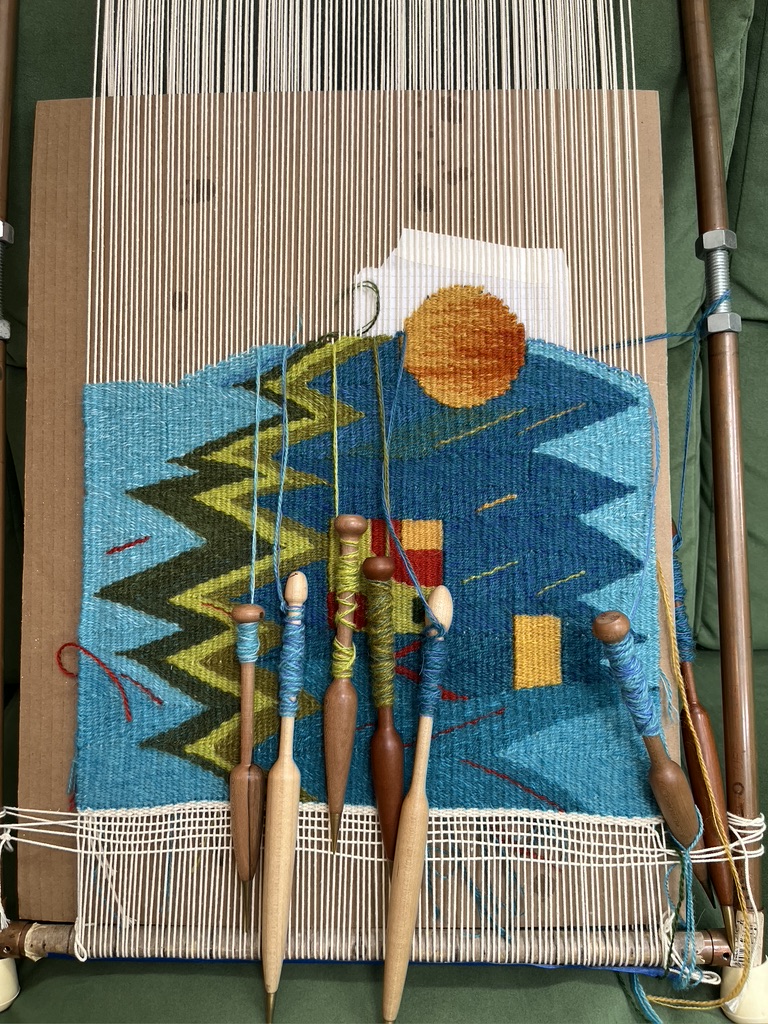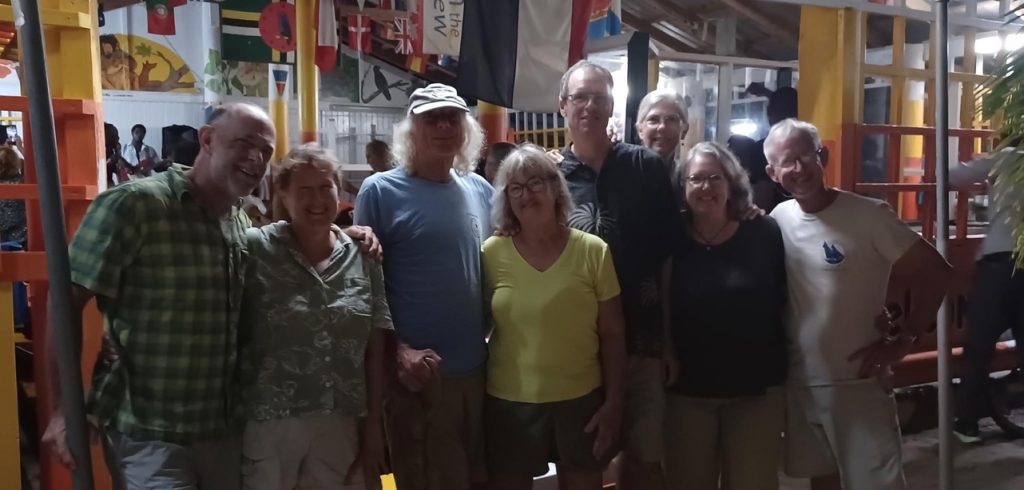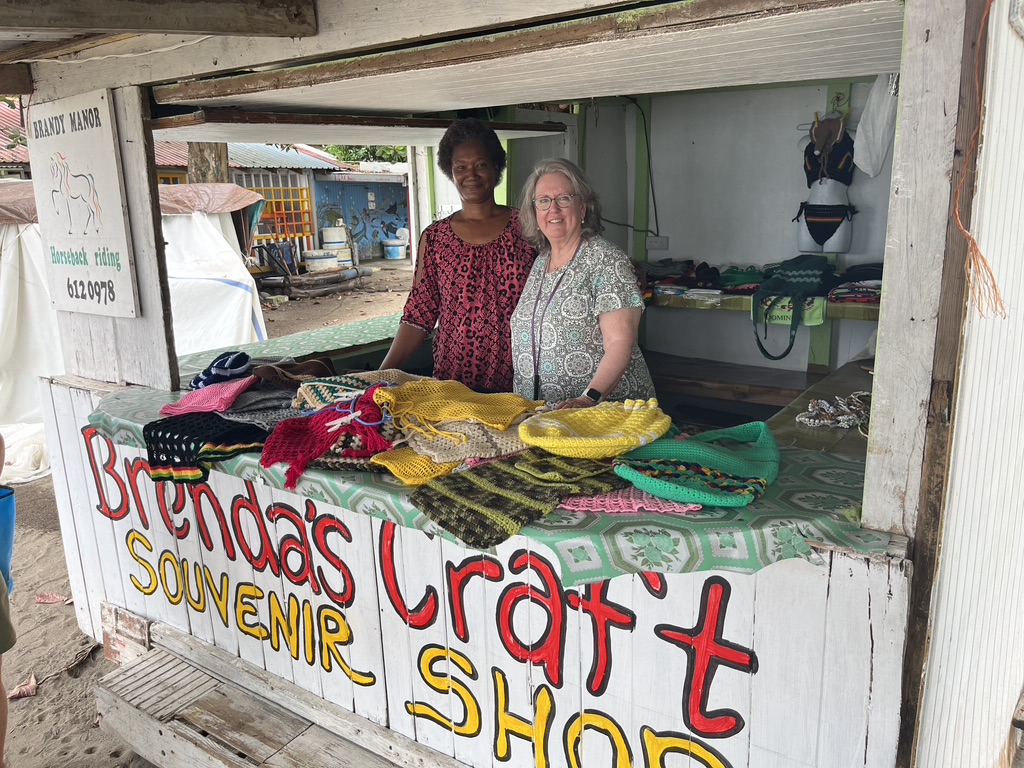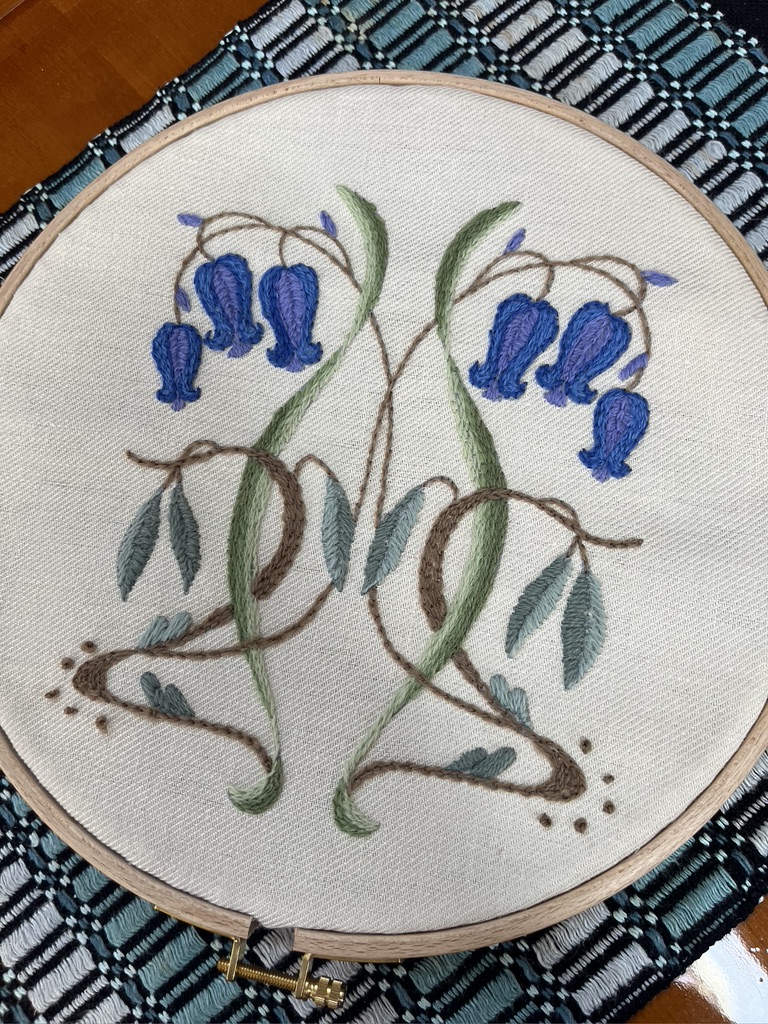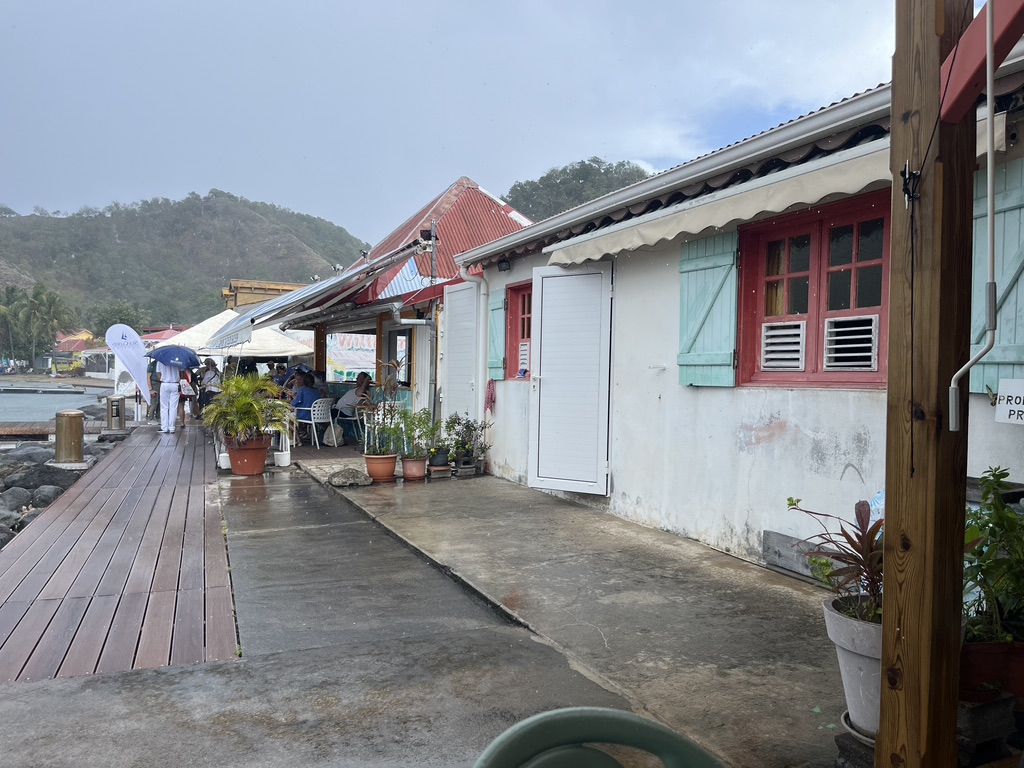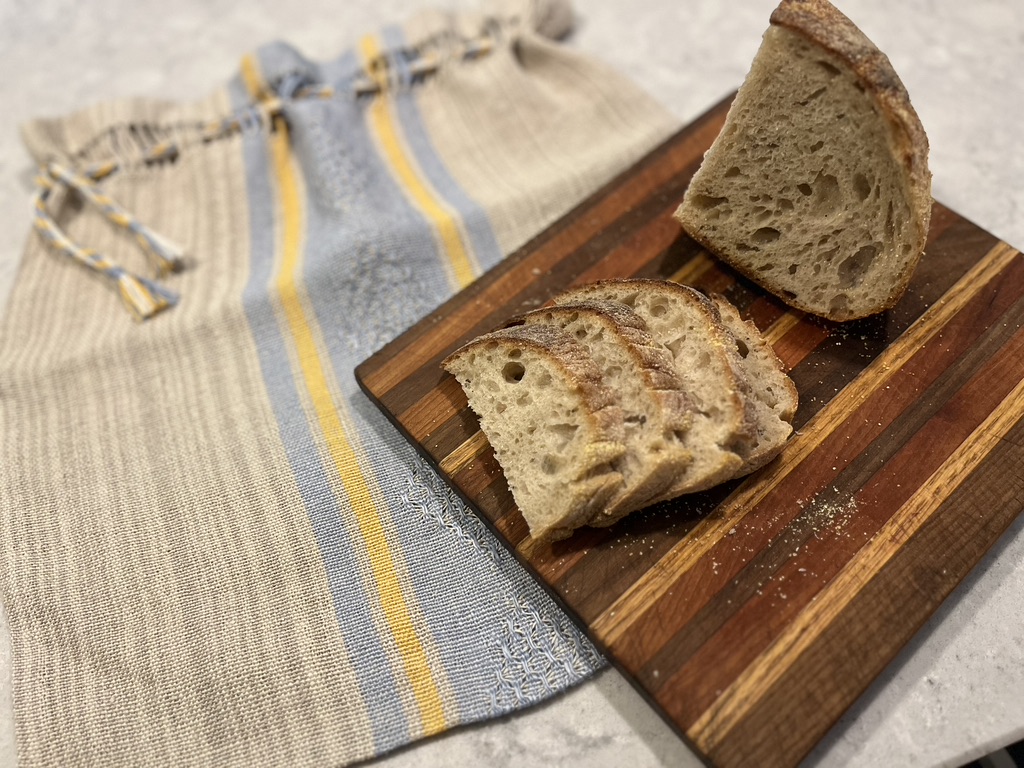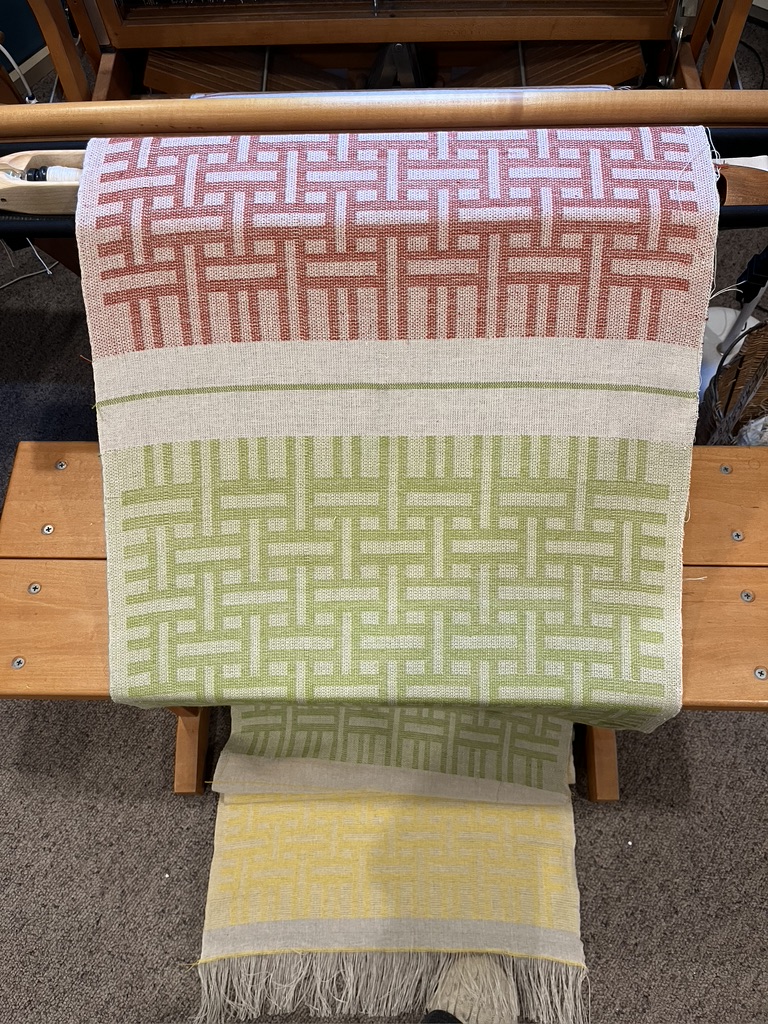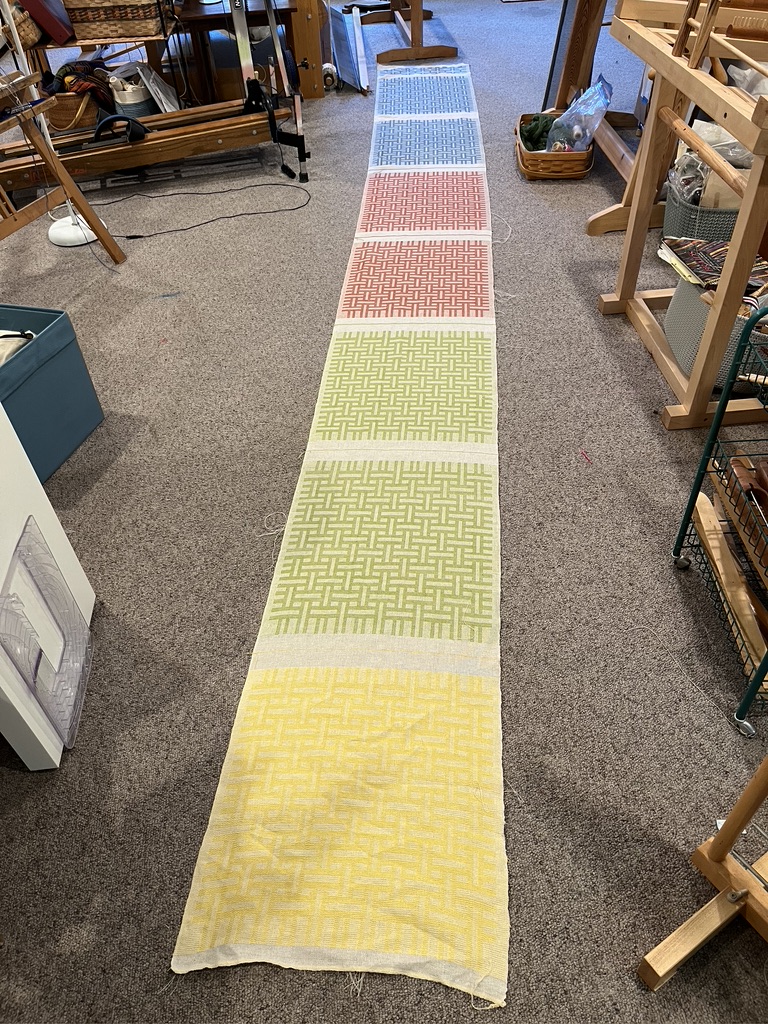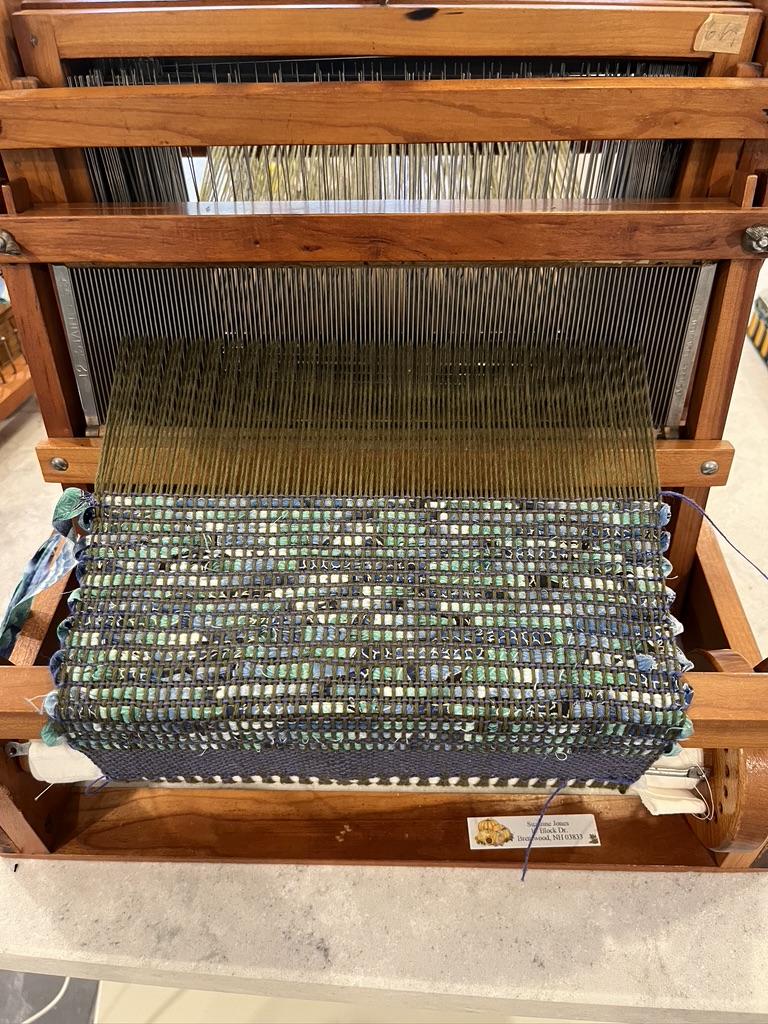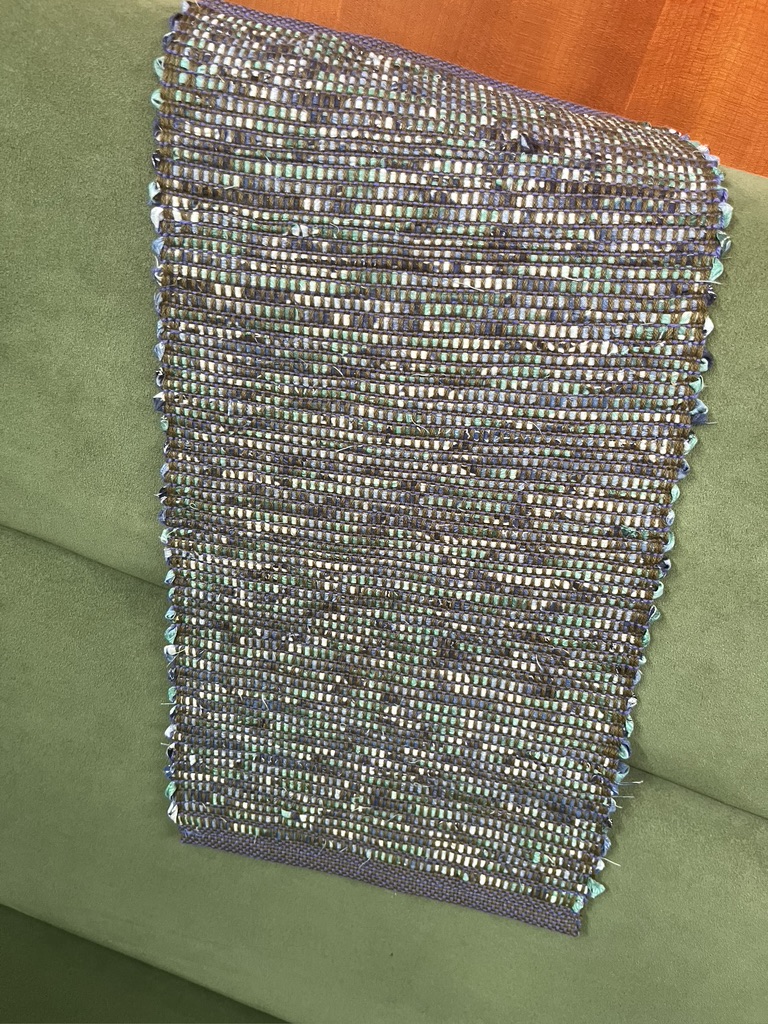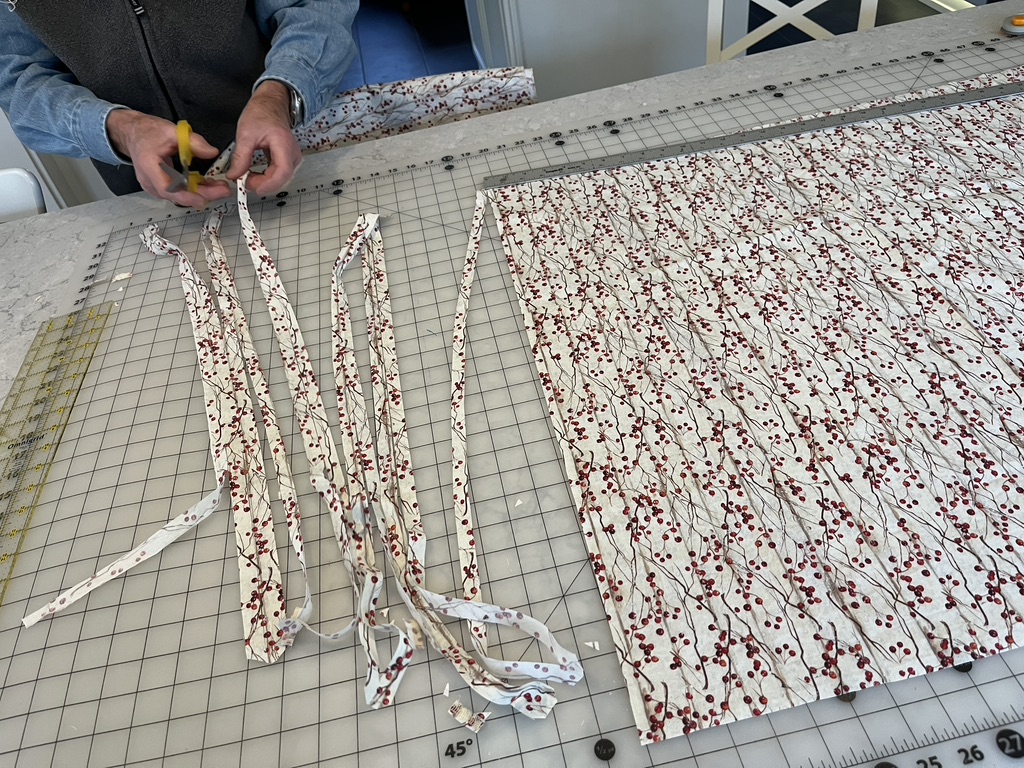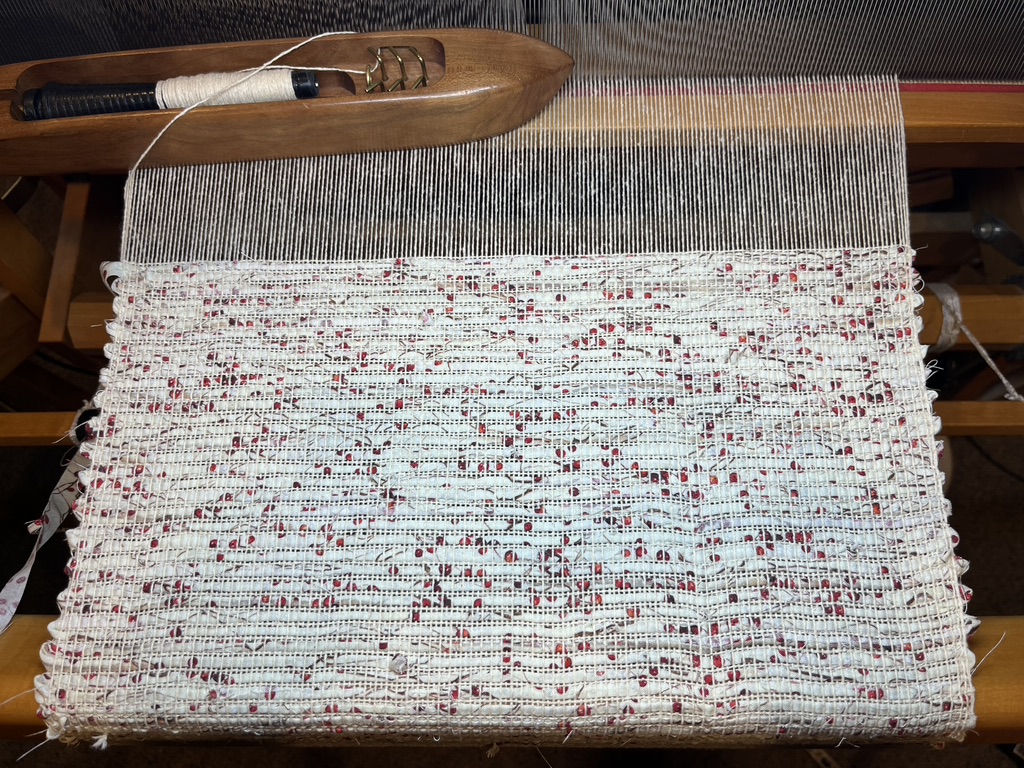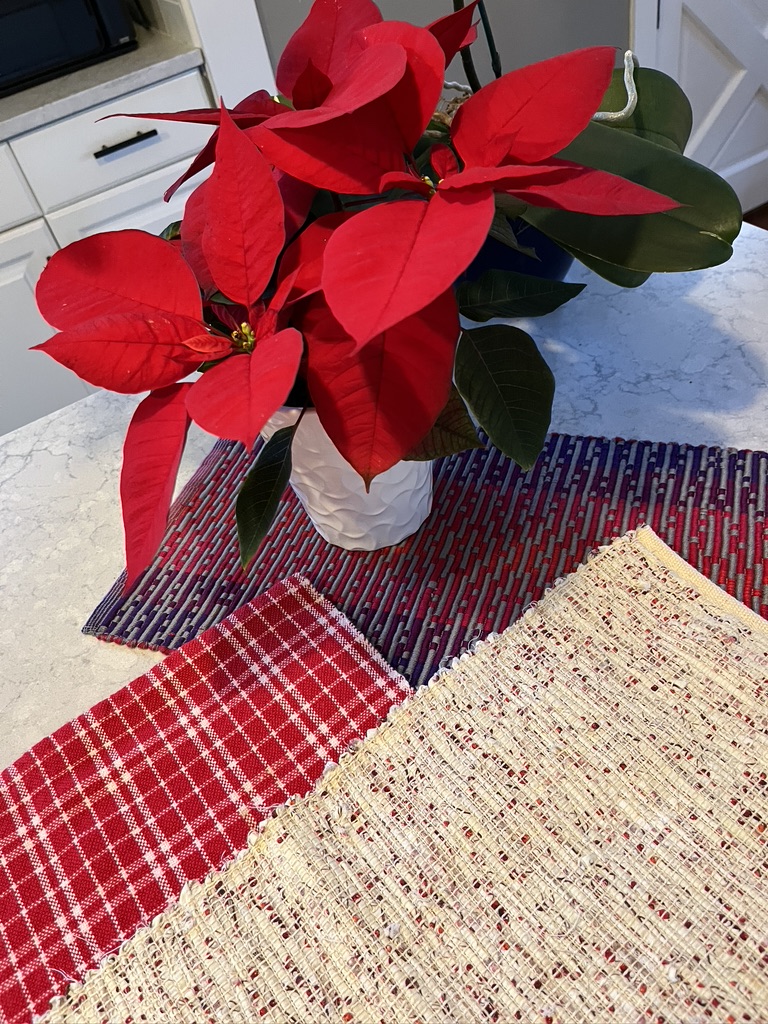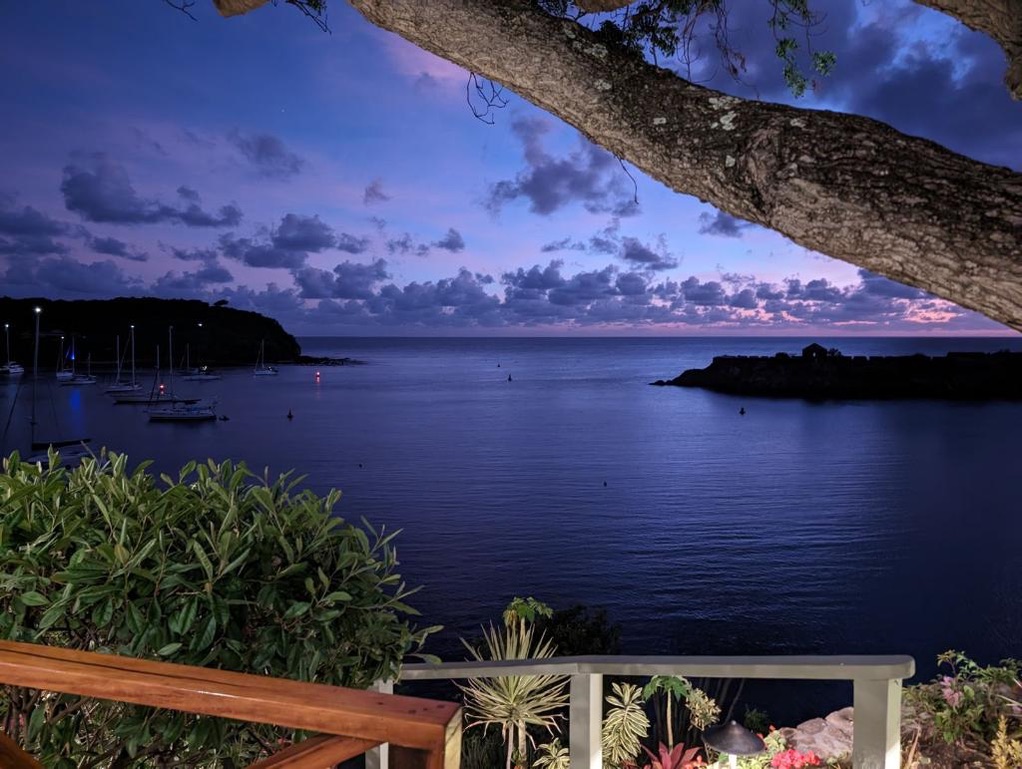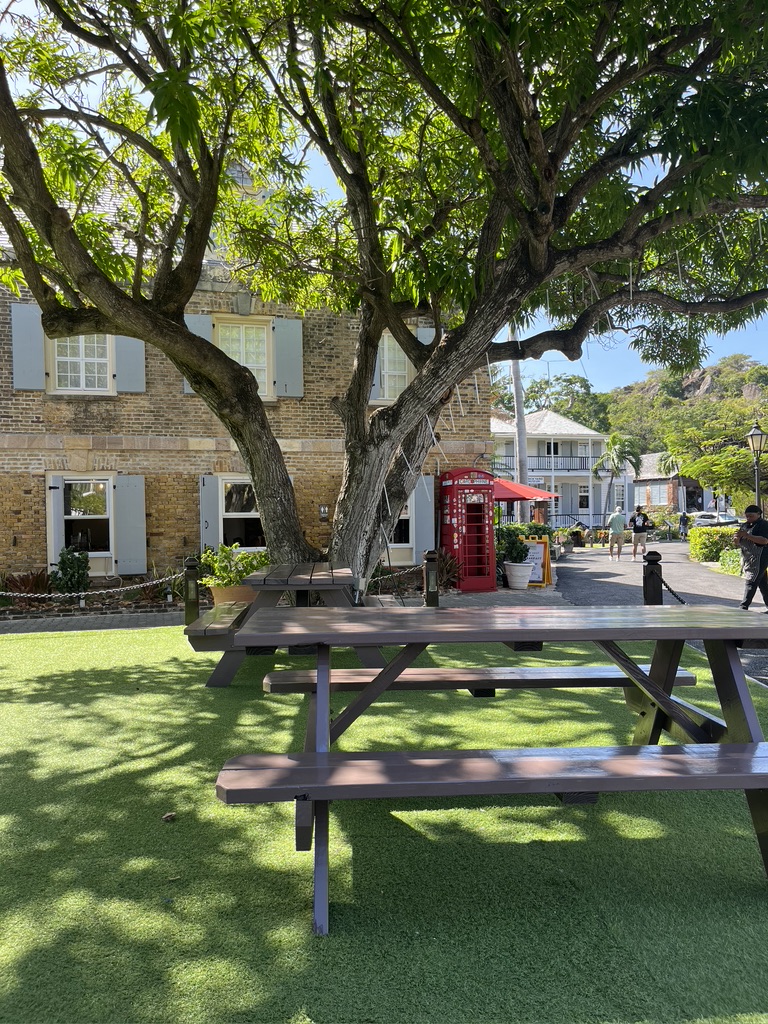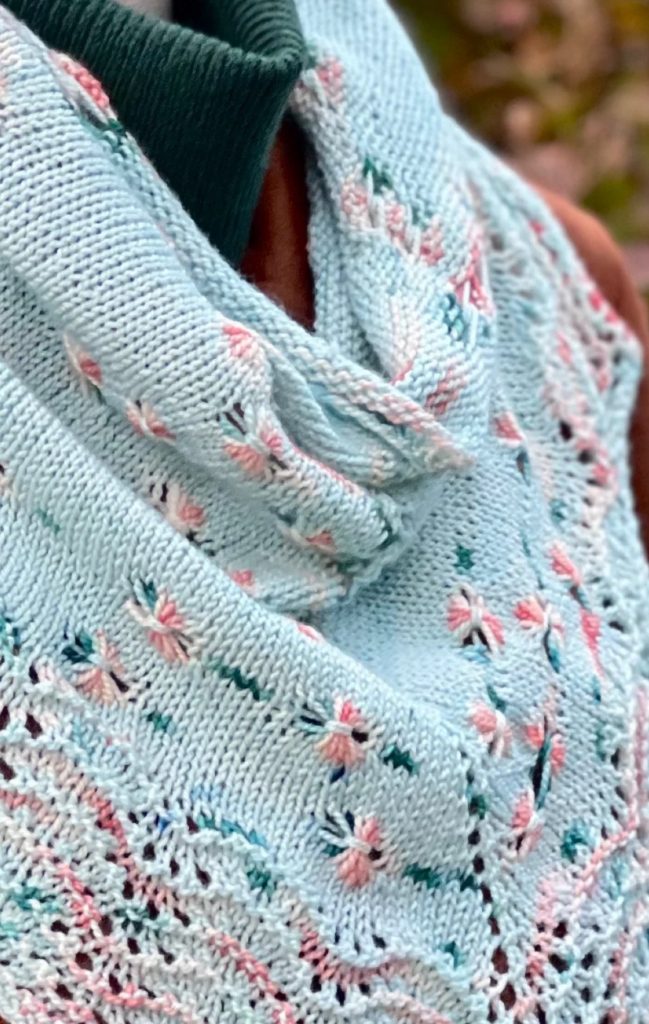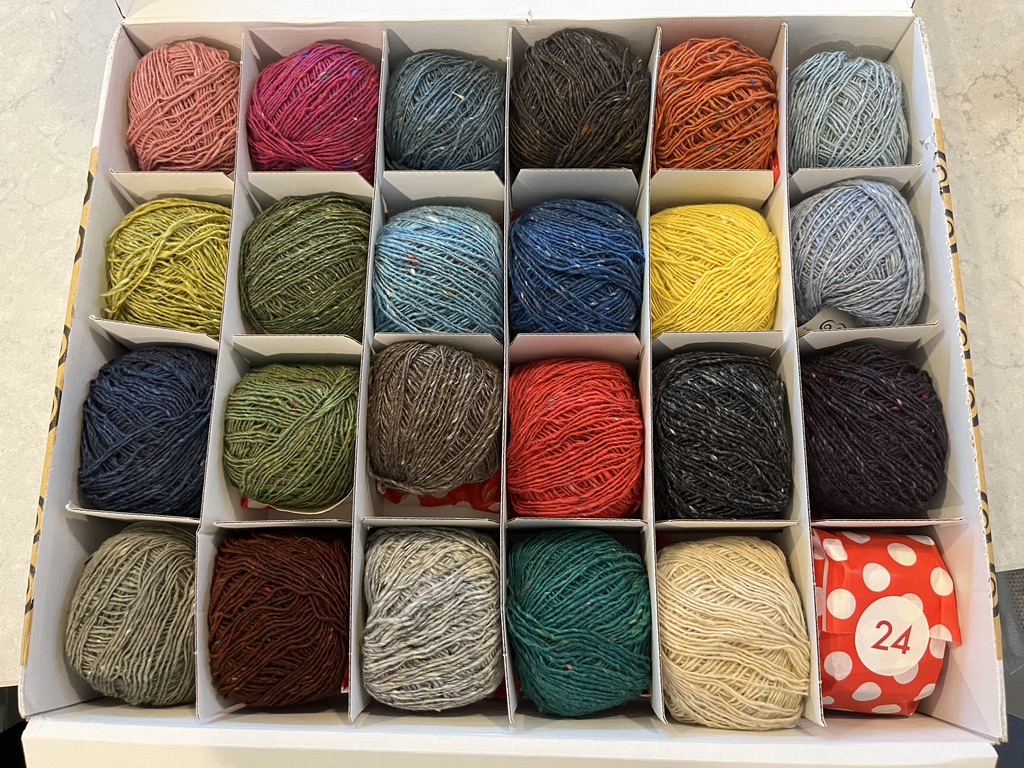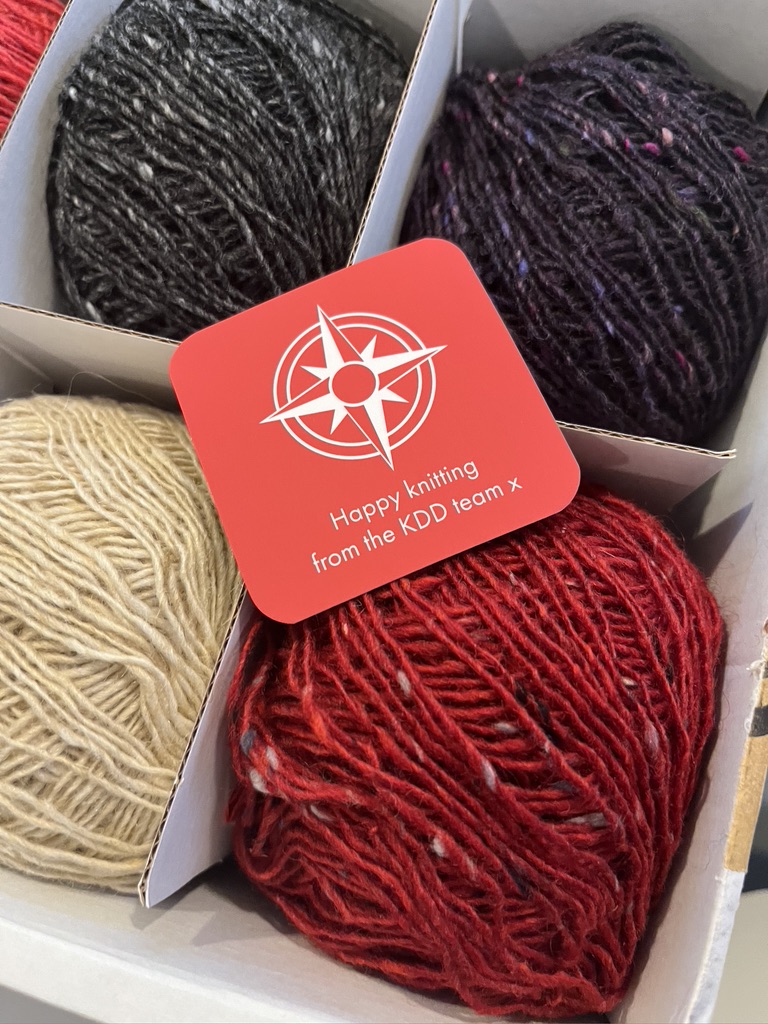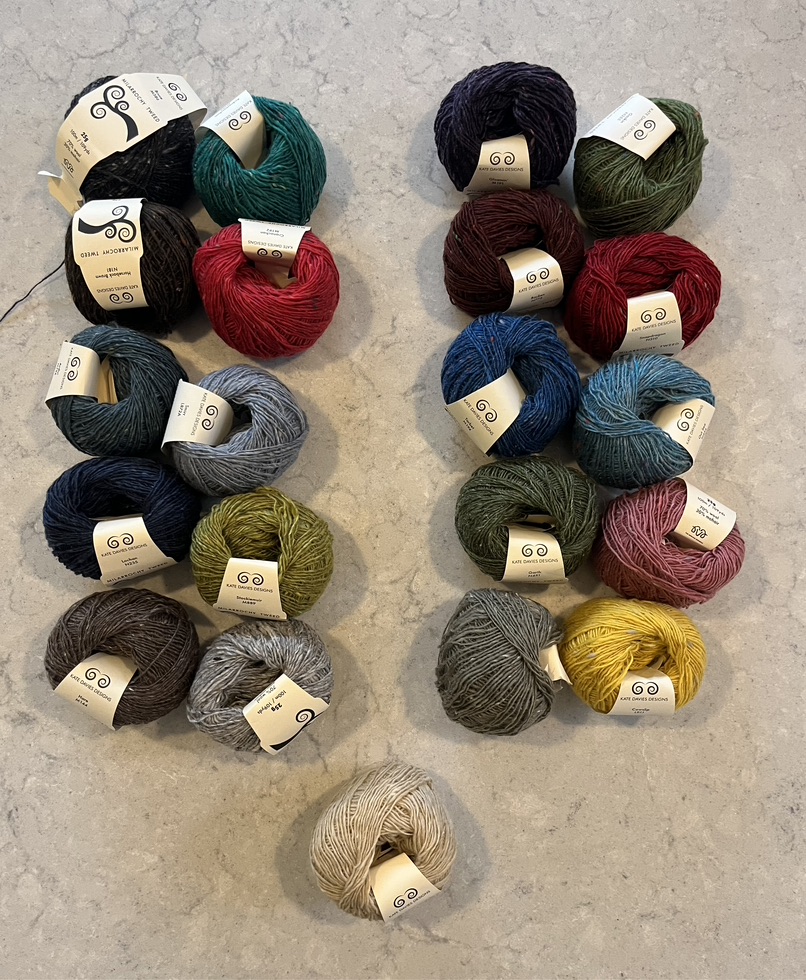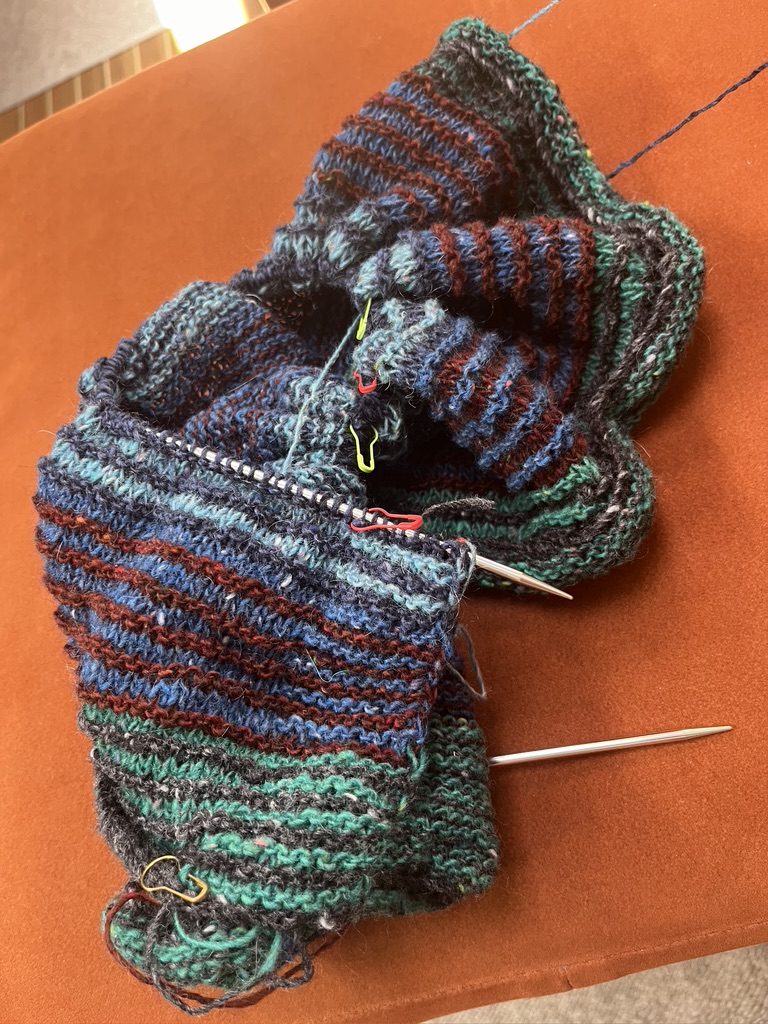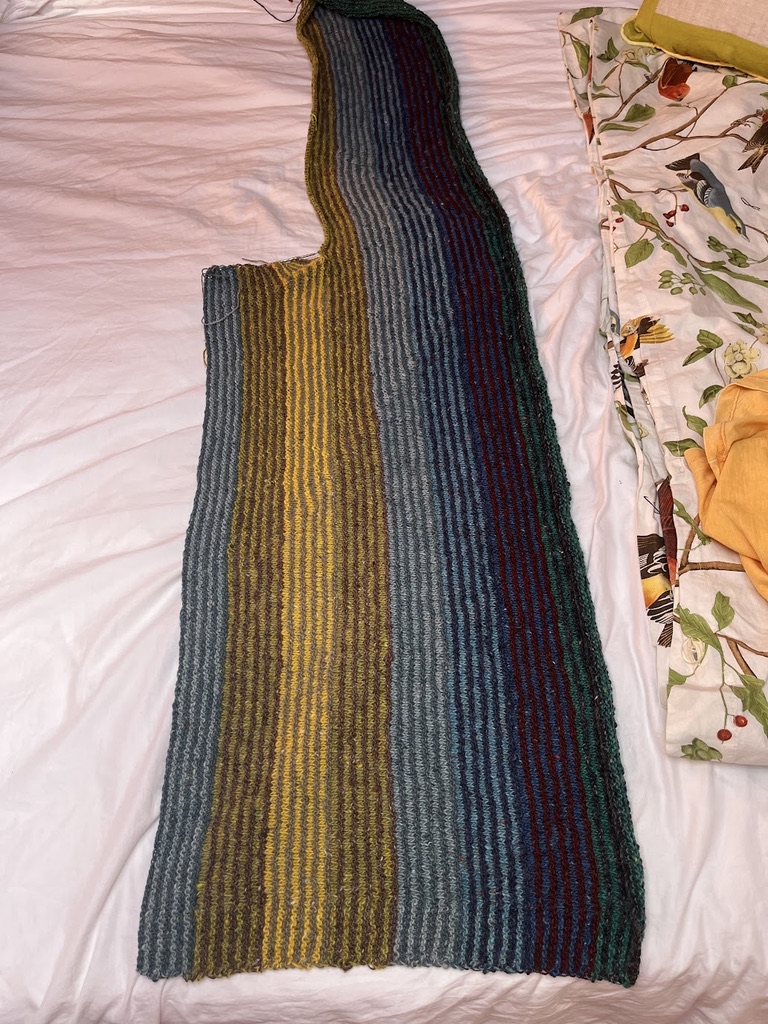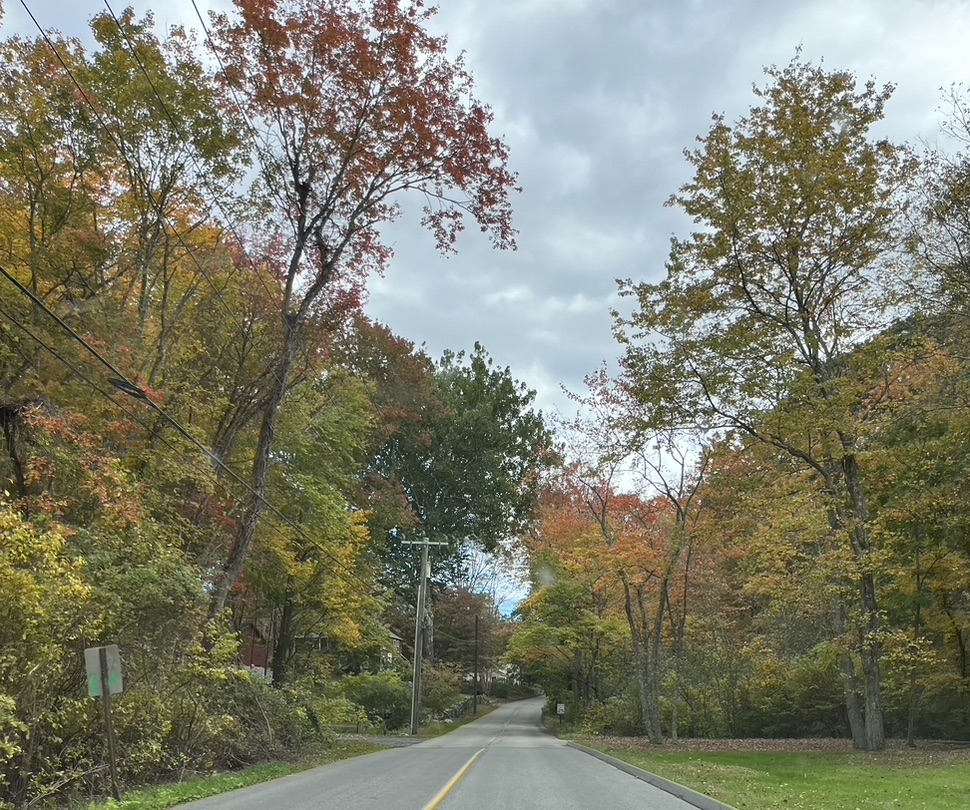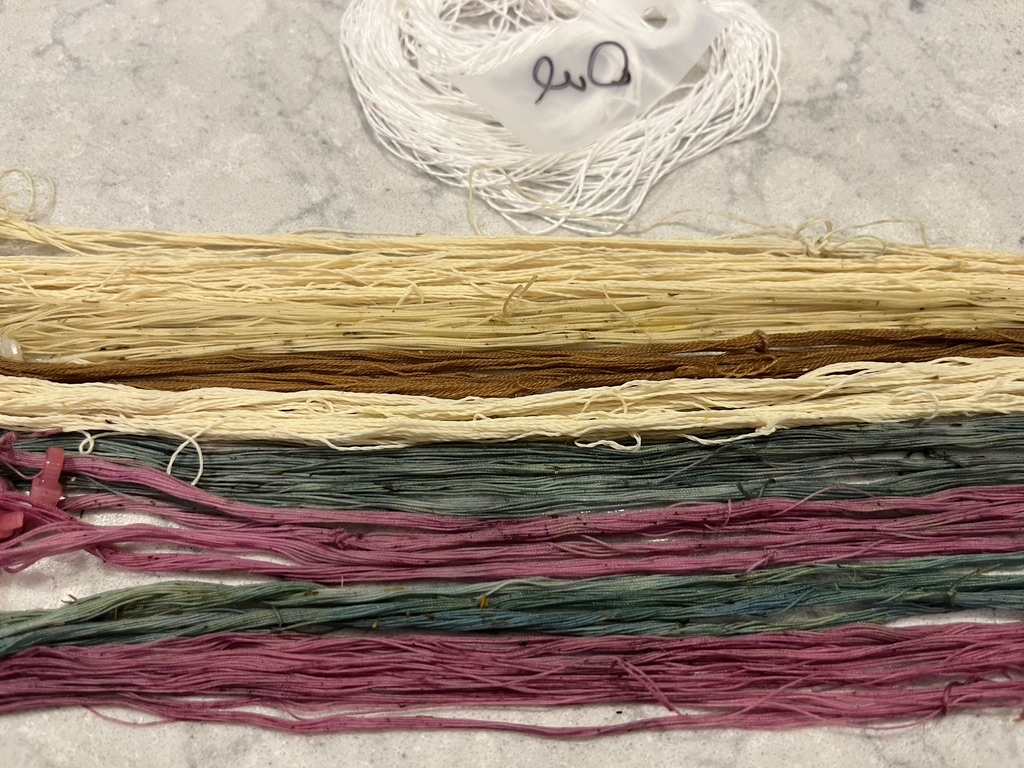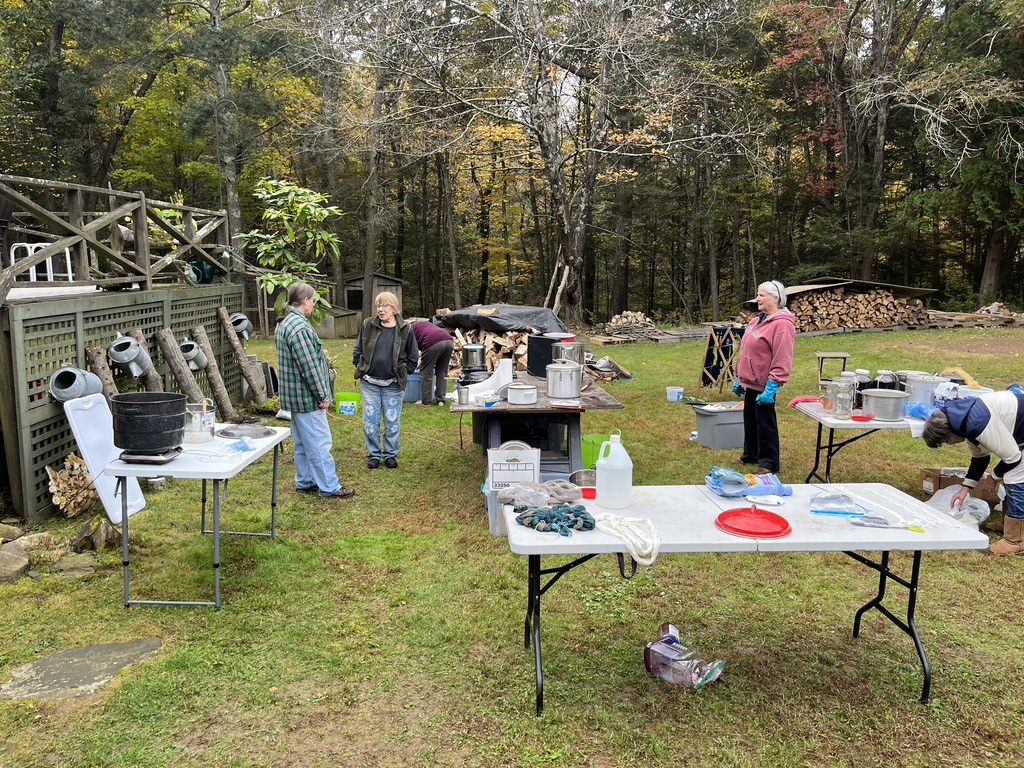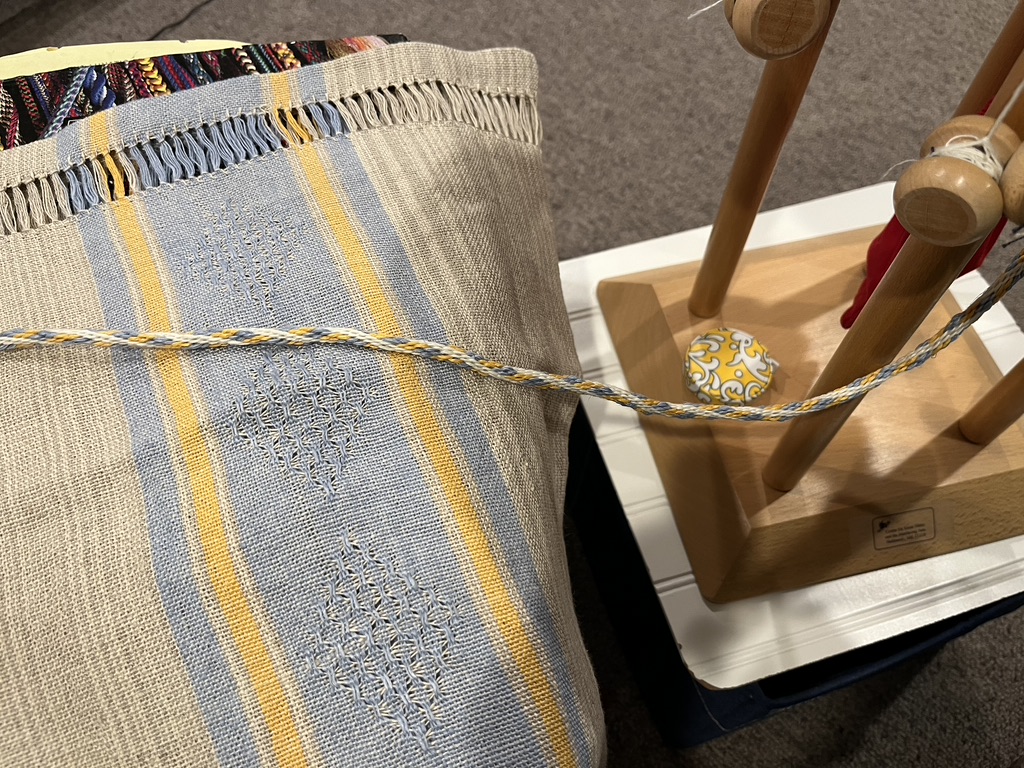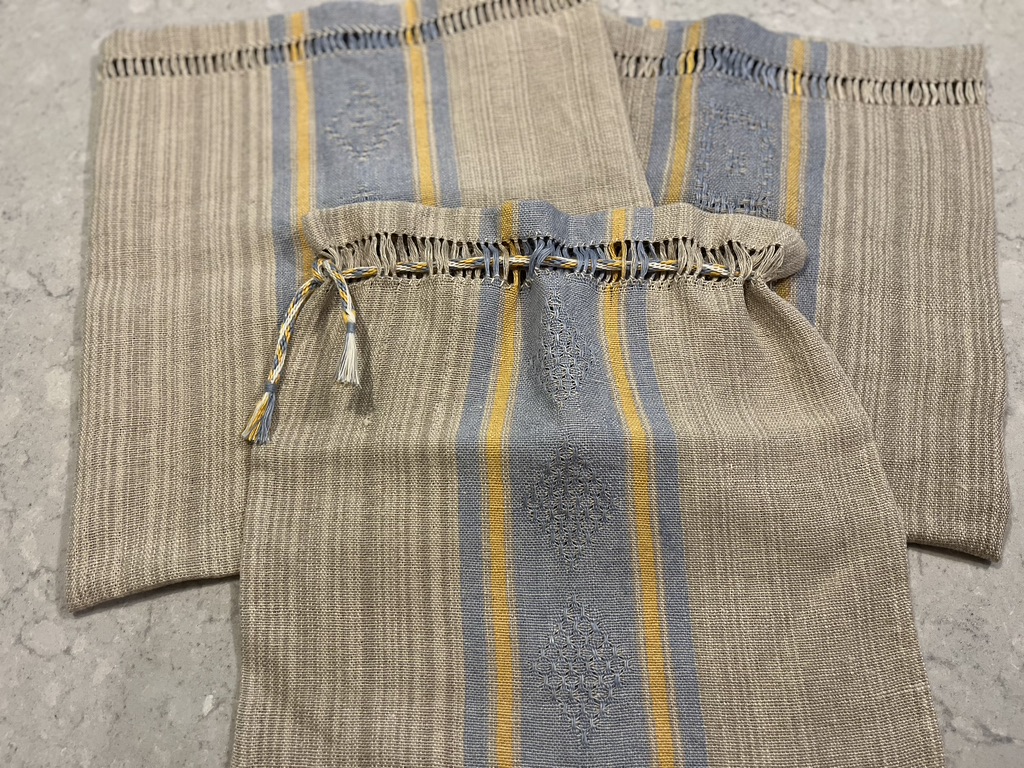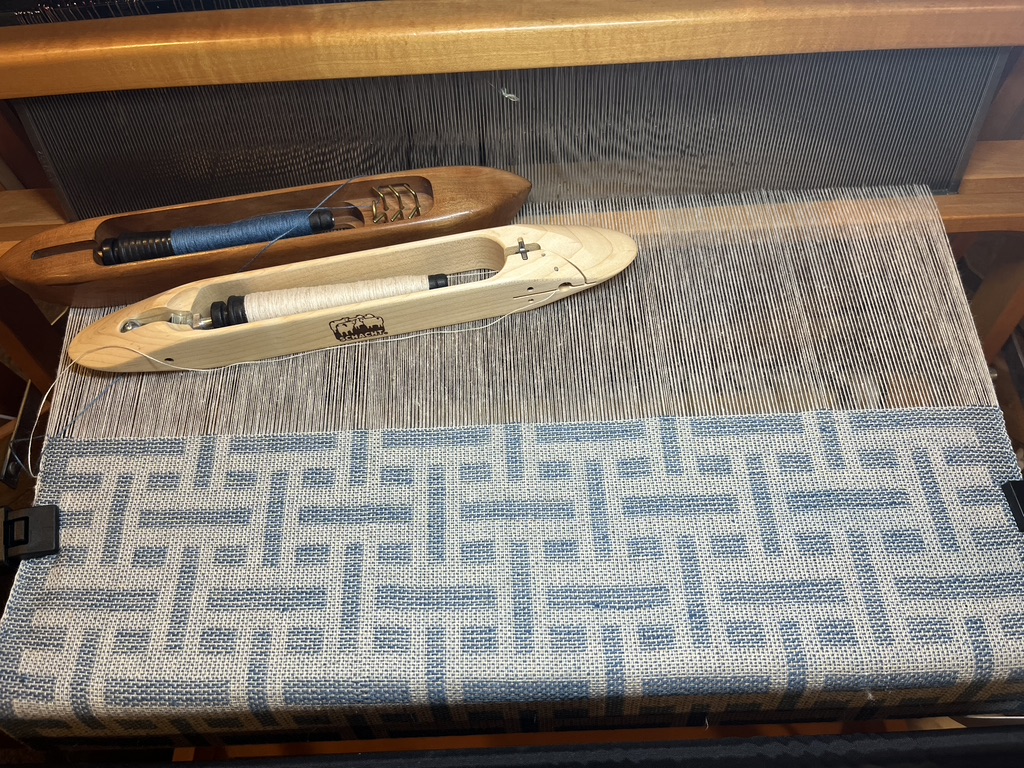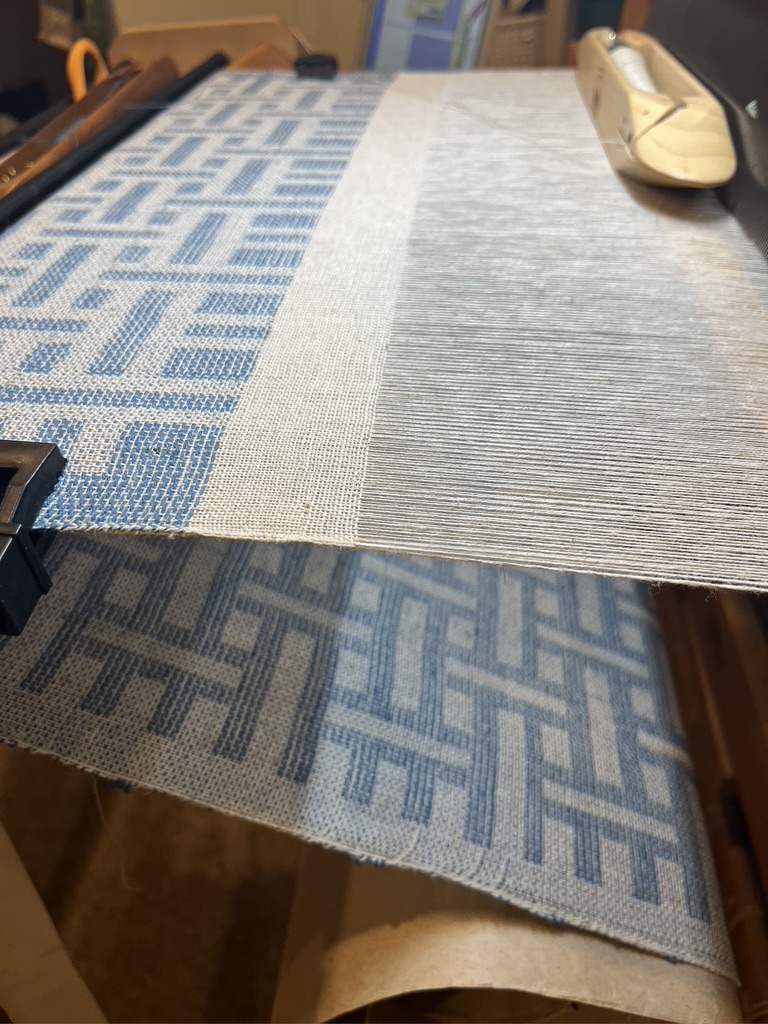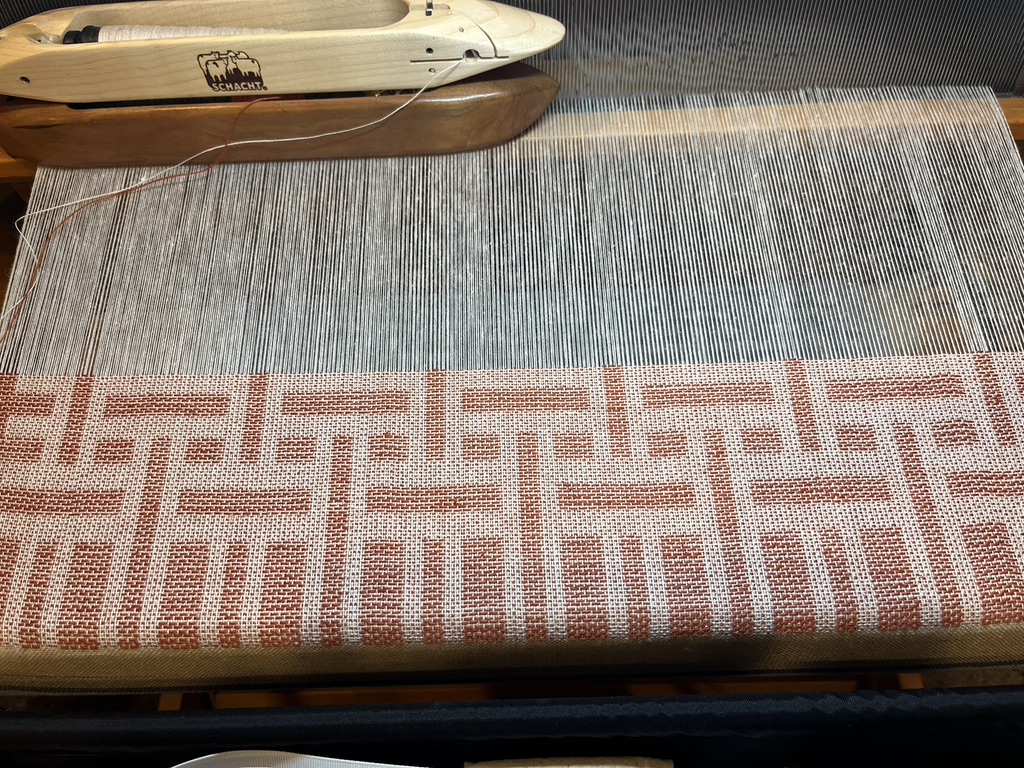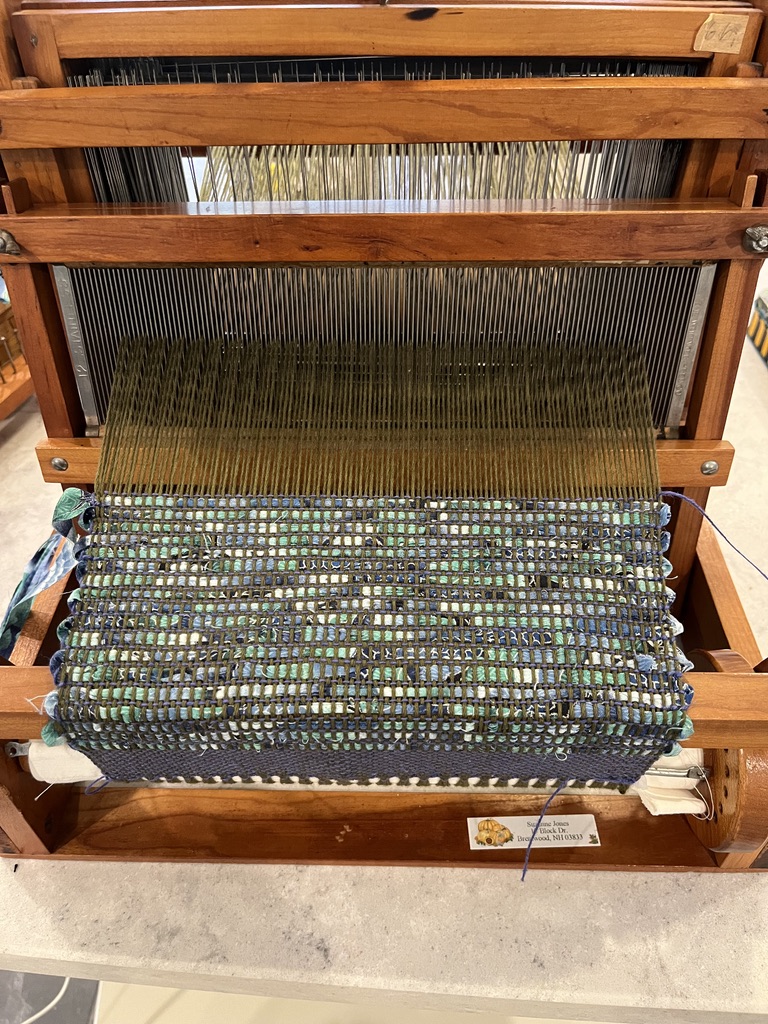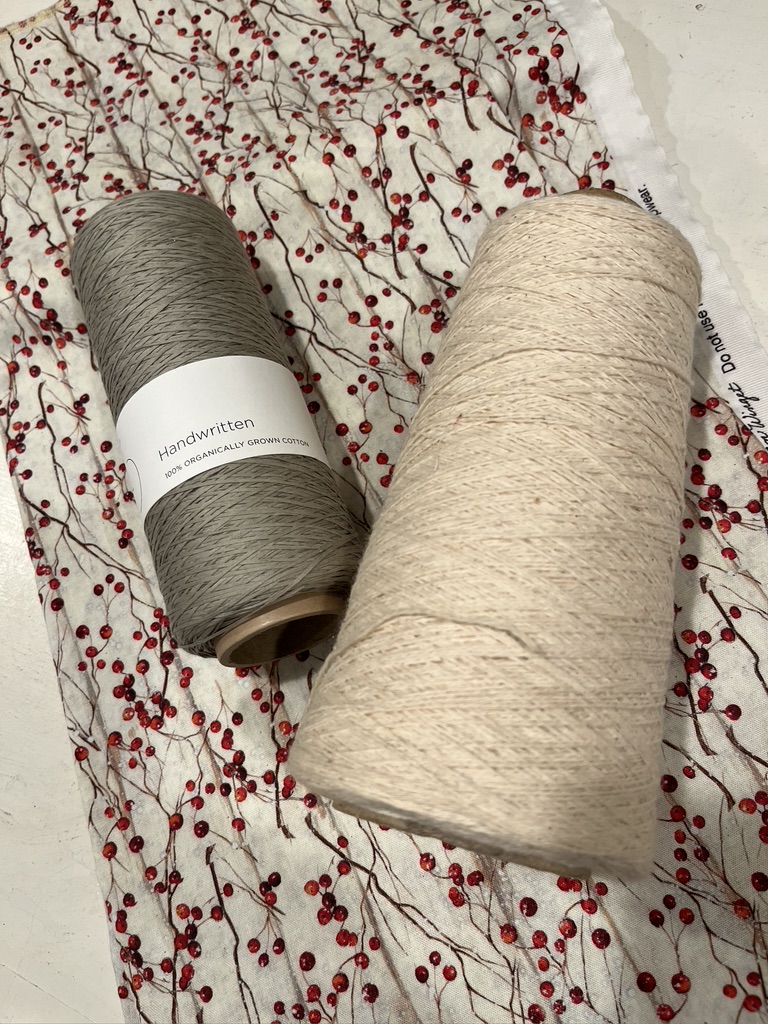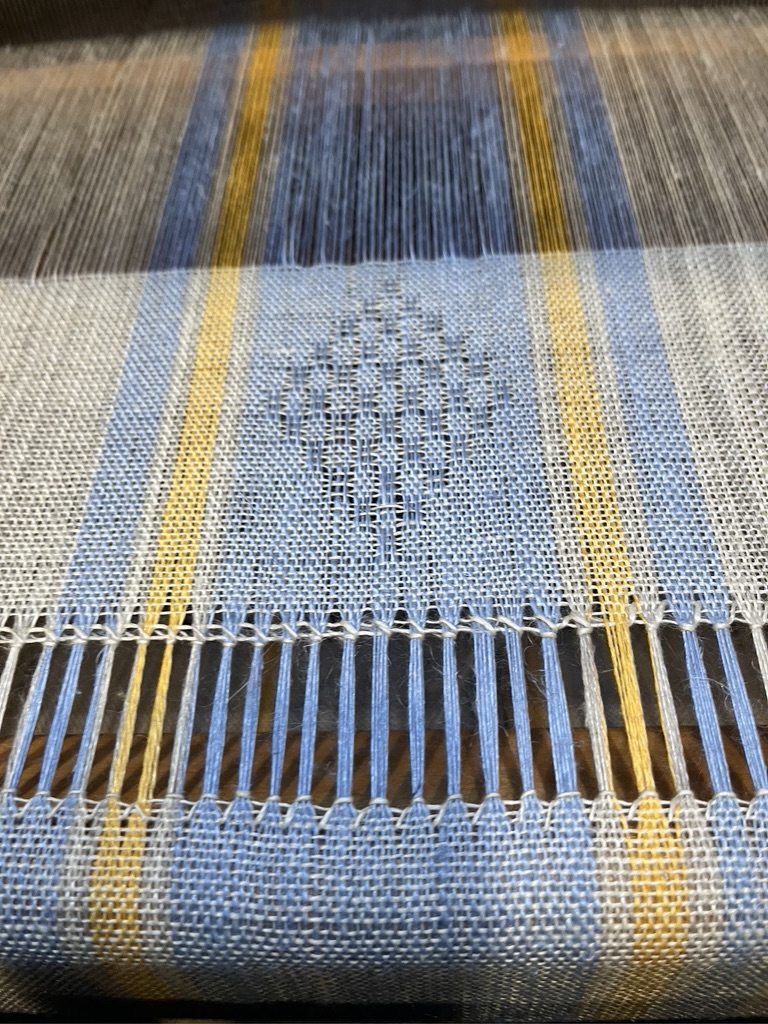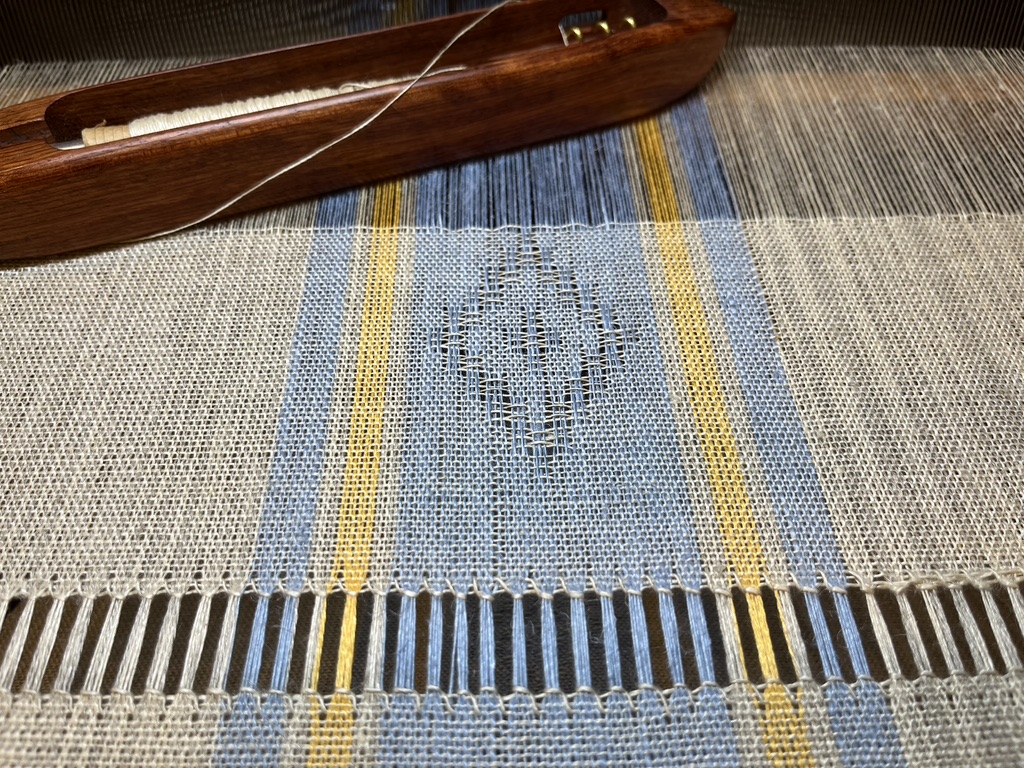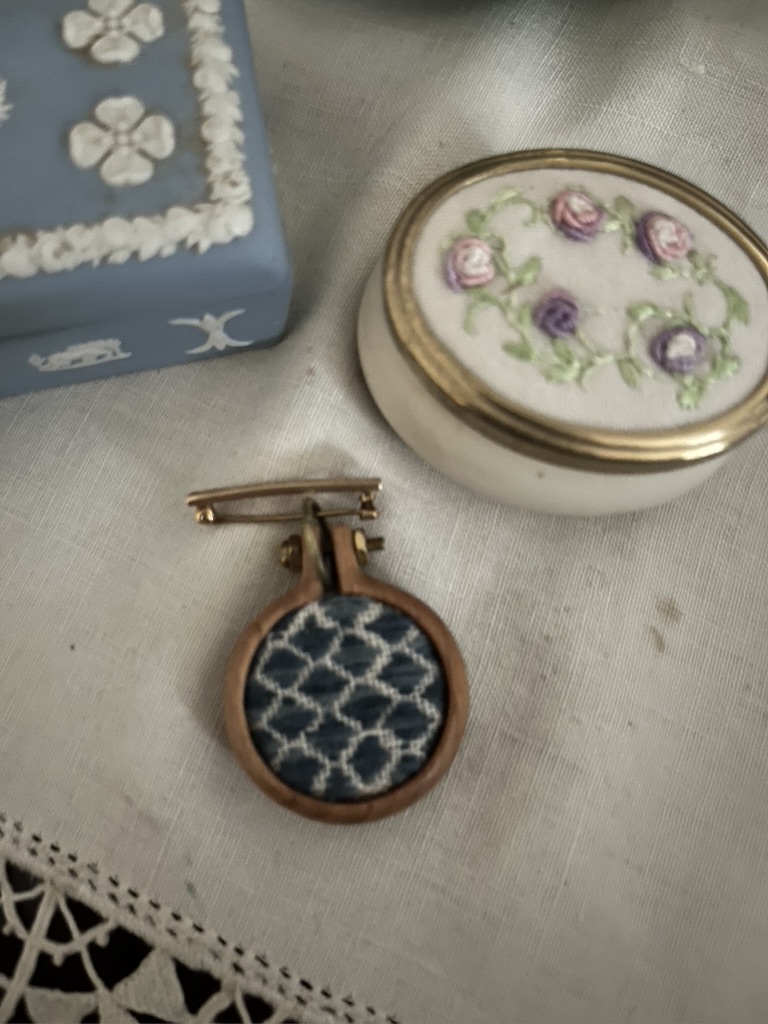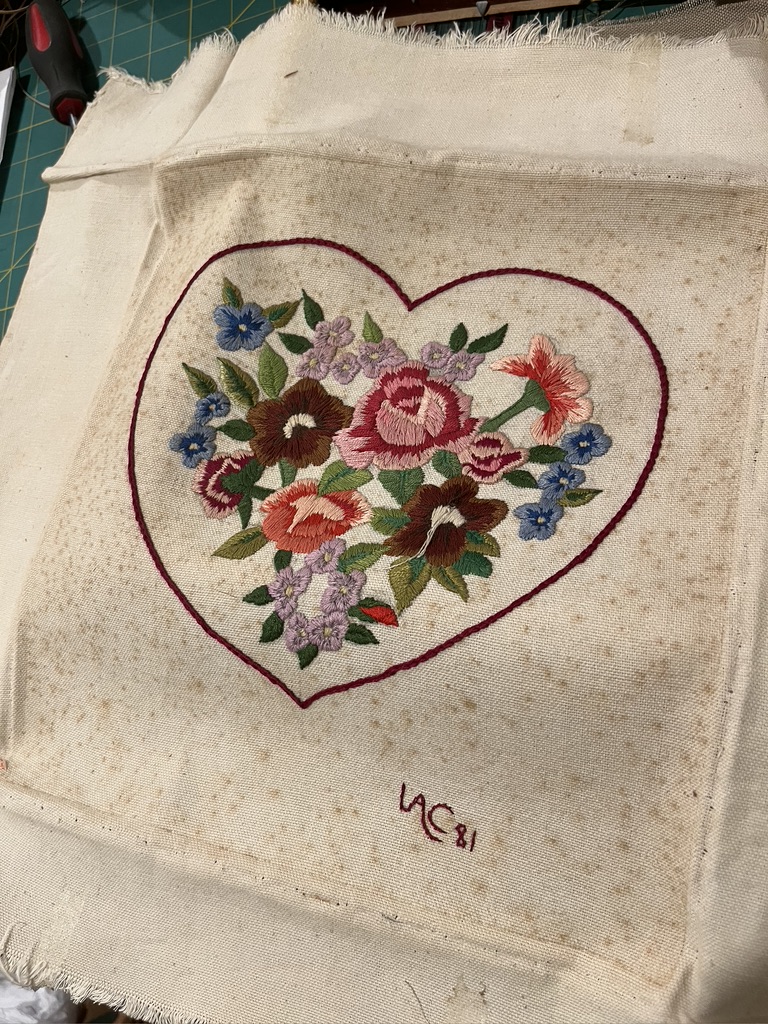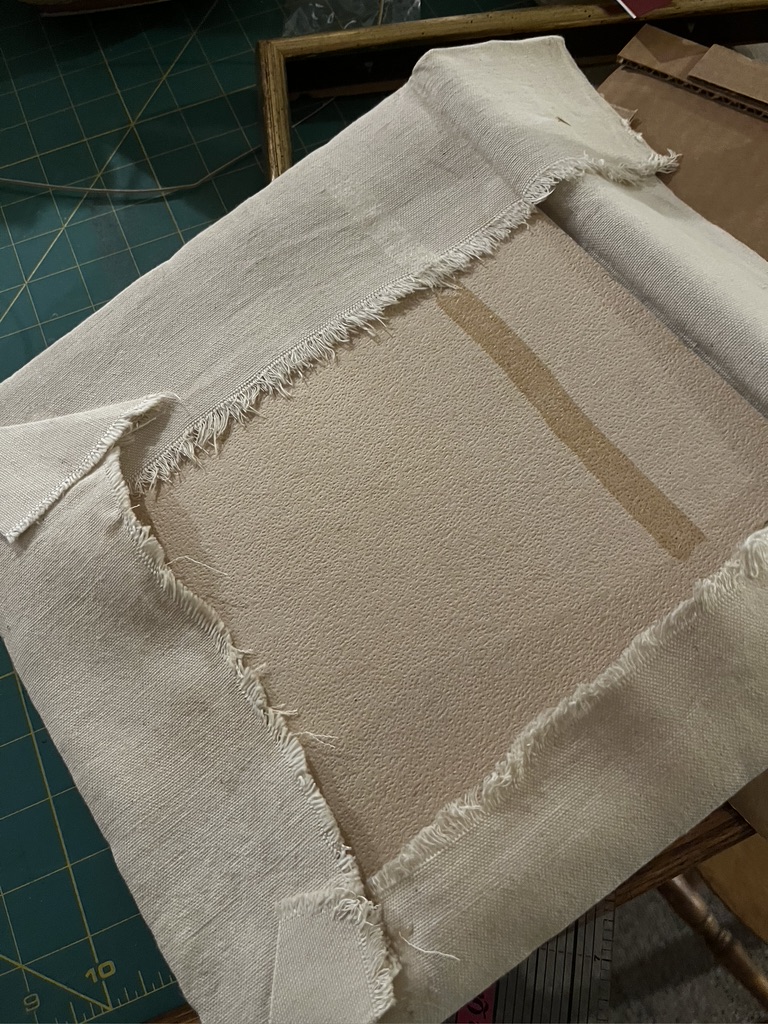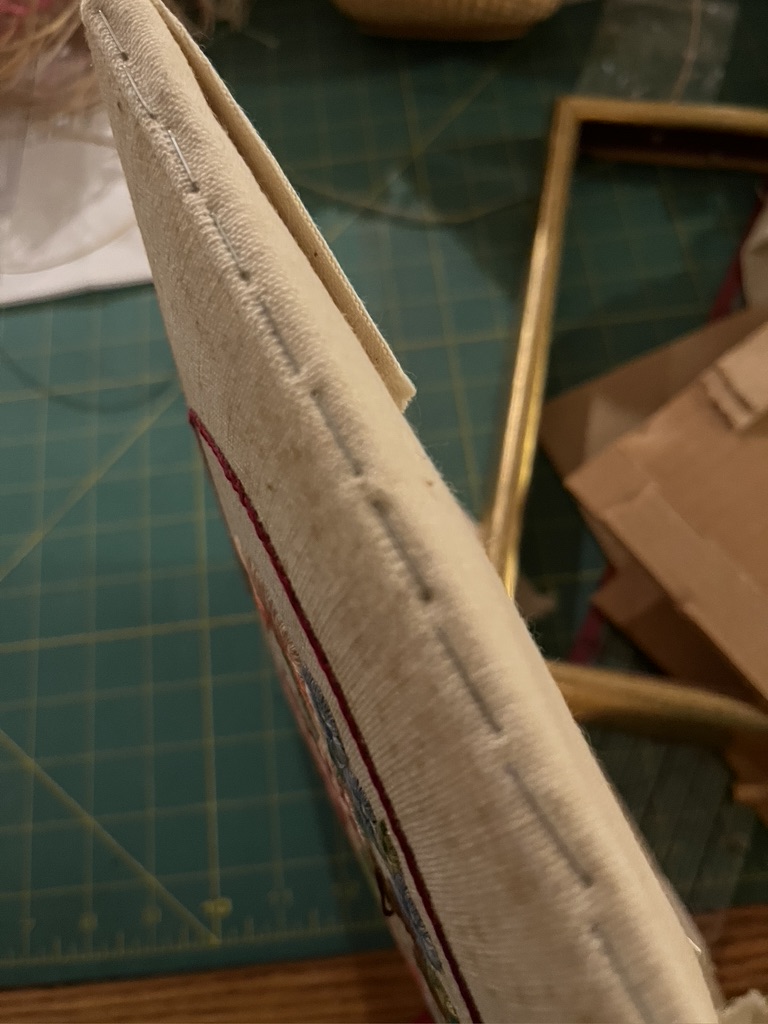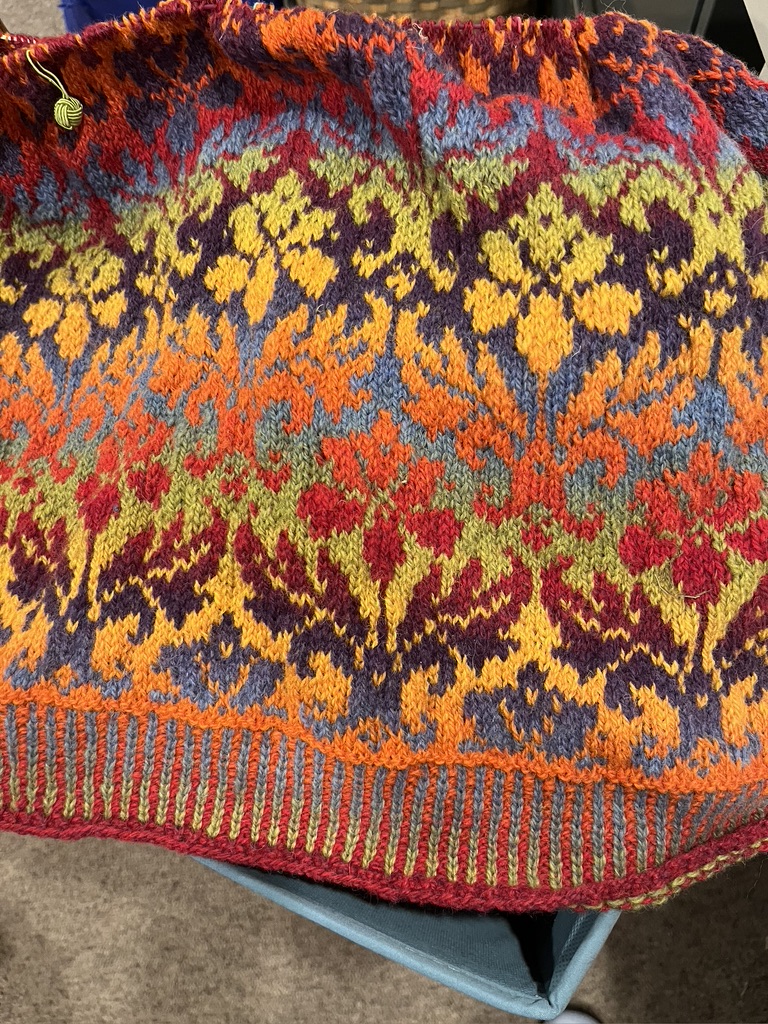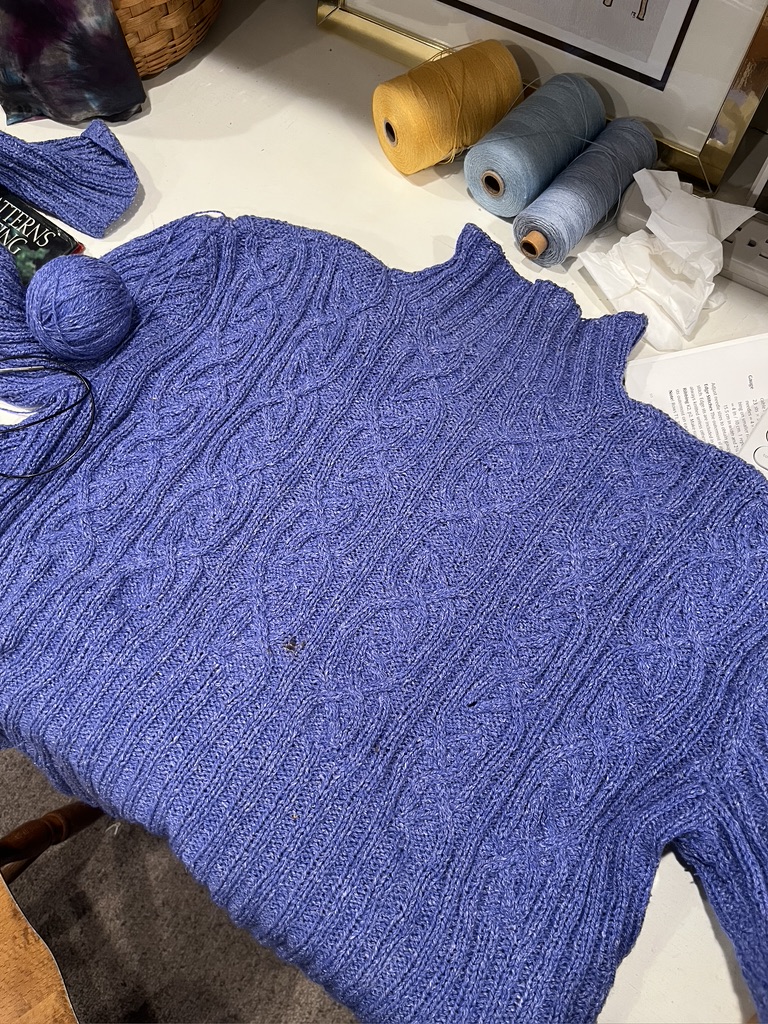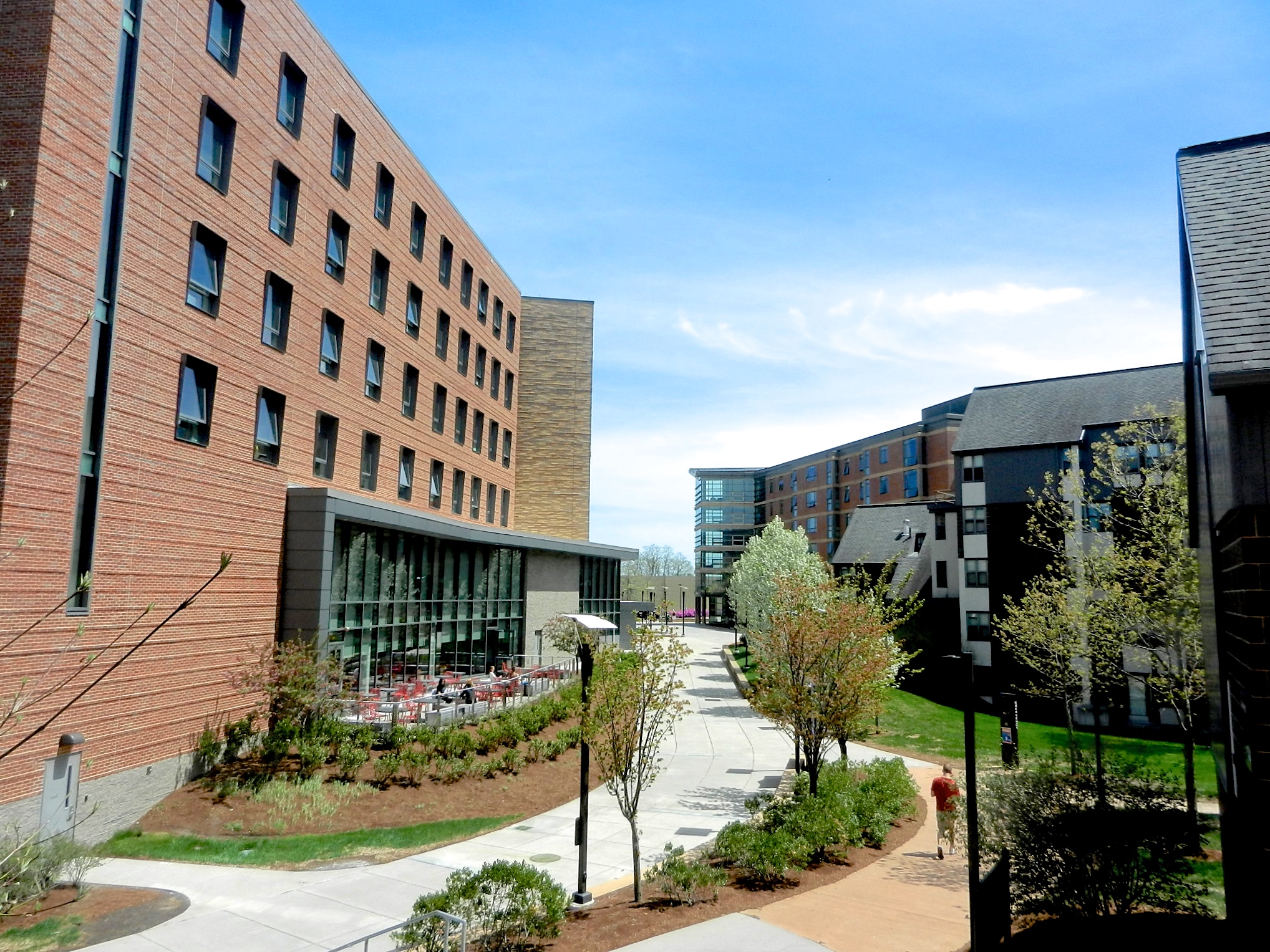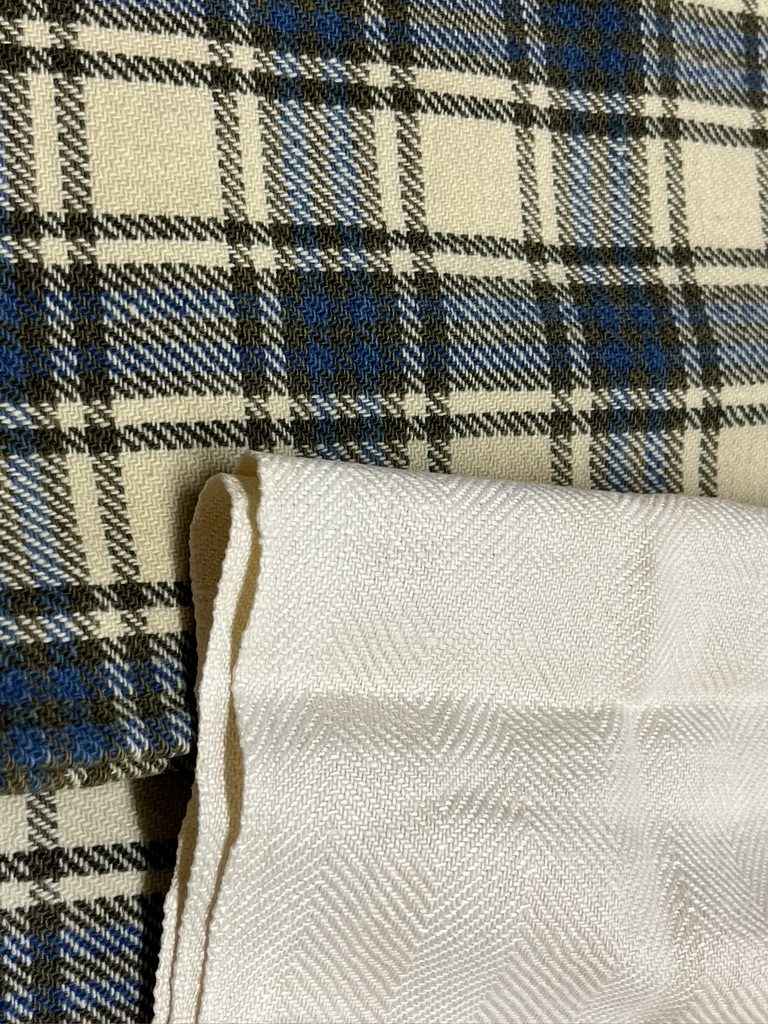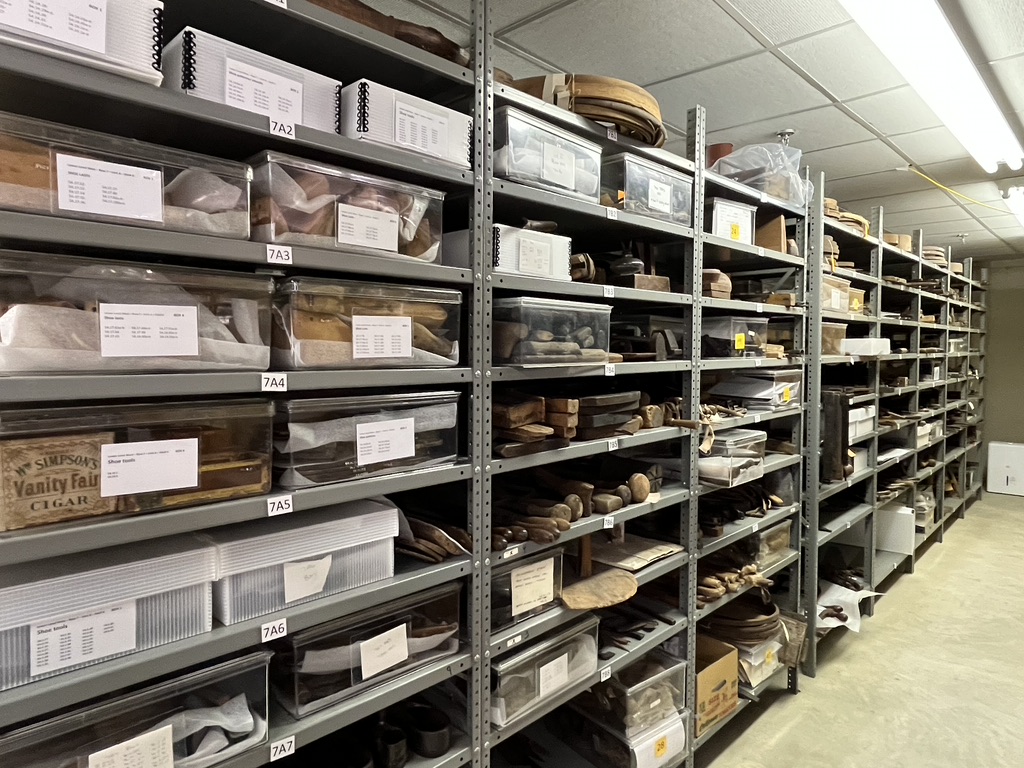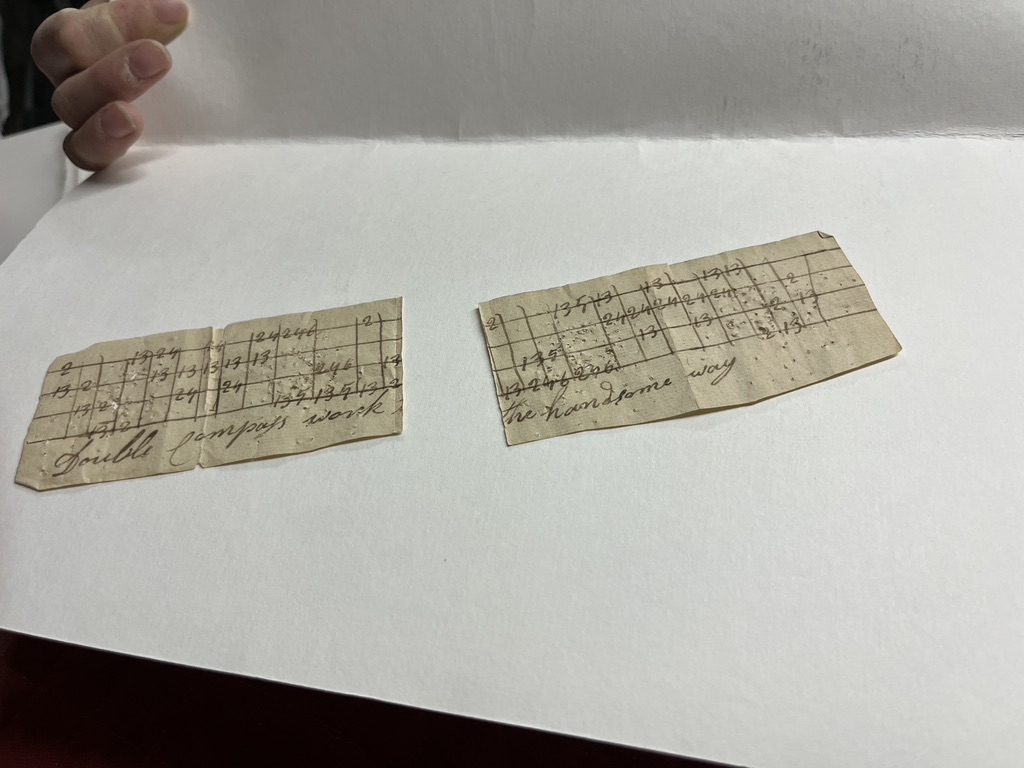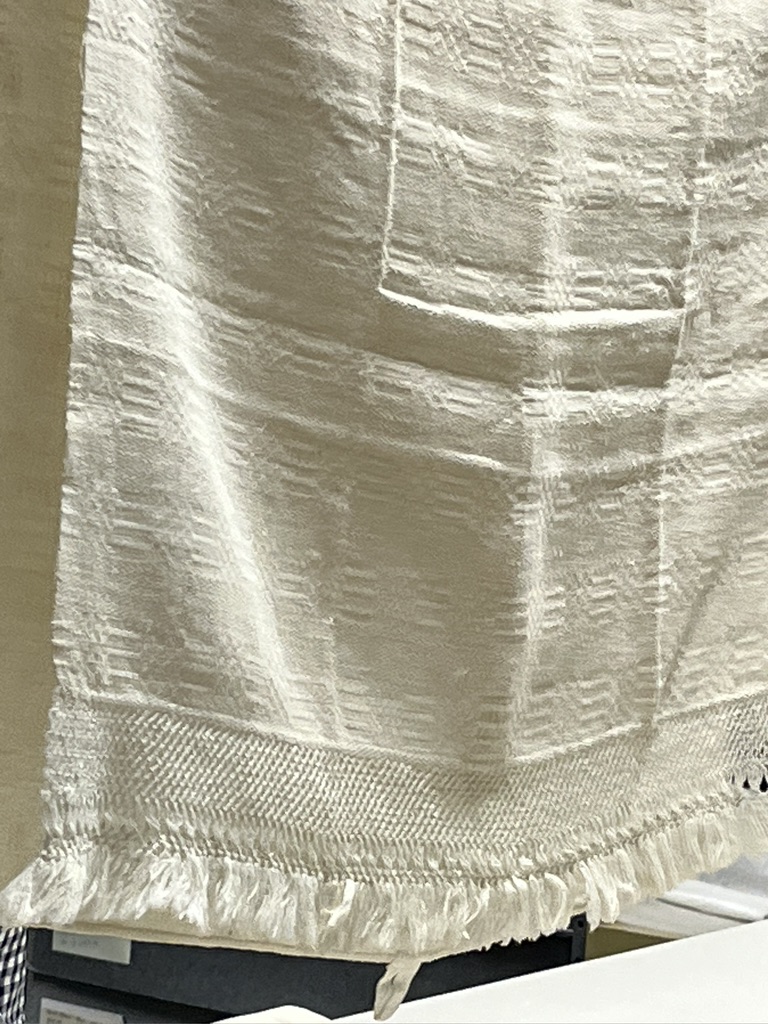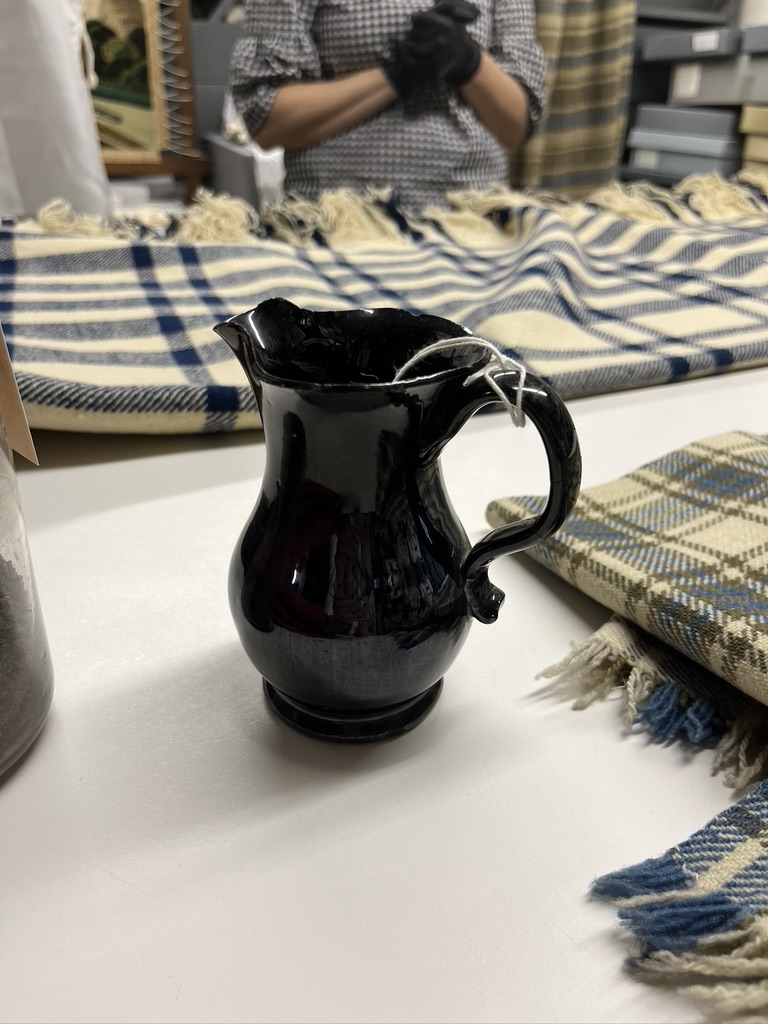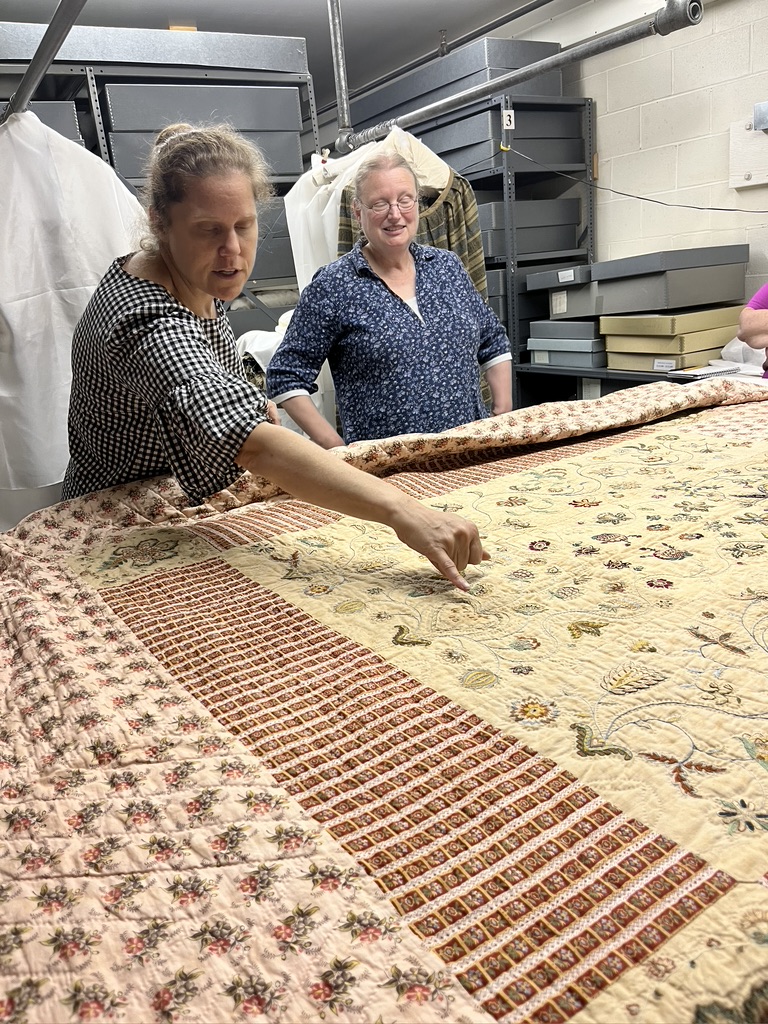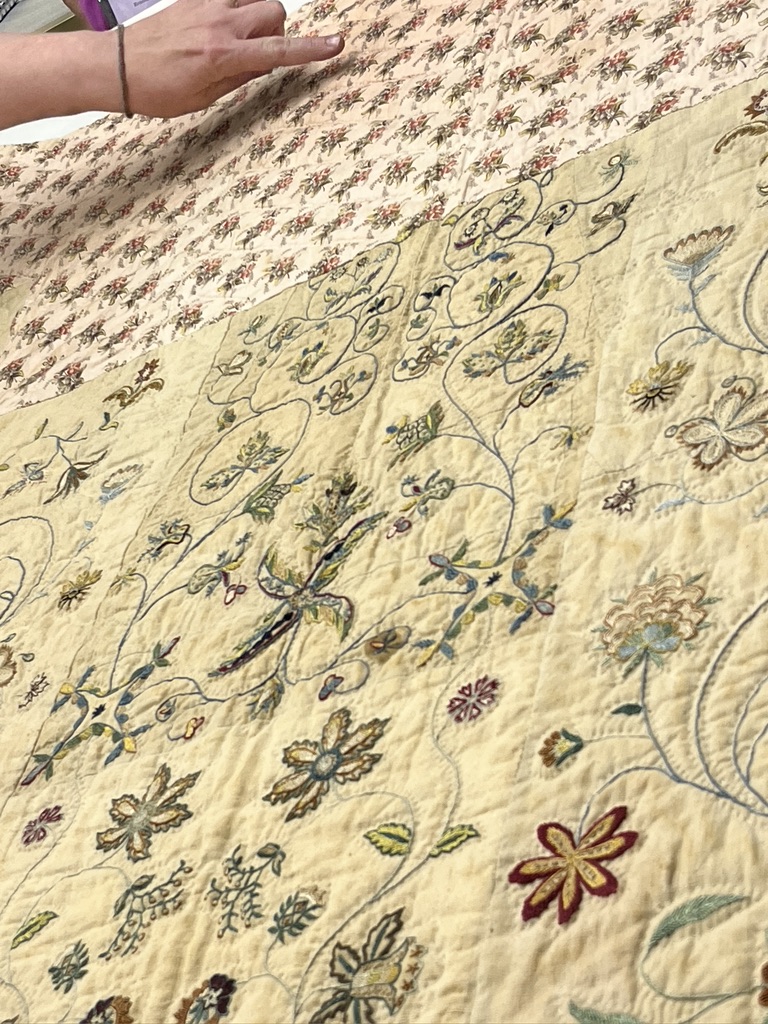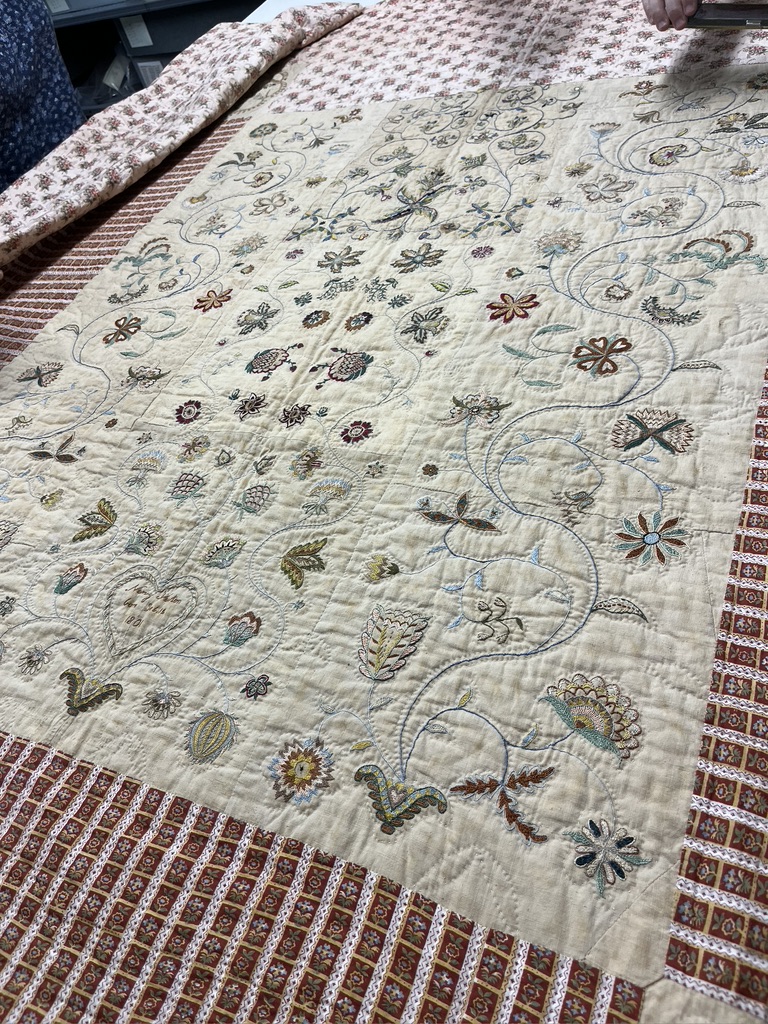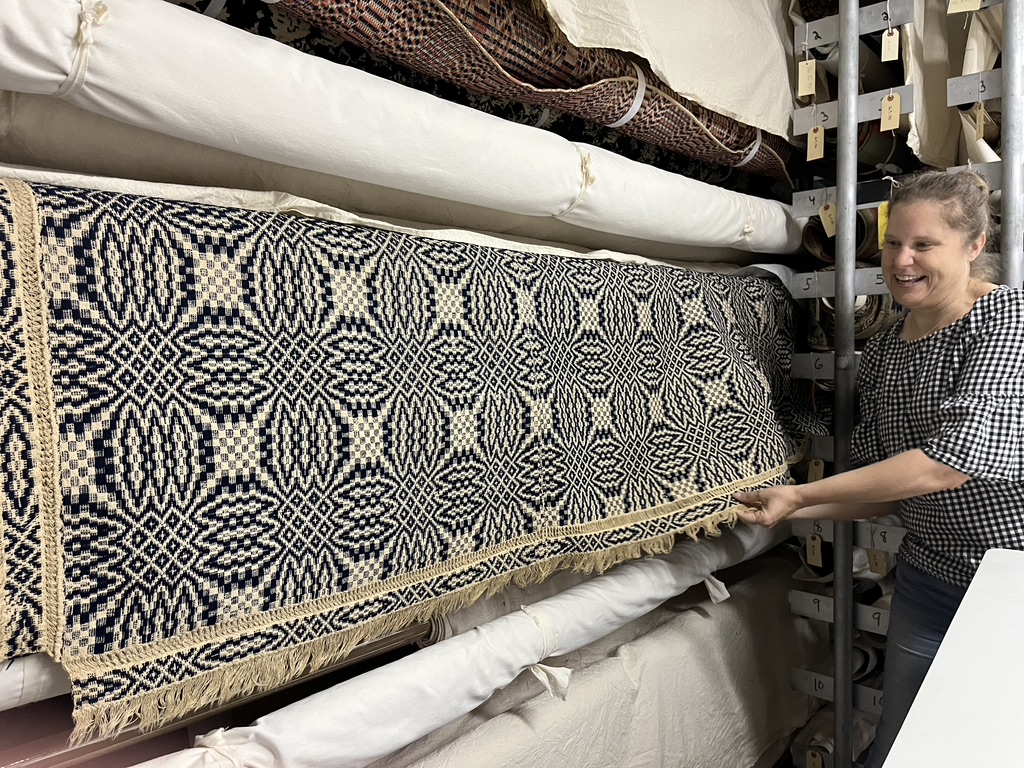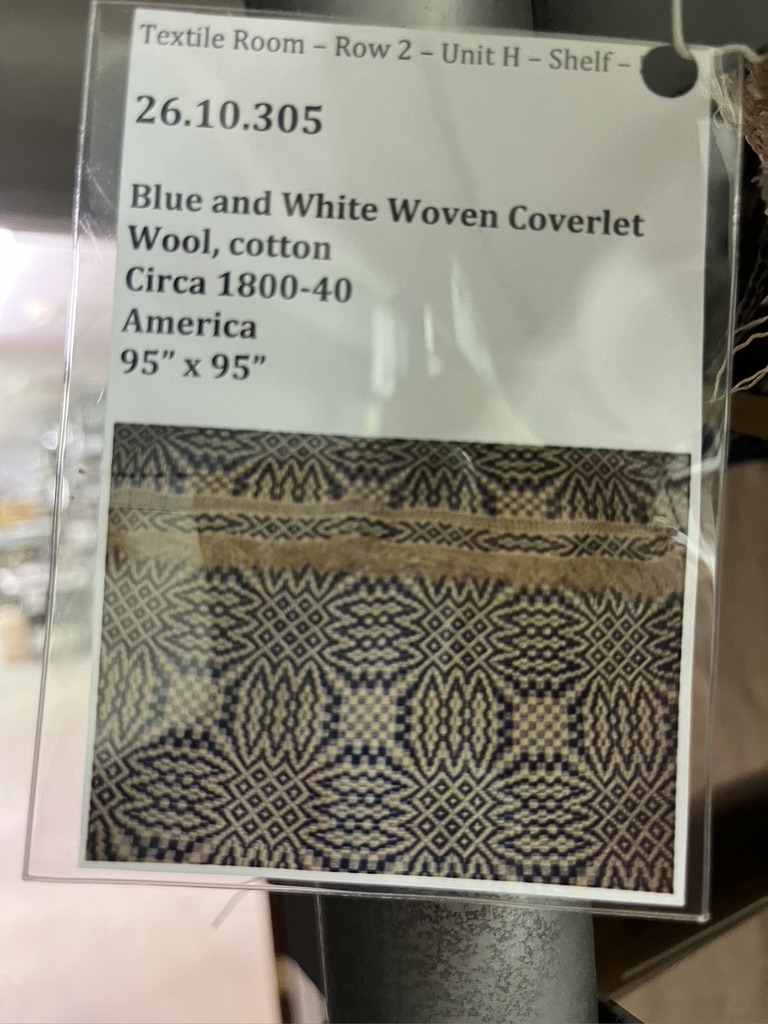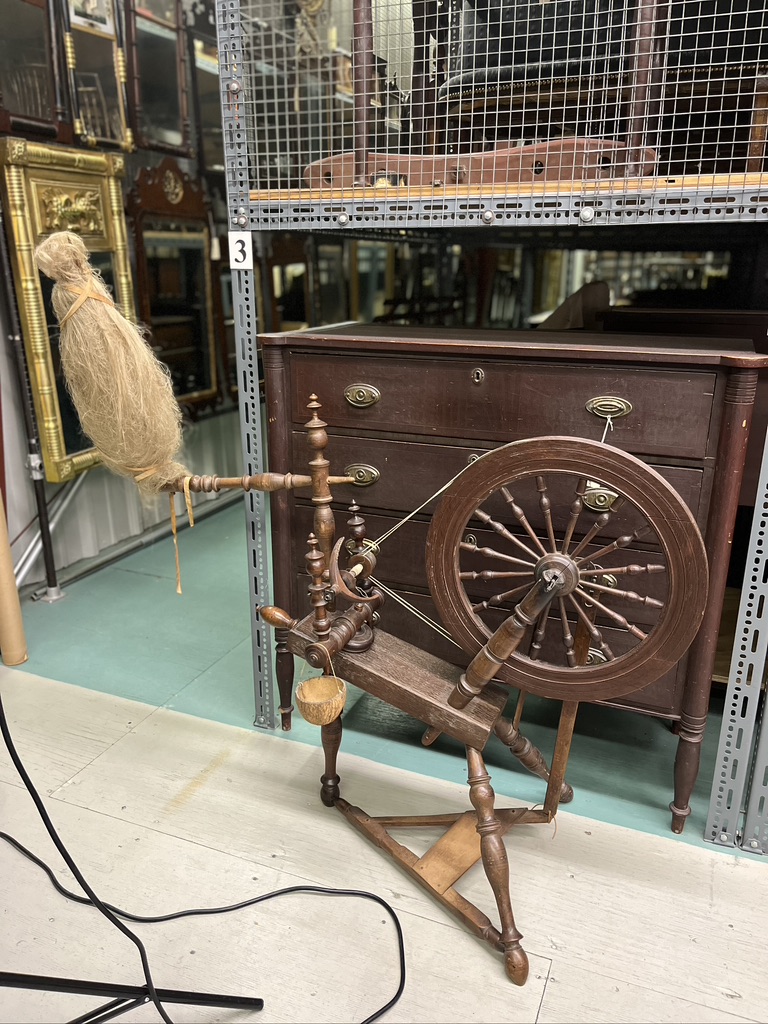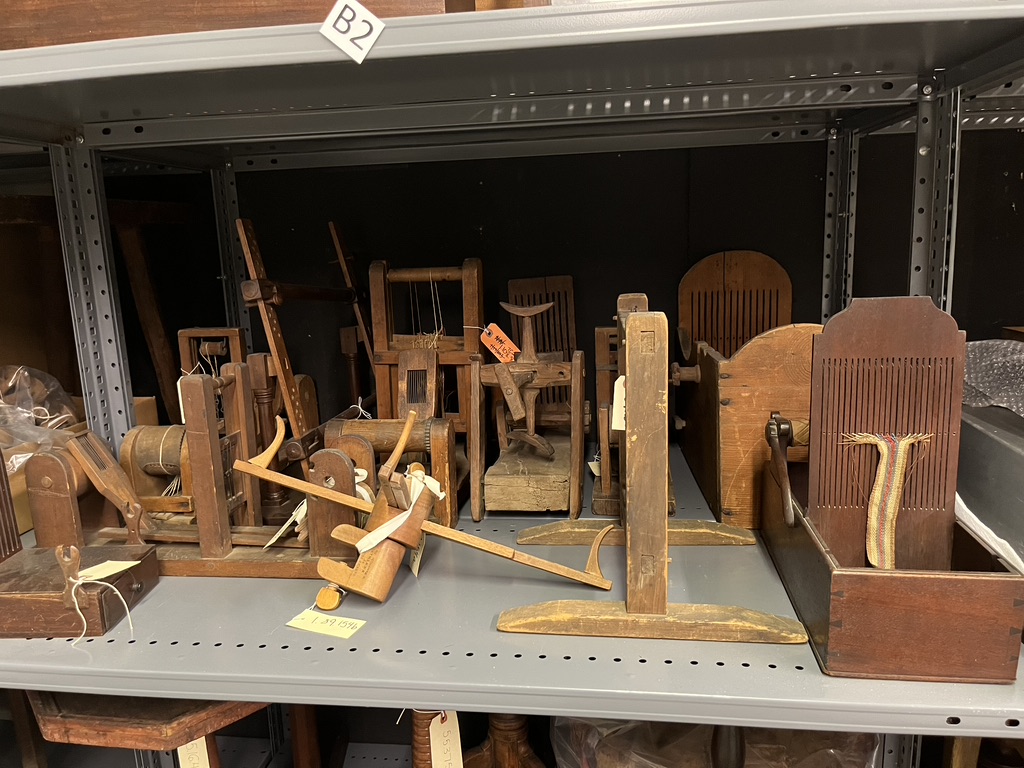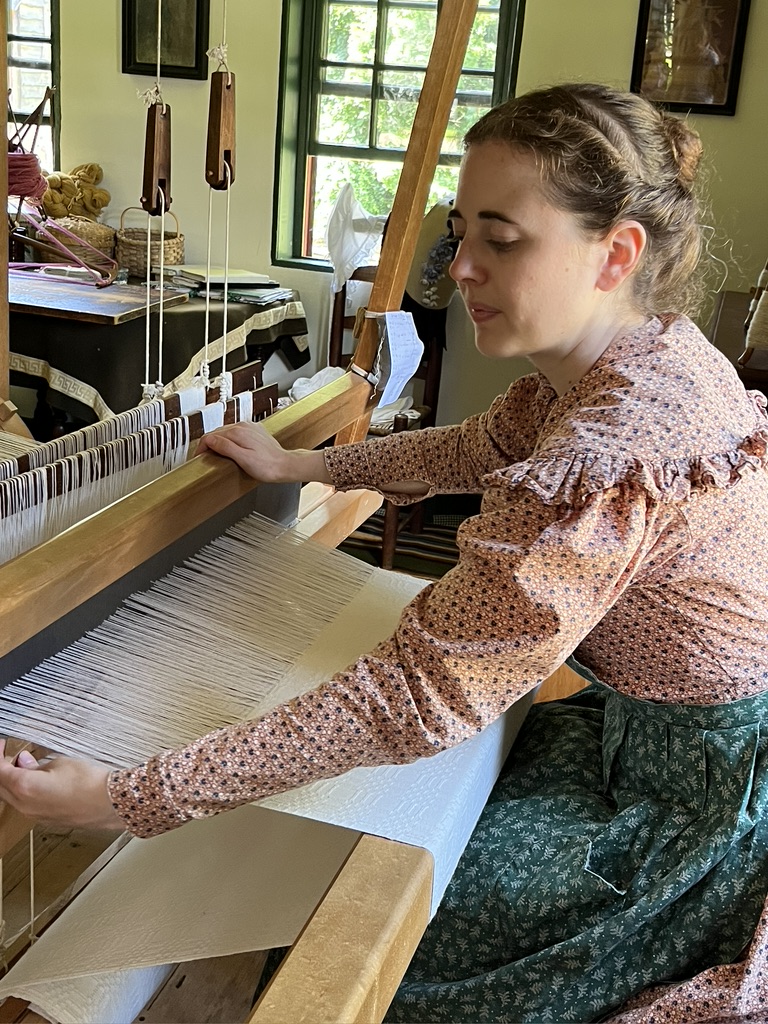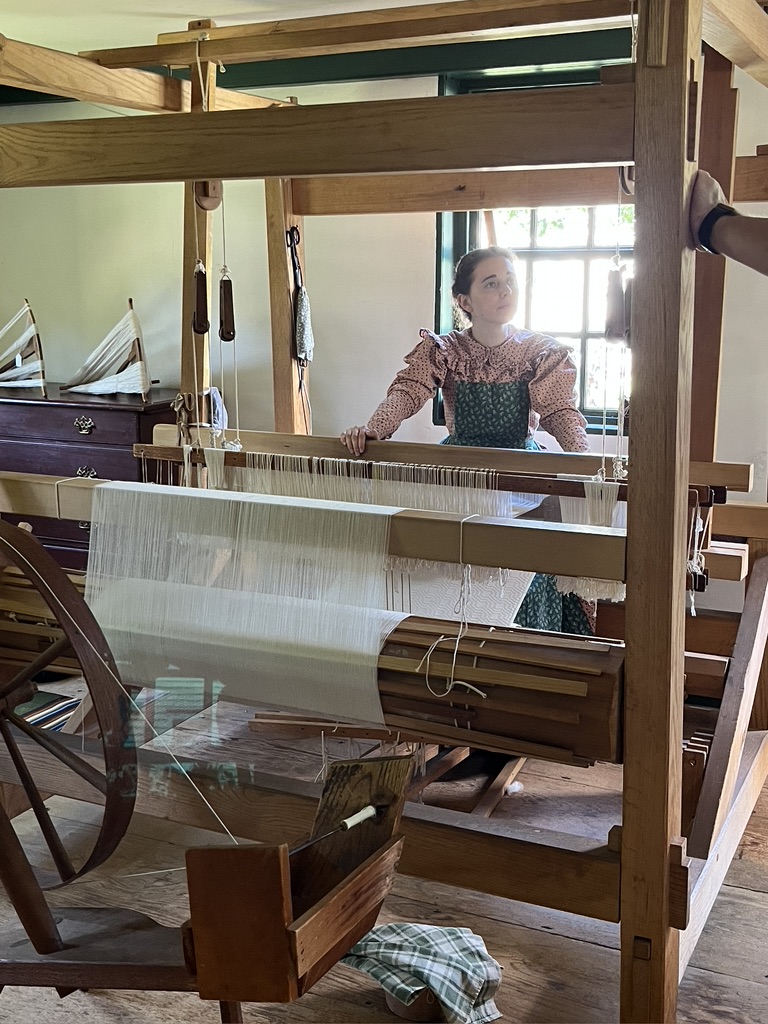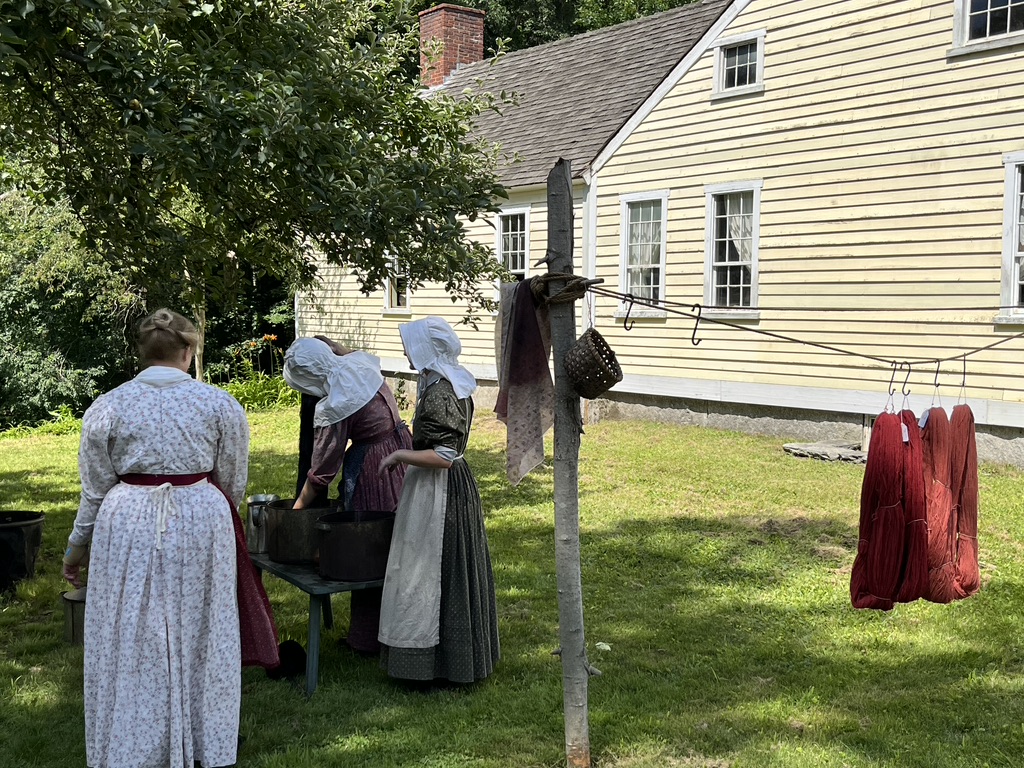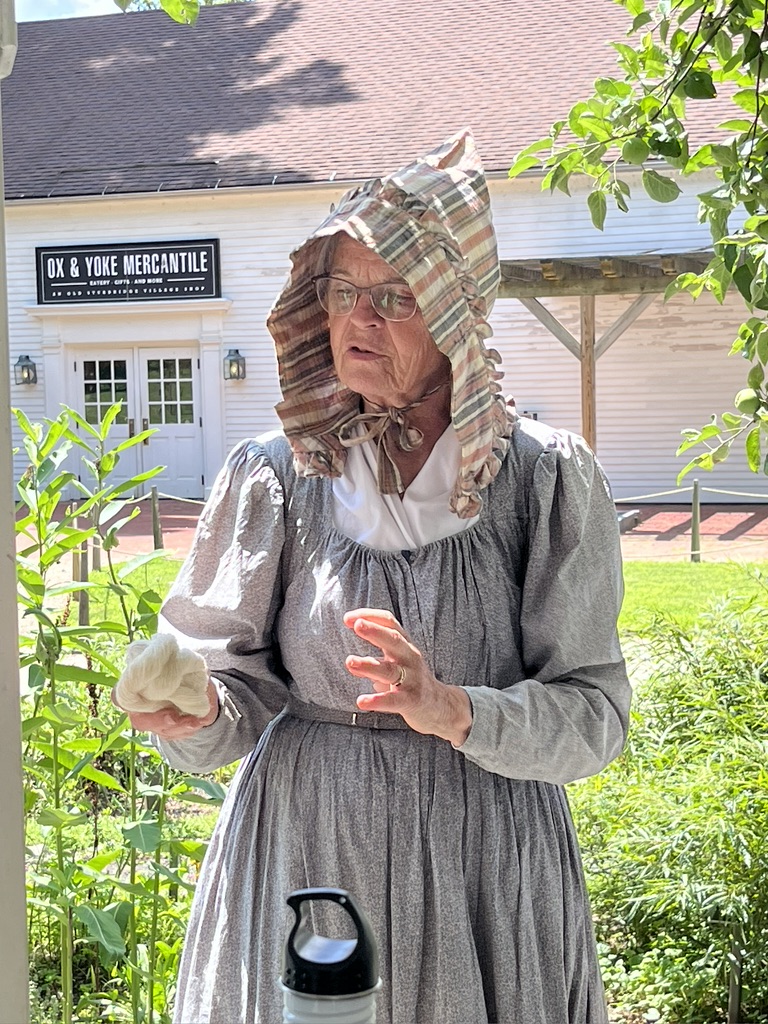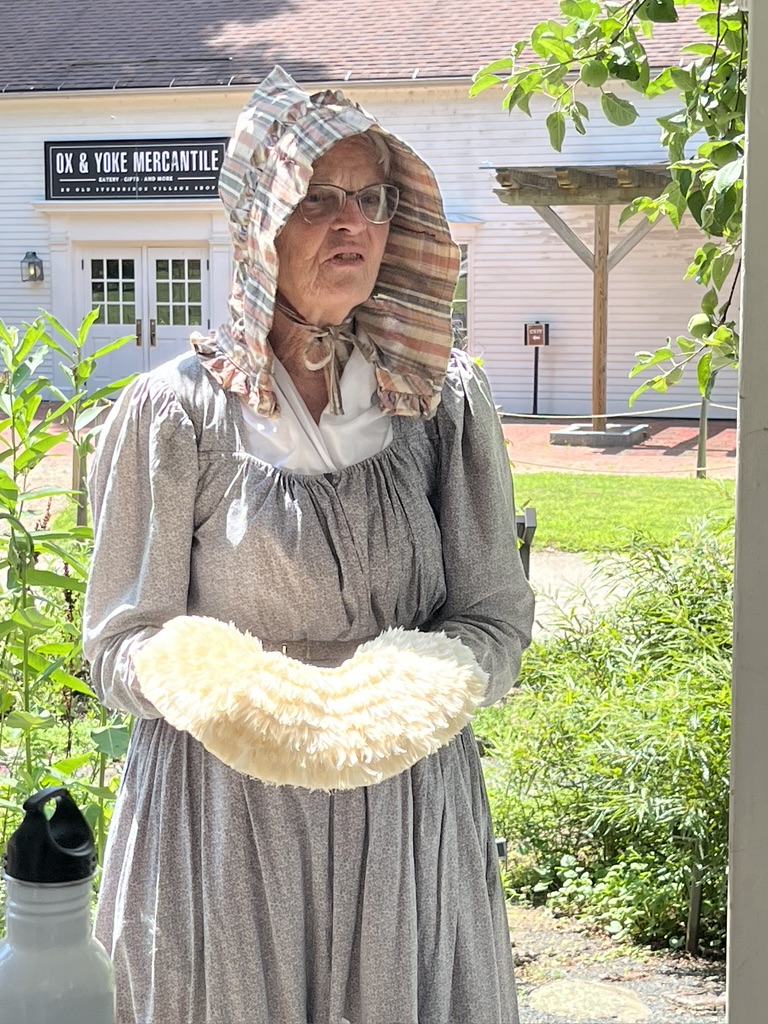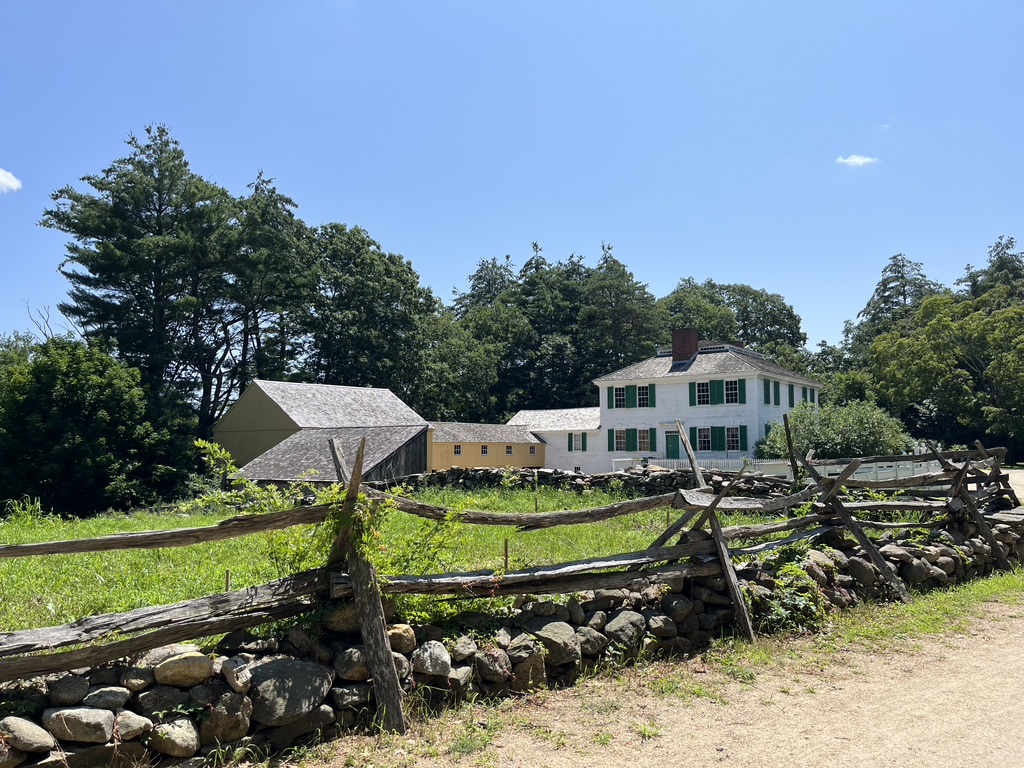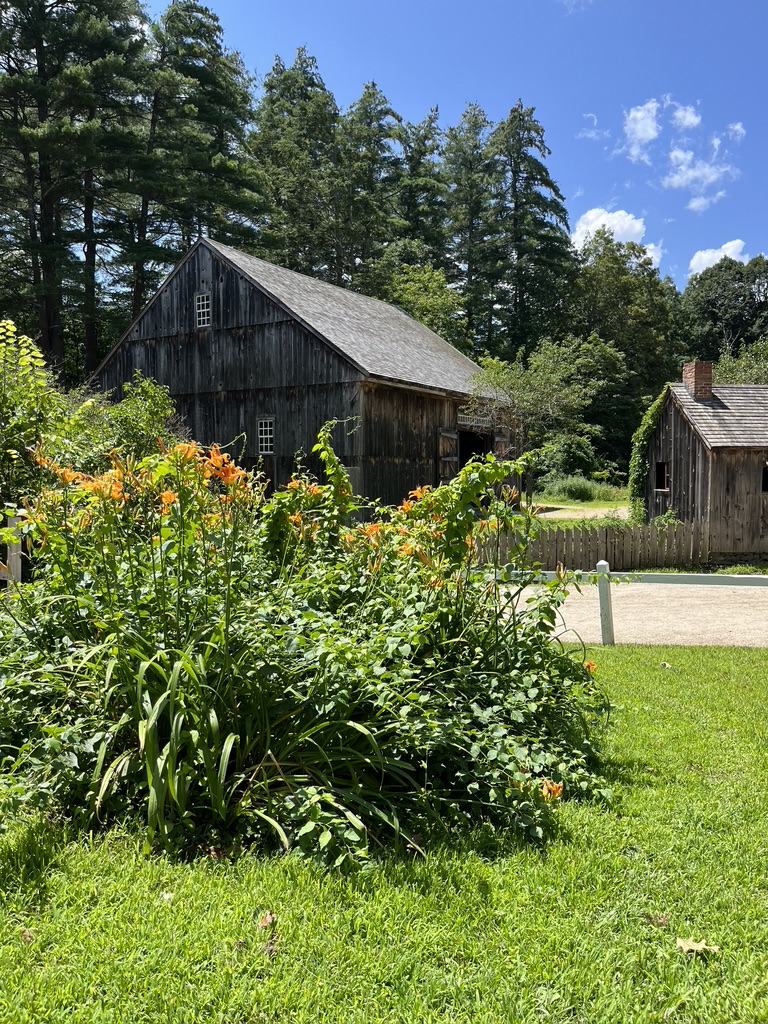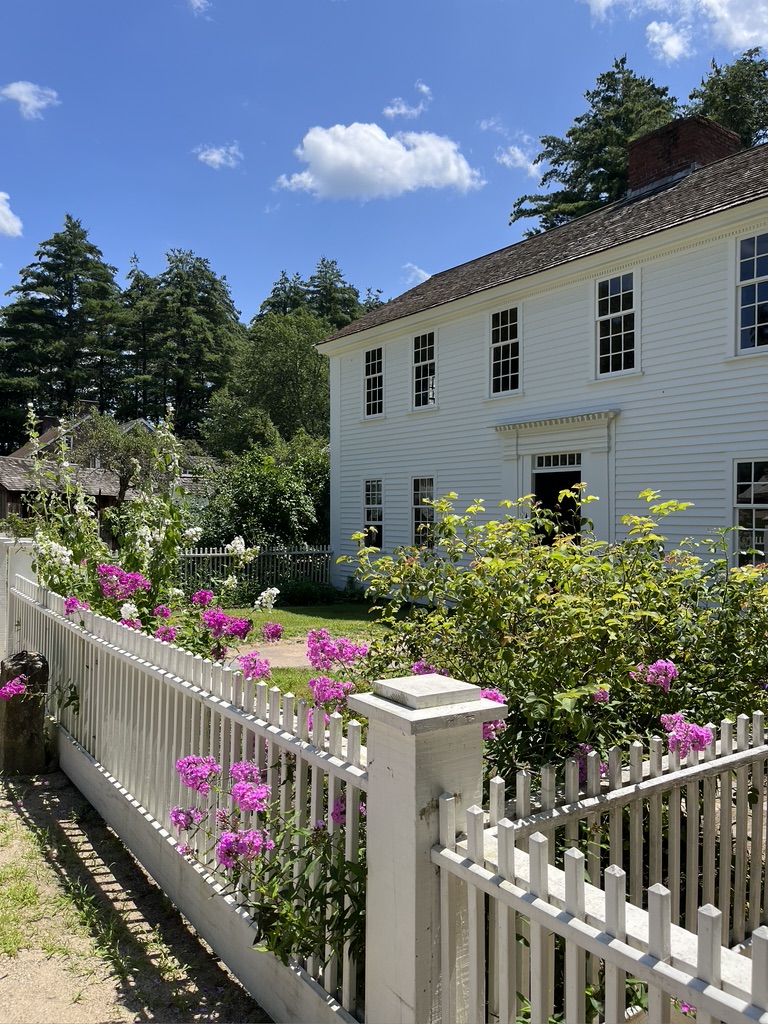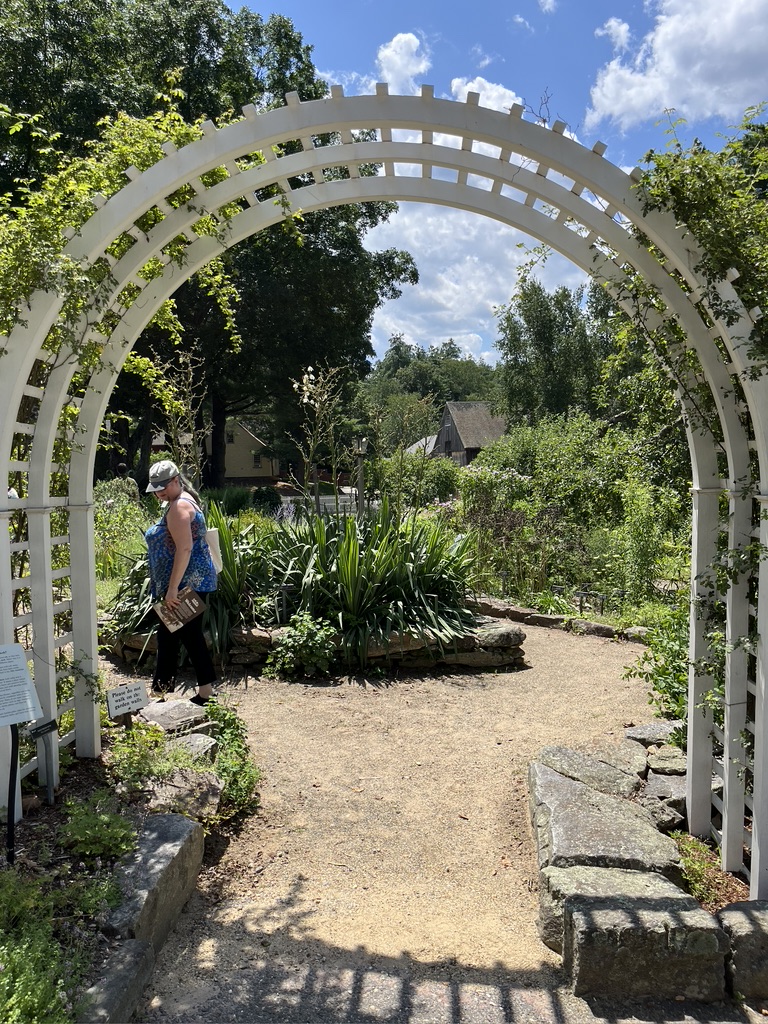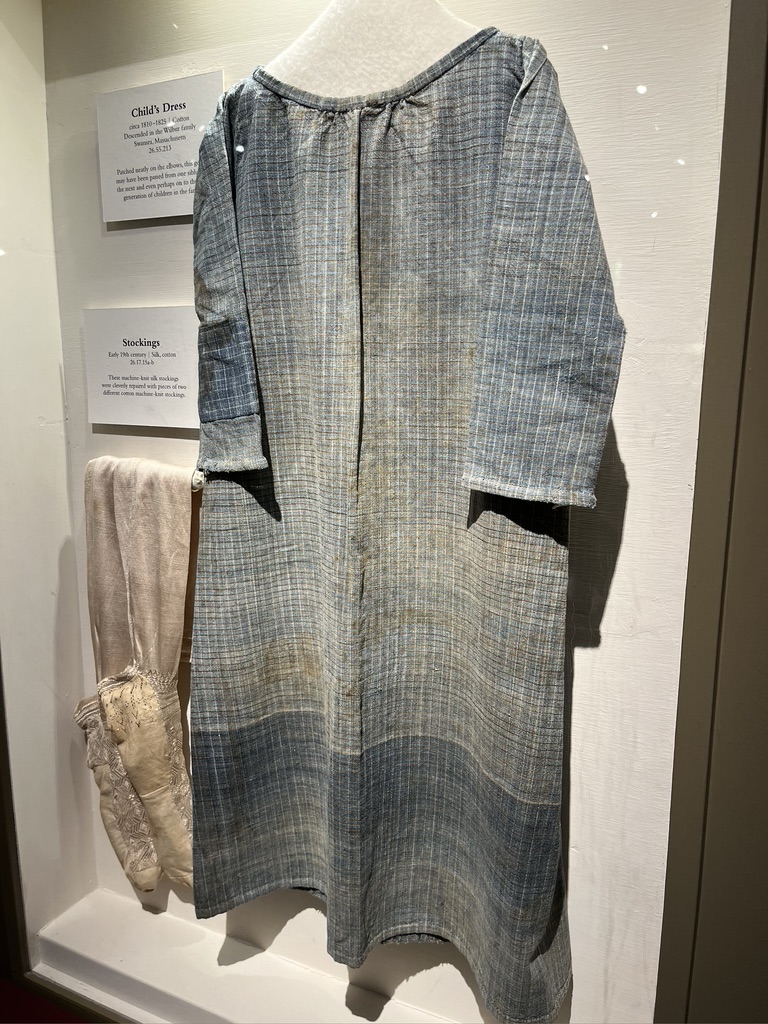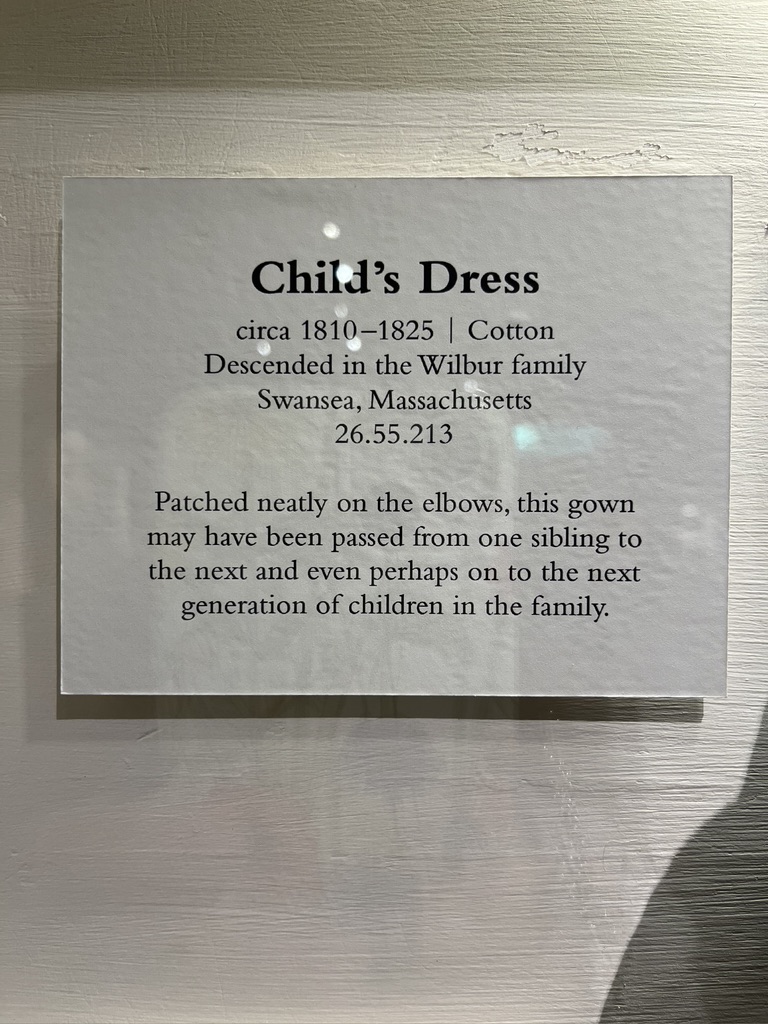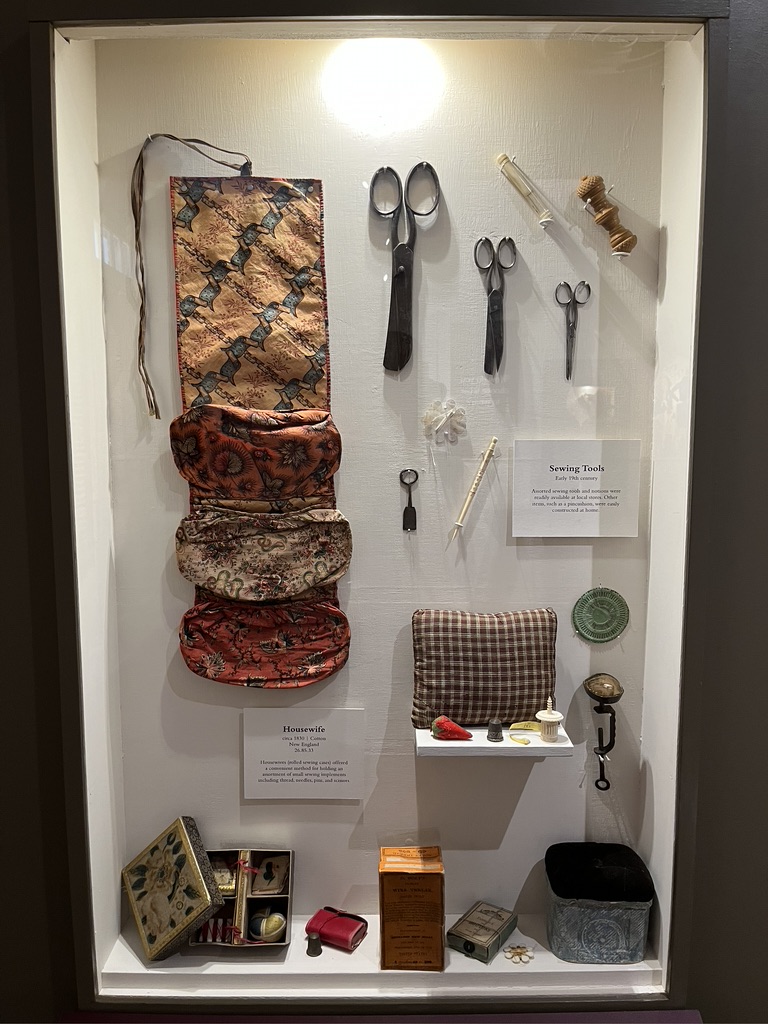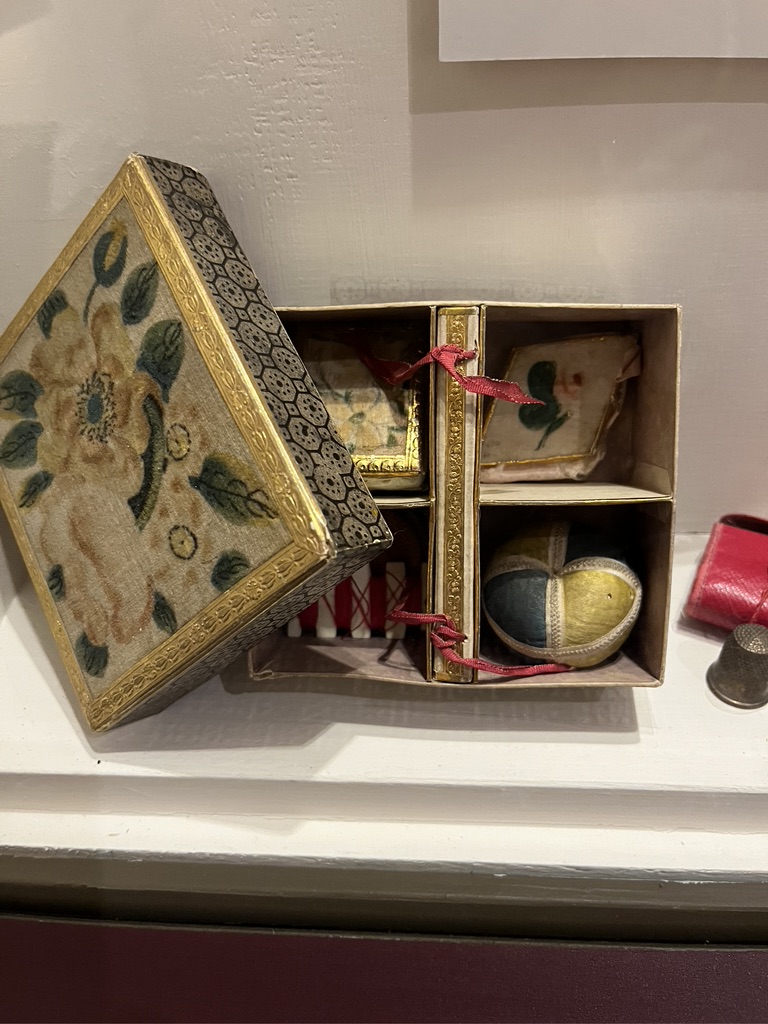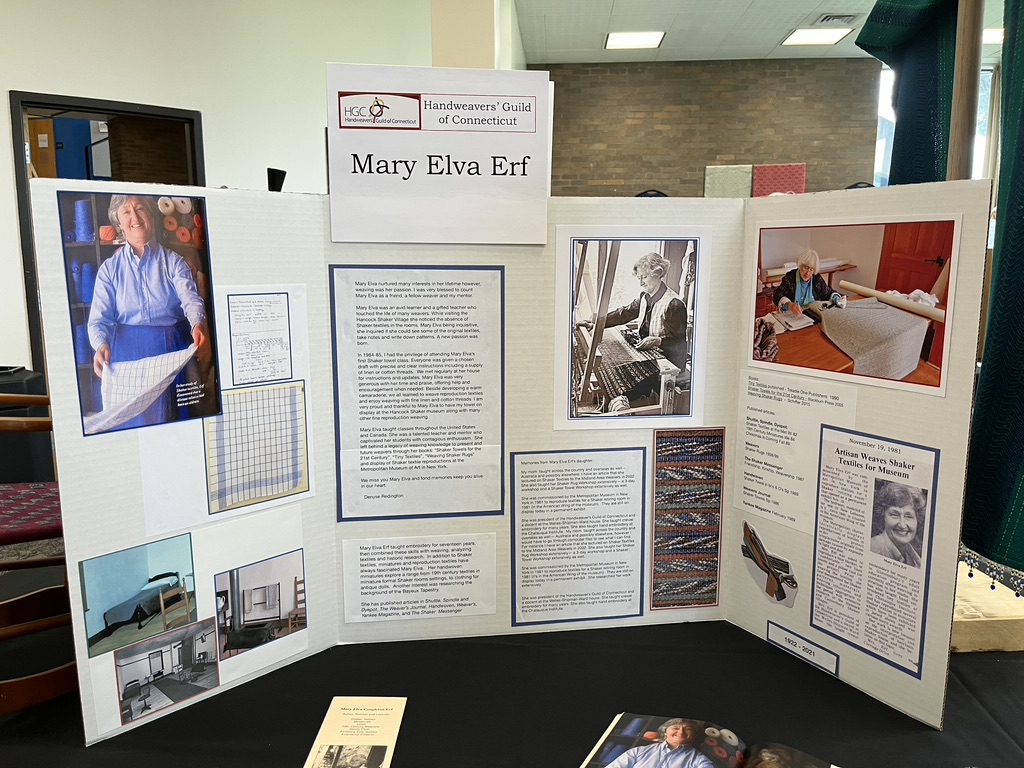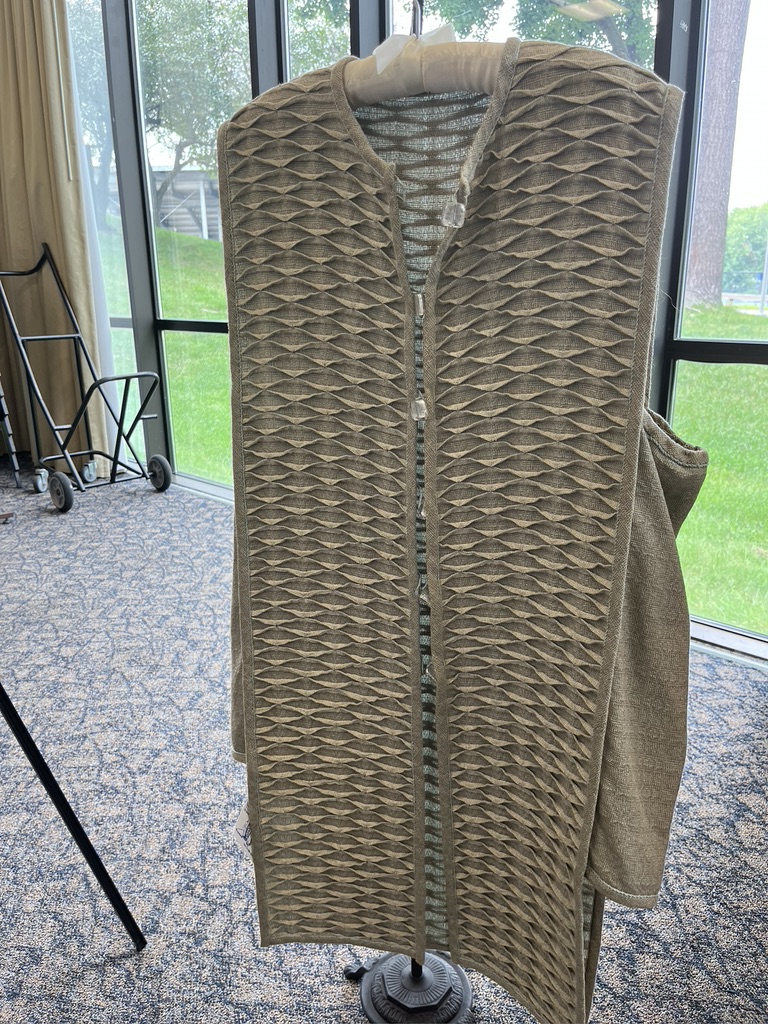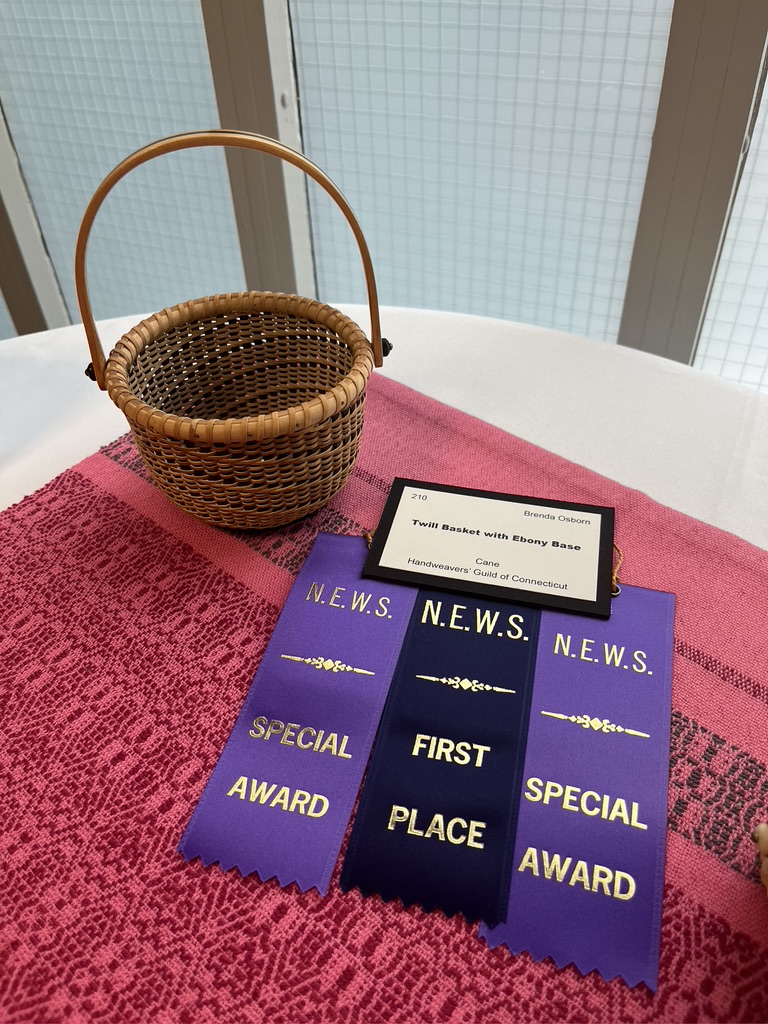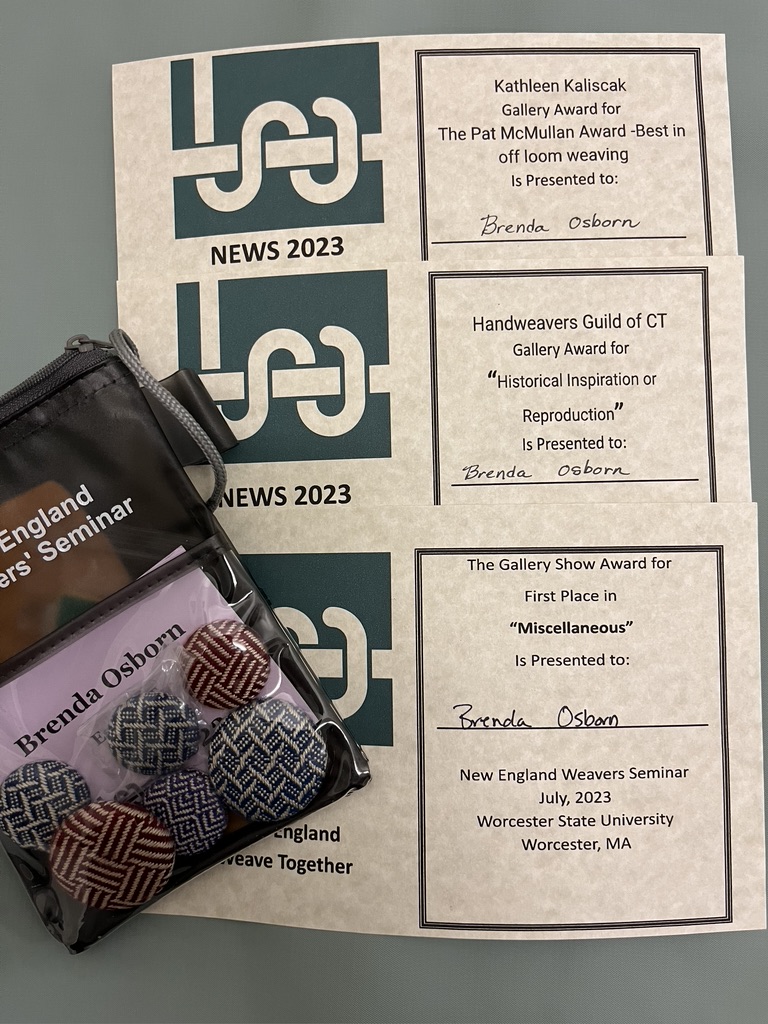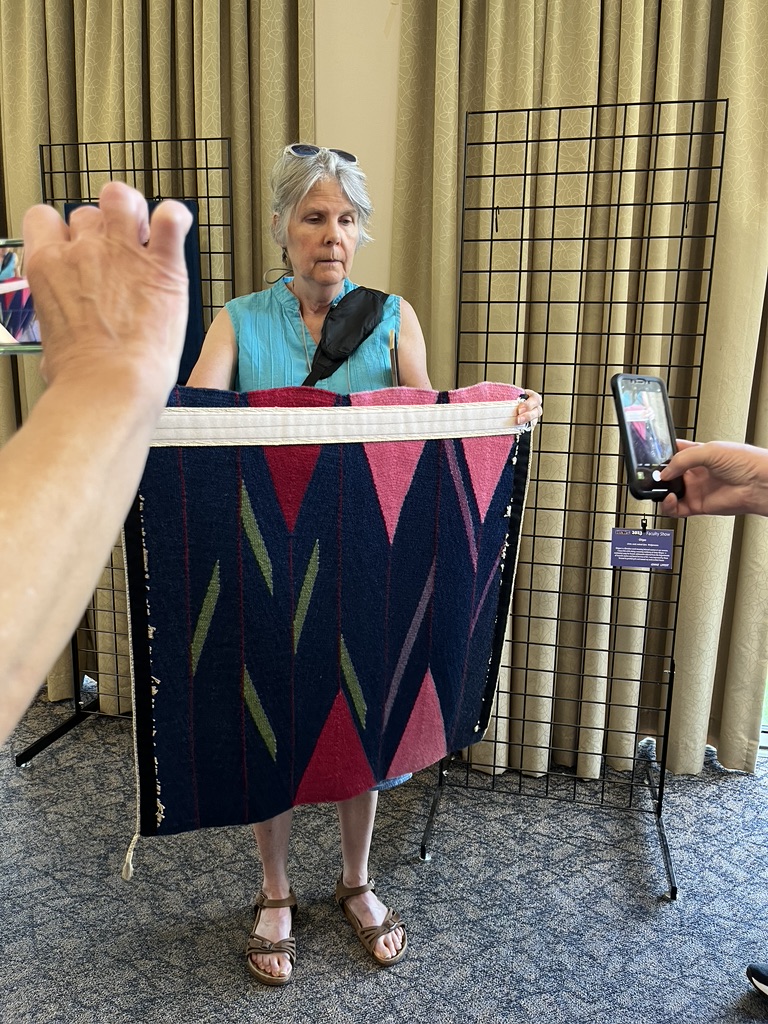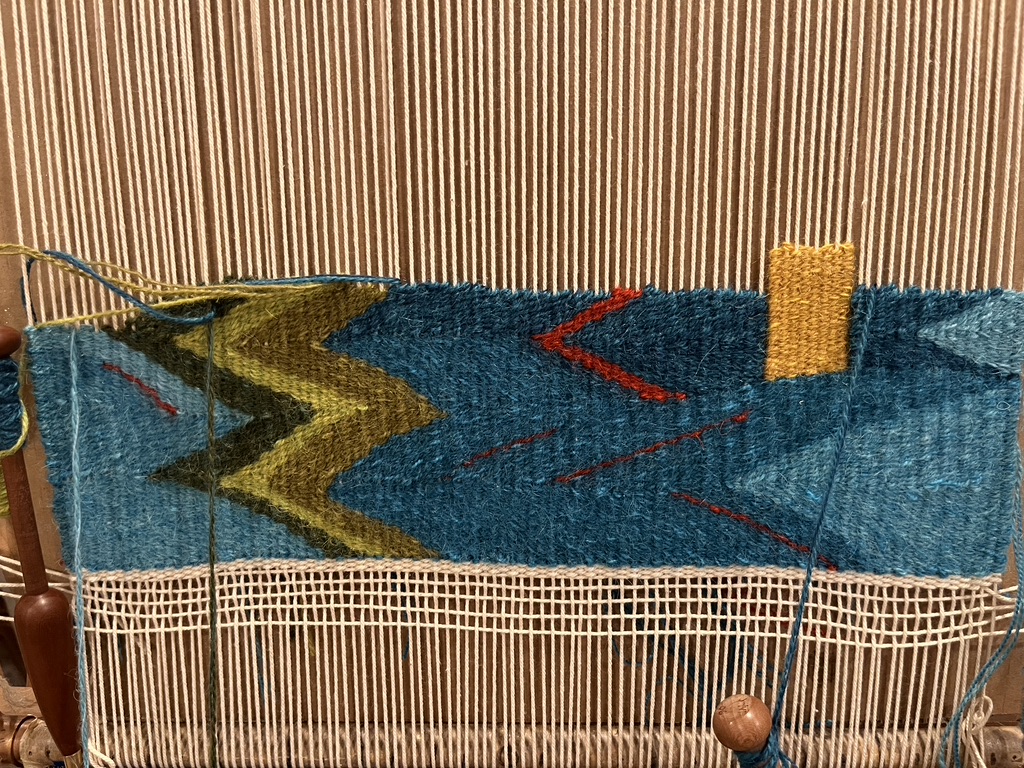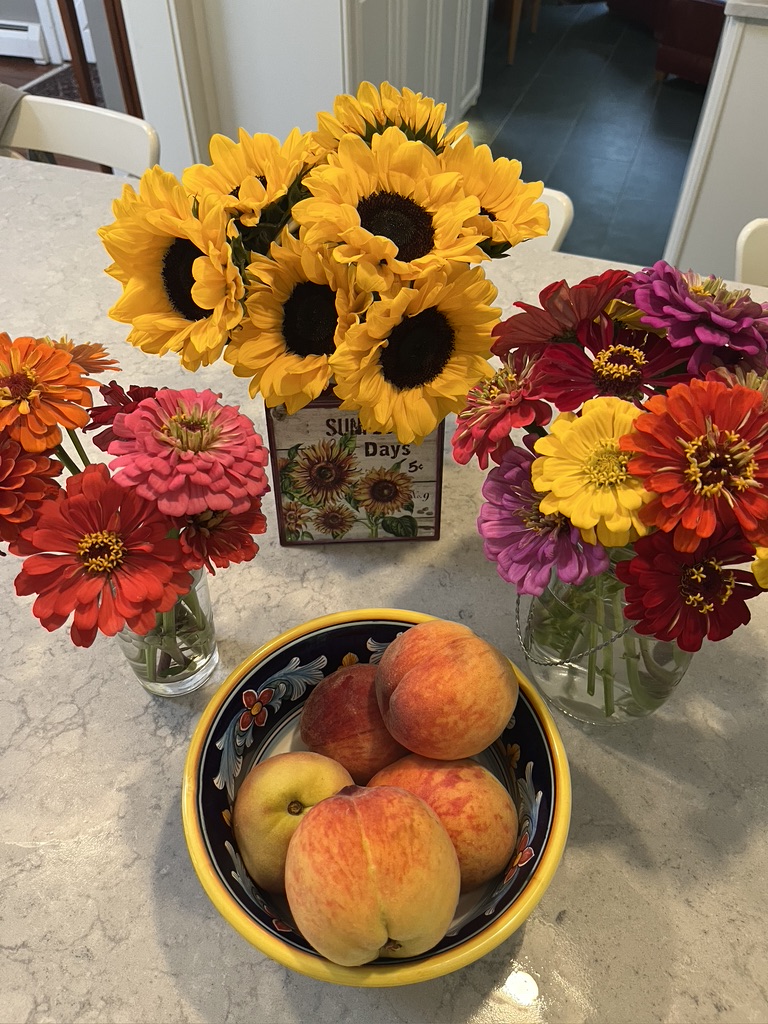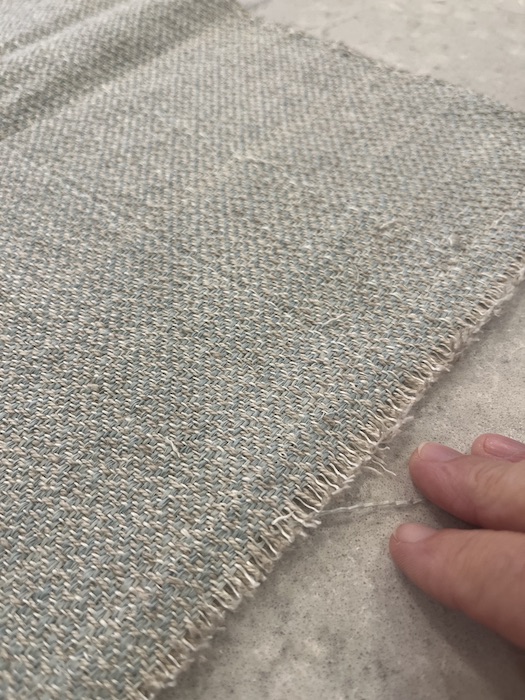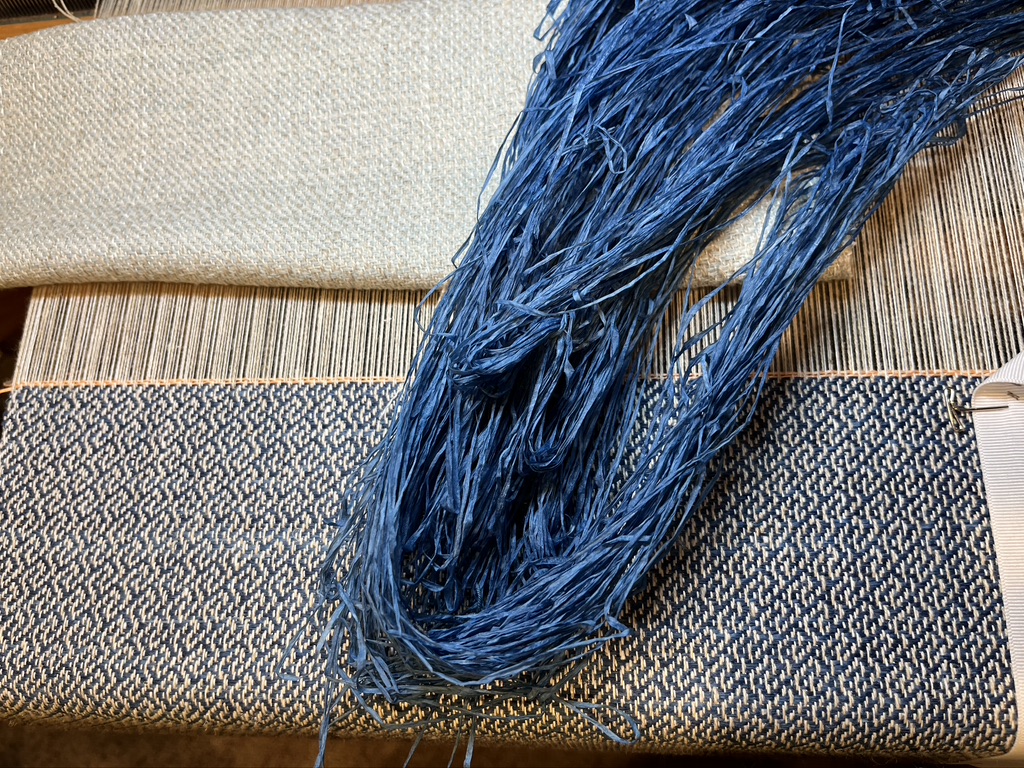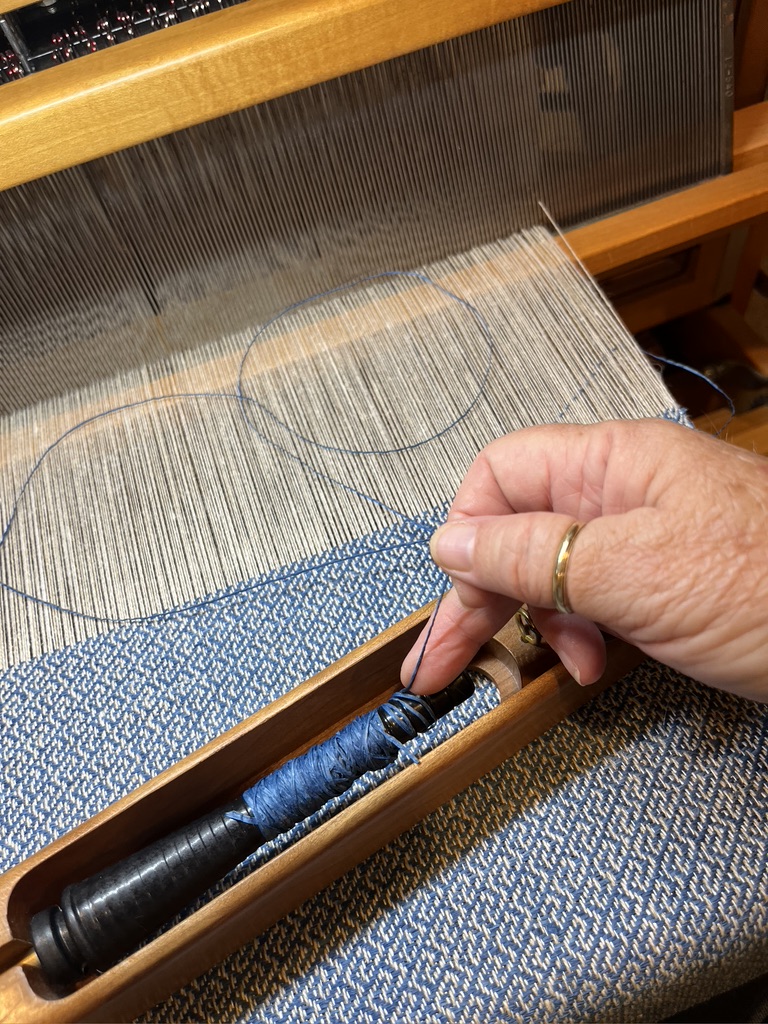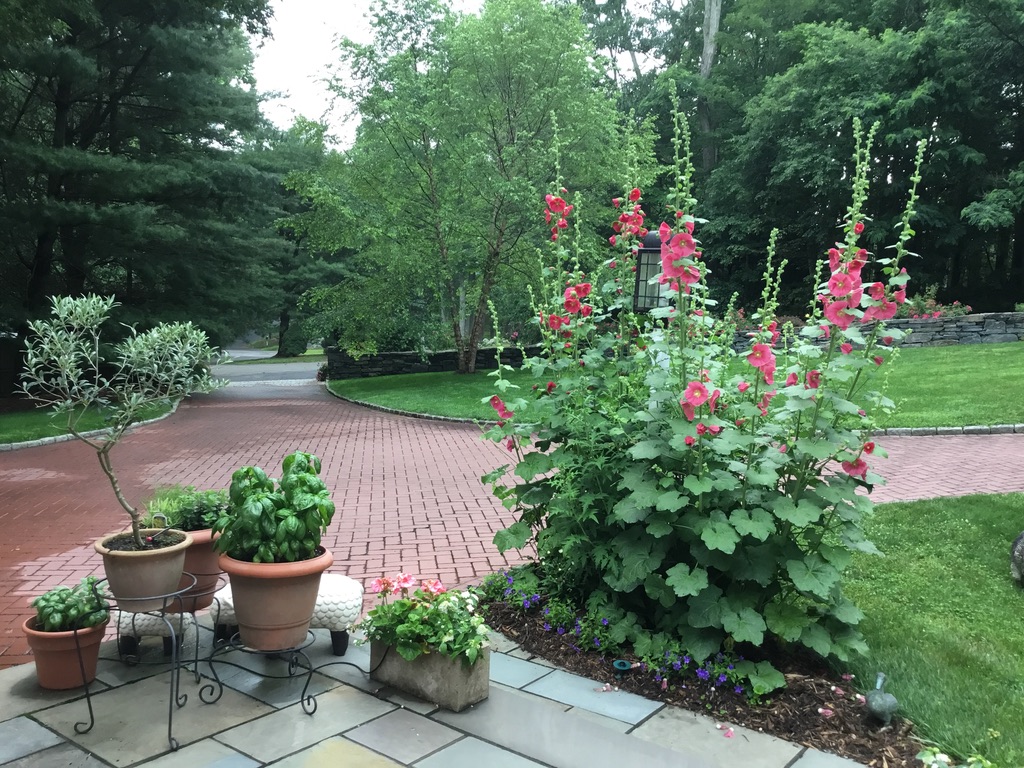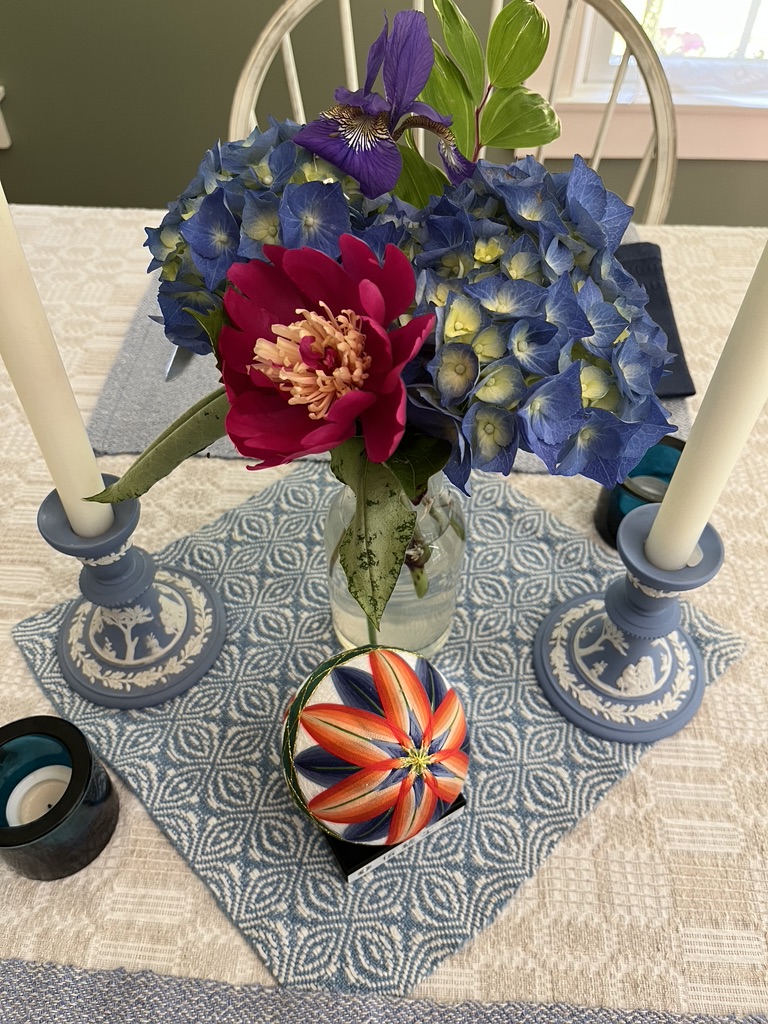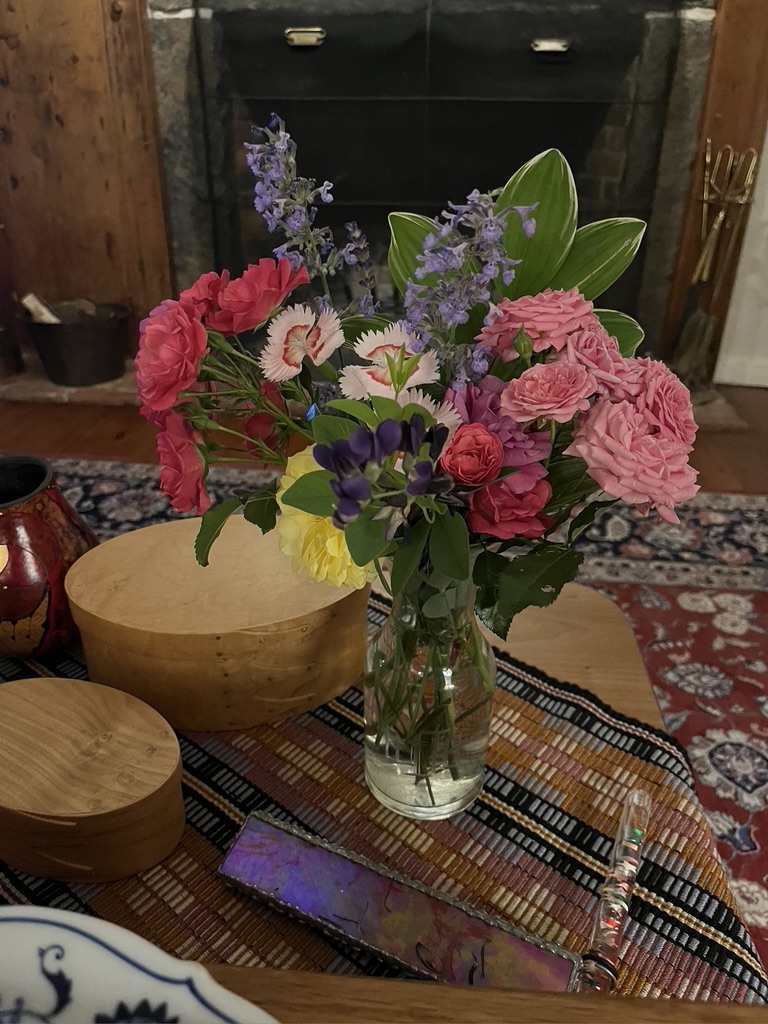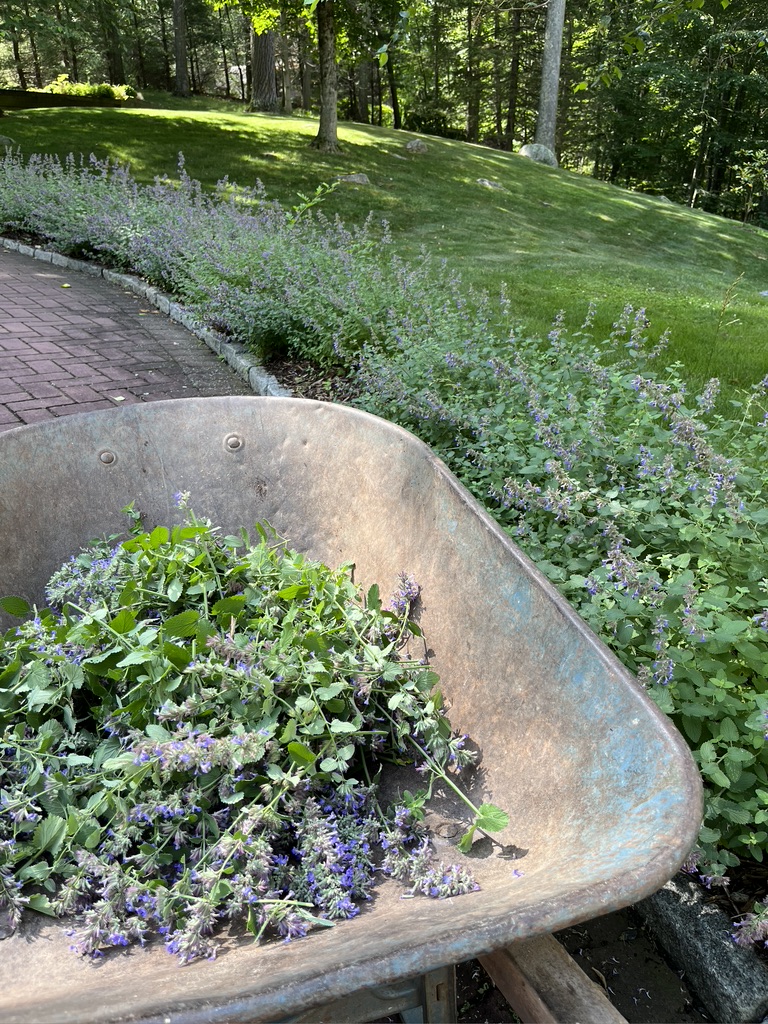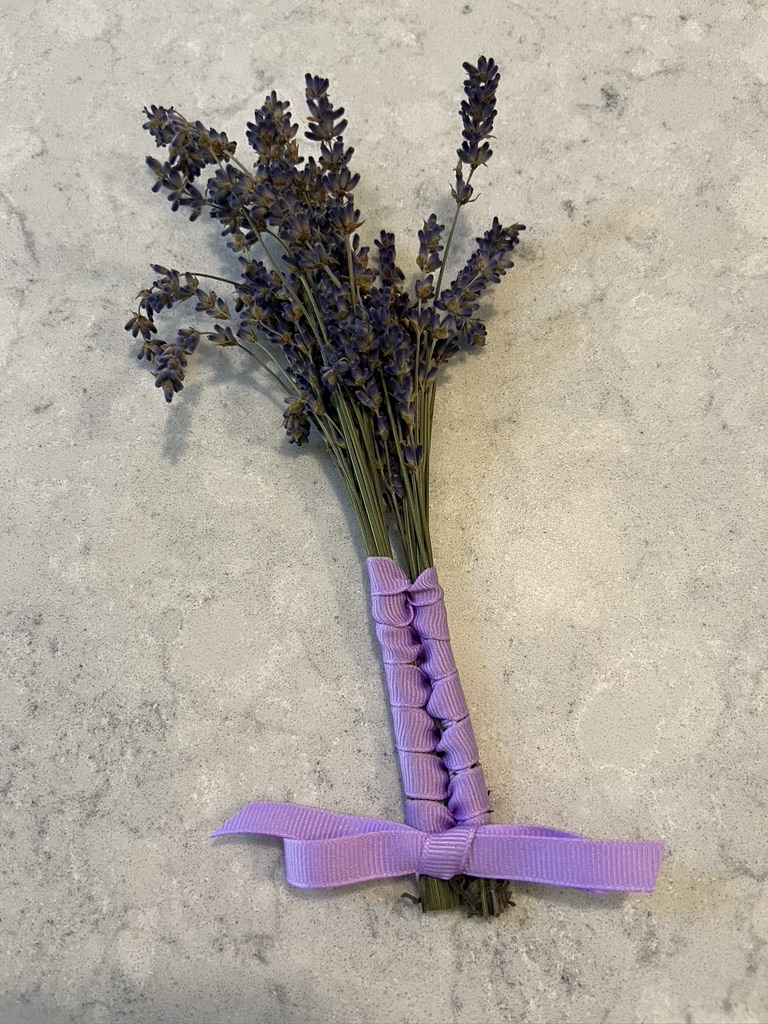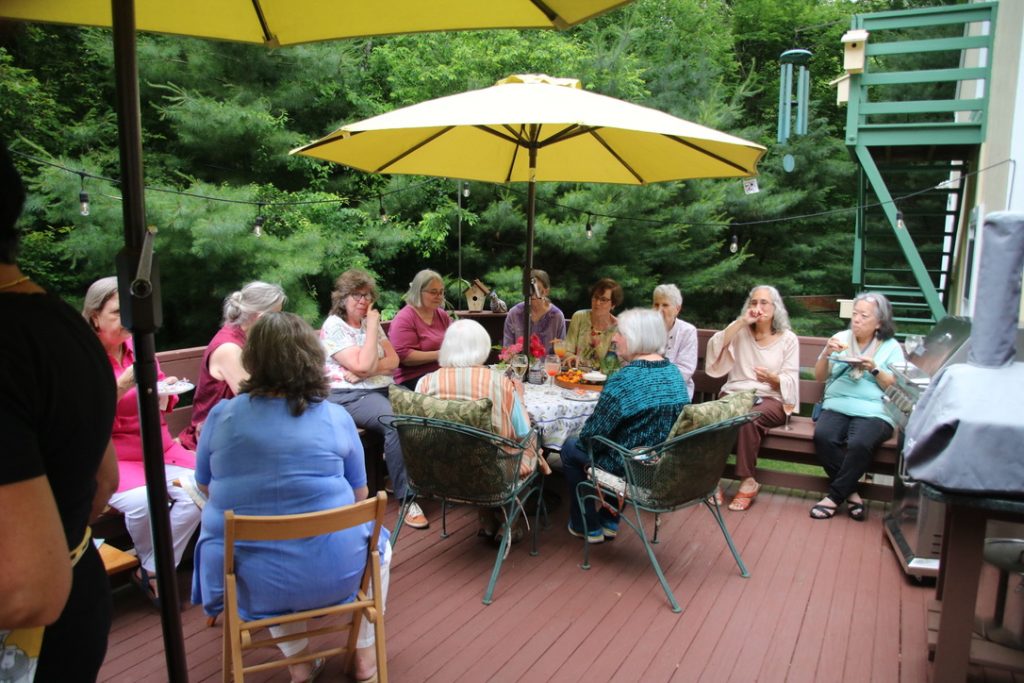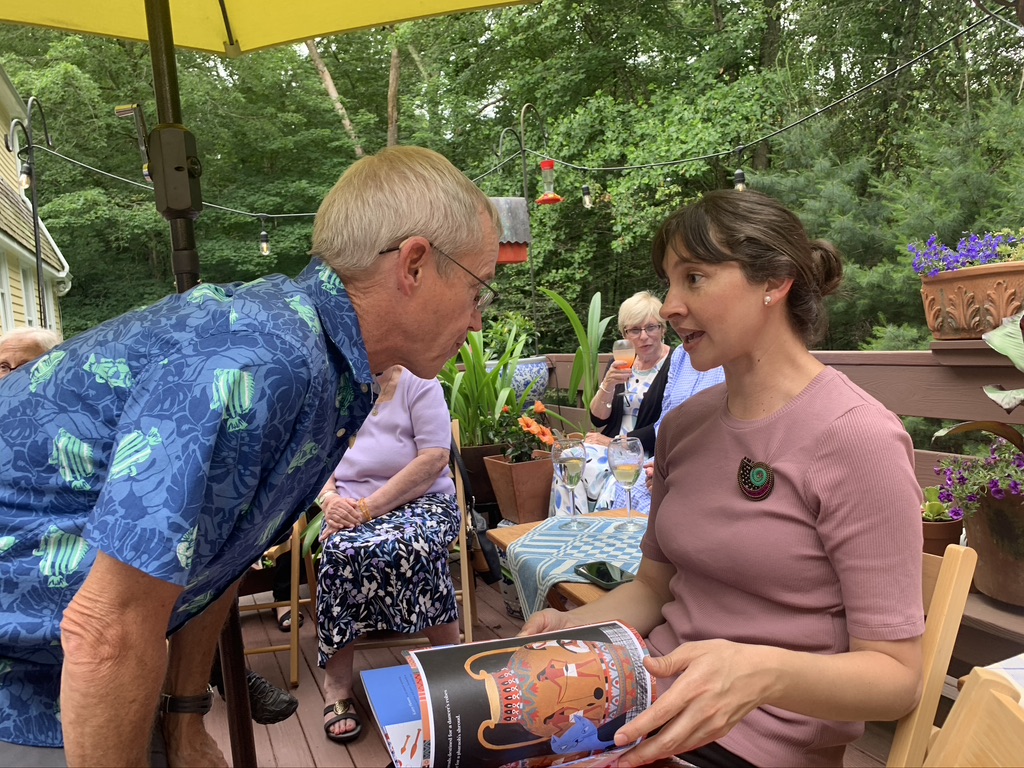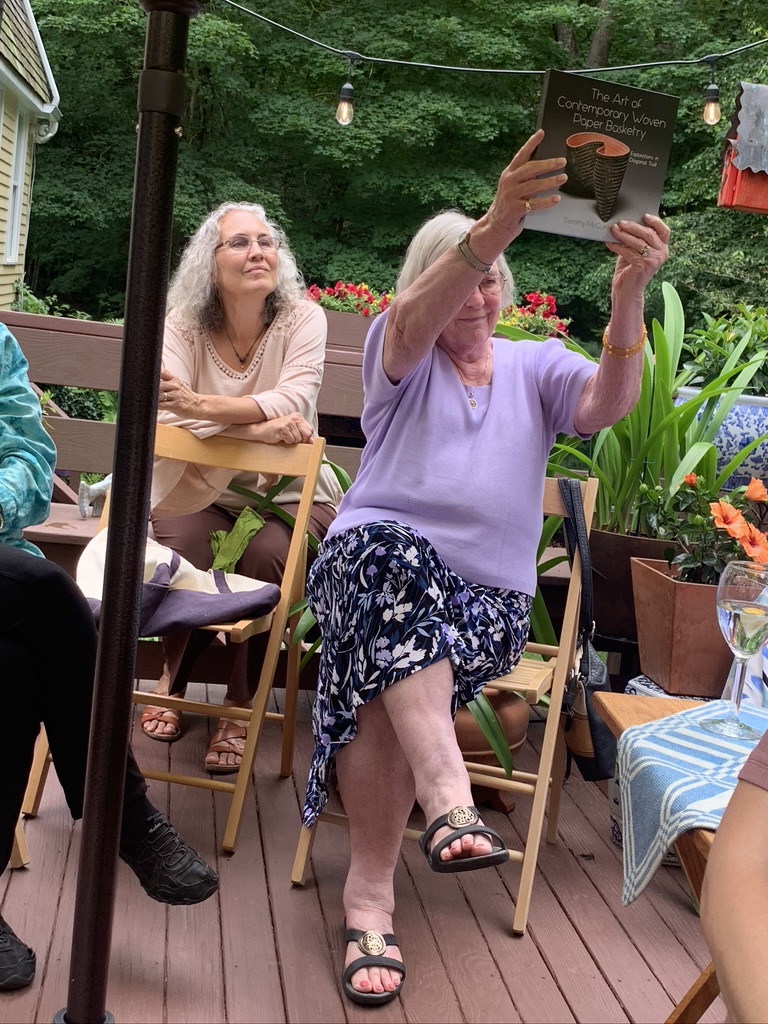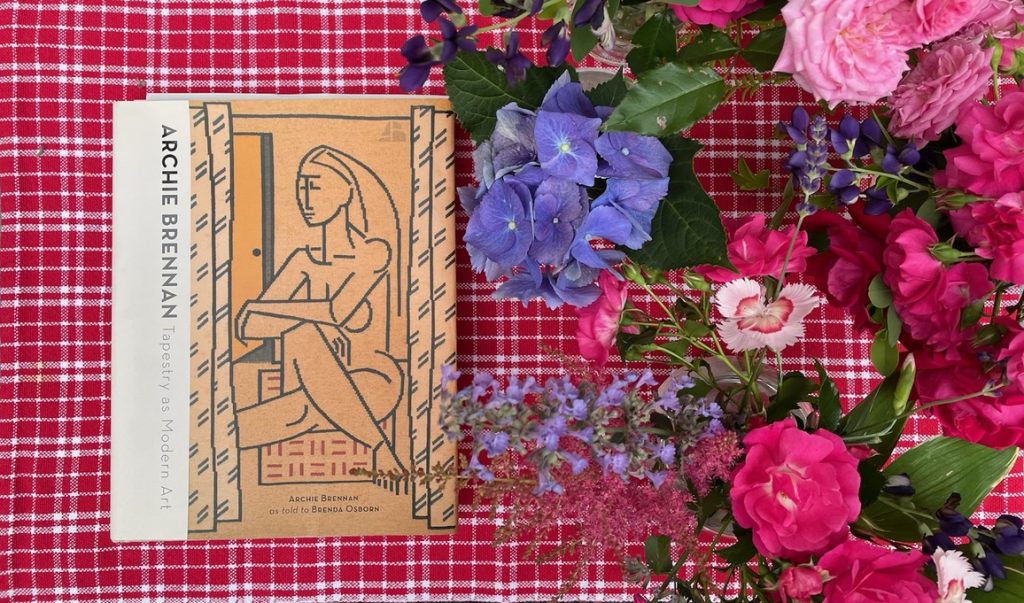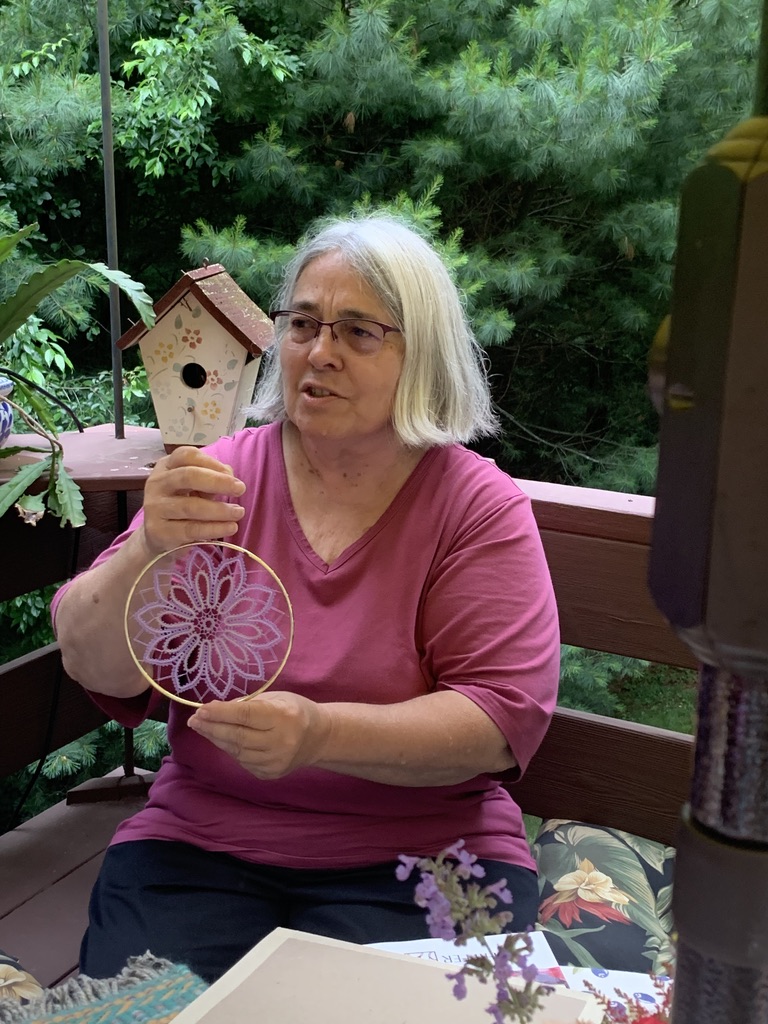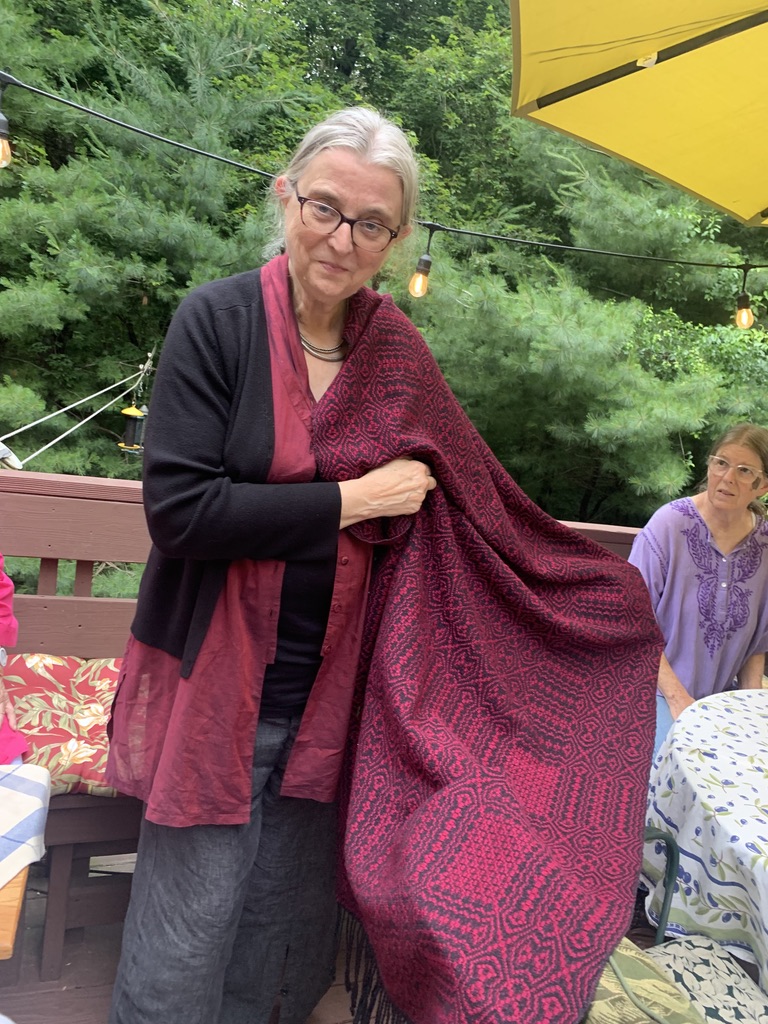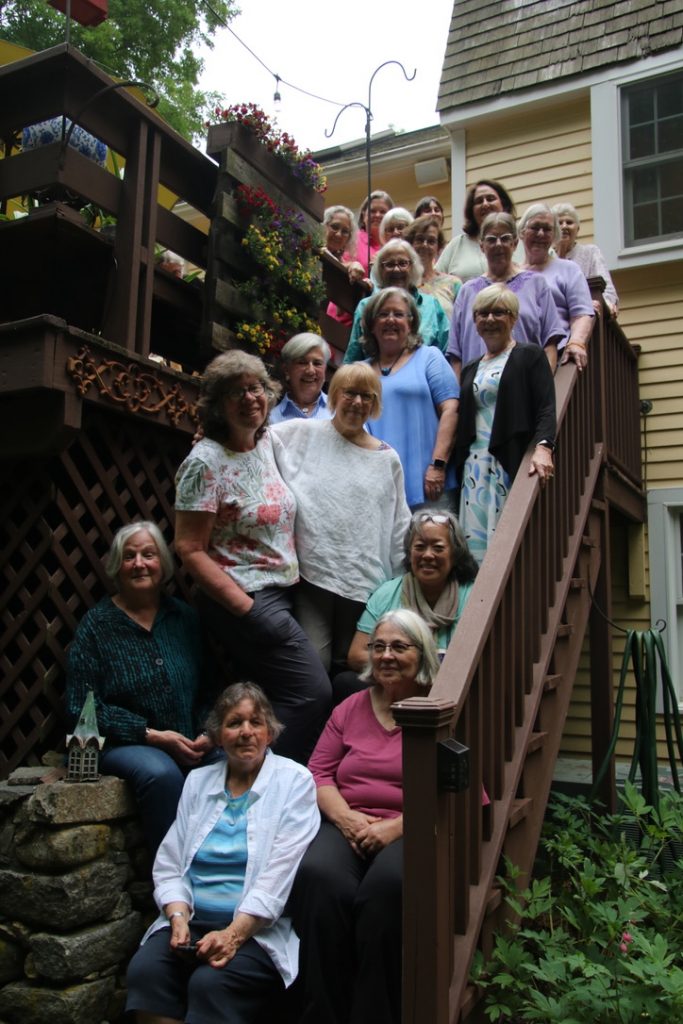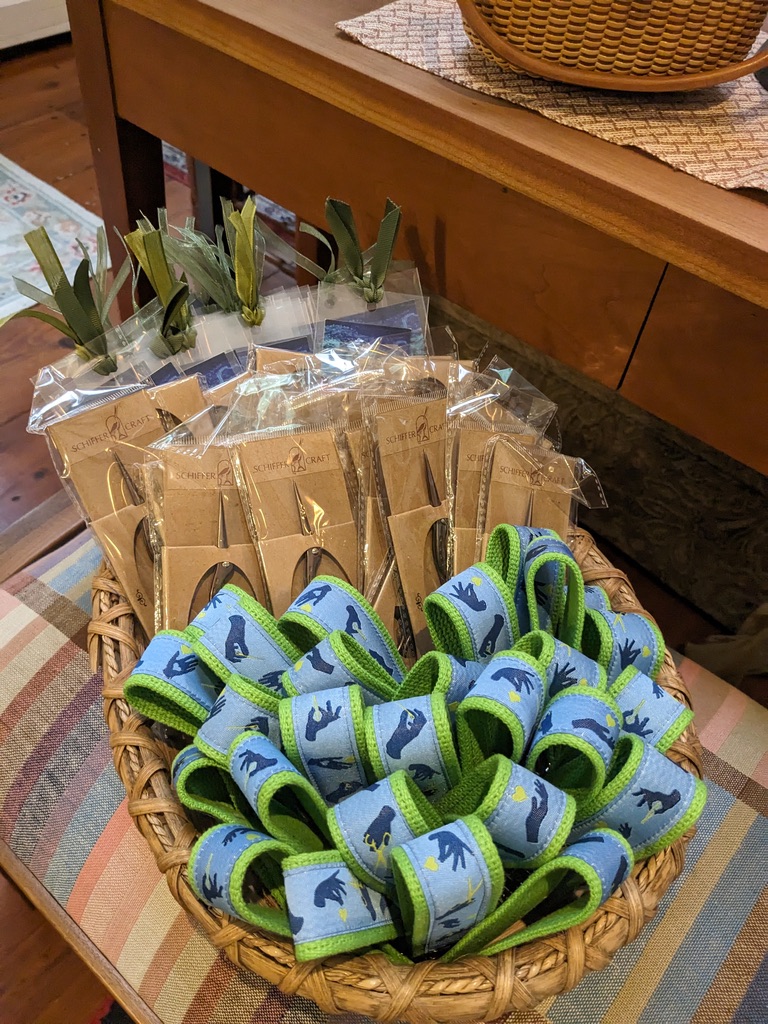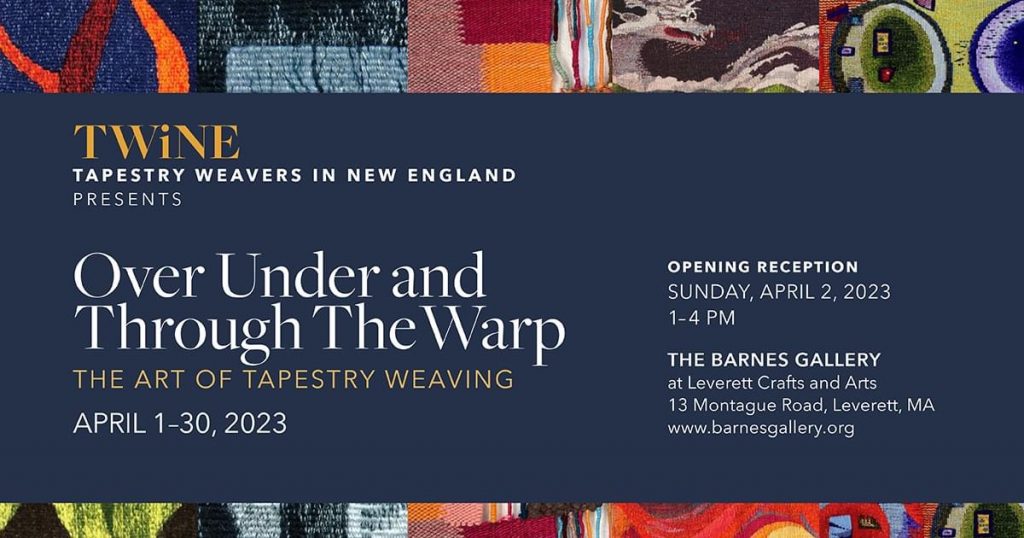Here I sit in English Harbour, Antigua, thinking about my recent return from Umbria, Italy, and the highlight of my time there: a visit to a jacquard weaving museum and atelier in Perugia that is housed in a 13th c. Franciscan church.
Perugia became a walled city in the Middle Ages, prior to the building of this church in 1212. It was originally a simple hermitage that was founded by St. Francis of Assisi when he and his followers stayed here together. By 1252 the monastery was ceded to Benedictine nuns and given the name San Francesco delle Donne. St. Francis of the women—for the women? It was abandoned numerous times through the centuries, and I don’t know those stories. Our host at La Romita, the art school where we were taking a workshop on tapestry weaving and natural dyeing, mentioned that Perugia defended itself many times over the centuries. Most of the conflicts had to do with the vying city states and their status in the Catholic Church, and throughout the Middle Ages Perugia was an impoverished place, in spite of their reputation for excellent craftsmanship in pottery and textiles, and probably other fine crafts that I haven’t found in my searches. There is some great information on the Giuditta Brozzetti website.
The Brozzetti family started the weaving museum and atelier in 1912, but not in its current location. The museum is named in honor of the current owner’s great grandmother, Giuditta Brozzetti. Giuditta started an atelier to bring back the historic handwovens of Perugia, especially the “Perugian tablecloths” that were often used as altar cloths in churches, as well as being tablecloths in the homes of the very wealthy. Textiles were far more valuable throughout history than they are today and were always listed in the inventories of wealthy families. The atelier and museum moved to this magnificent site in the church in 1996. I believe it took a lot of work to bring the church into state we see it today. It is magnificent!
Here is an excerpt from an interview with Marta Cucchia, the great granddaughter of the founder and current owner:
“My studio is one of the last weaving ateliers in Italy – and the only one that reproduces medieval Perugian Tableclothes using Jacquard looms from nineteenth century. Furthermore, with the pedal looms, typical of the Umbrian countryside, we create fabrics using millenary techniques passed down orally from generation to generation. My great-grandmother, Giuditta Brozzetti, founded this Laboratory in 1921. From then on, the passion for hand-weaving was passed down from mother to daughter, each woman bringing her own experience according to her personality and studies.”
Marta has four women who assist her in the studio, and they have all come out of textile schools to make this field their livelihood. What an exciting place to work!
Some of the projects that Marta oversees are replicas of actual textiles in paintings from the Middle Ages and the Renaissance. During our visit Marta showed us a couple of impressive replicas. She had high resolution images taken of Leonardo da Vinci’s “Last Supper,” and she had small areas enlarged so she could study the tablecloth. In hind sight, why didn’t I think to ask her if she thought that cloth had been woven in Perugia?

Even in this low resolution image of the fresco, taken from the intenet, you can see that the tablecloth is highly figured at each end, but also there is a hint that the white on white areas also have interesting weave structures.
Detail of a similar fabric from a different painting:
Here Marta is showing us some of the images she used to design the tablecloth. Clearly I am scratching my head in amazement!
And here is the finished cloth, woven at the Giuditta Brozzetti Atelier:
The jacquard looms in this studio are all from the 19th c except one that is older from the 18 c. These are hand manipulated looms, where the process of weaving involves attaching every thread in the warp to a jacquard attachment that has a series of cards that control the patterns. The weaver stands at the front of the loom and depresses the one treadle (a heavy one that sits rather high off the ground!) with her right foot —yes, they are all women at this atelier. Depressing the treadle opens the shed, and the weaver pushes a lever that is above the beater that engages one of the jacquard cards, then she pulls a cord that sends the fly shuttle through the shed of the open warp. Here is a video of the process, although at this point the weaver is weaving some plain weave between the designs, rather than the more interesting pattern.
Here is Marta showing us one of the many charts of jacquard designs in her collection. These graphed charts are used to make the cards which will control the weaving patten on the looms.
And here is my best attempt at getting a shot of the entire loom. The warp on the loom will be obvious to most of you. The yellow cords anre atracked to each warp thread and are running vertically to a loft area where you just see a bit of the roll of cards used to weave the design. There are other ‘chains’ of cards being stored on the railing of the loft.
I neglected to count how many jacquard looms are in this large studio, but here’s a photo of the long row of them in the museum.
Many traditional Perugian designs can be woven on regular shaft looms with floor treadles. Marta demonstrated this on what looks like an equally old loom to the jacquard looms.
Here is particularly stunning tablecloth woven on a shaft loom in a traditional woven structure with luscious colors. I tentatively asked if it was for sale (and the price) and learned that Marta wove this tablecloth for her wedding. What a treasure…
During the time when Marta’s mother led this studio they produced some designs for clothing. During Marta’s tenure she has also had commissions from Italian haut couture houses.
These dresses were designed and woven here, and I’m guessing this occurred in a past decade, perhaps the 1960s? 1970s?
There are other modern designs available here. This is quite a striking pattern that was for sale as a shawl or a cushion.
While we were there one of the weavers brought out this tiny gem woven in the same structure. They are not yet available, but as soon as they are I need one! I’m sure they will be popular. When I posted a photo of this Facebook some of my friends immediately asked how to get one.
This is my prize purchase from the day, a gem that gives me a little shiver of thrill whenever I take it with me somewhere. It is equally beautiful on the inside, lined in a fine silk fabric from Fendi.

Marta and I also discussed some of the fine finishing that goes into many of the pieces they make. In particular, Marta’s mother adds a beautiful bullion edge to some of the table runners. I must give this a try on some of my handwoven projects. I bought a small runner that I cannot show you because it is at home, and I am writing this in Antigua. Mine is off white on white, with jacquard designs at each end, and the point twill design in the middle. This one is far more elaborate, but I want you see the bullion stitch edges.
Each one of the pieces woven here are exceptional examples of textile skill. In many parts of the US, textiles are no longer valued as they deserve. I hope we can bring some of that respect and awe back into our lives. My house is full of my own handwovens, and sometimes I marvel that many of my guests don’t realize that. I’m not sure people even see textiles anymore, beyond noticing someone in a beautiful dress. There is so much to marvel at in the world of handmade cloth. The Giuditta Brozzetti Museum and Atelier has to be one of the best places to go and relish the beauty of handwoven goods. Get there if you can! If not, there are beautiful images and descriptions on the website.

























